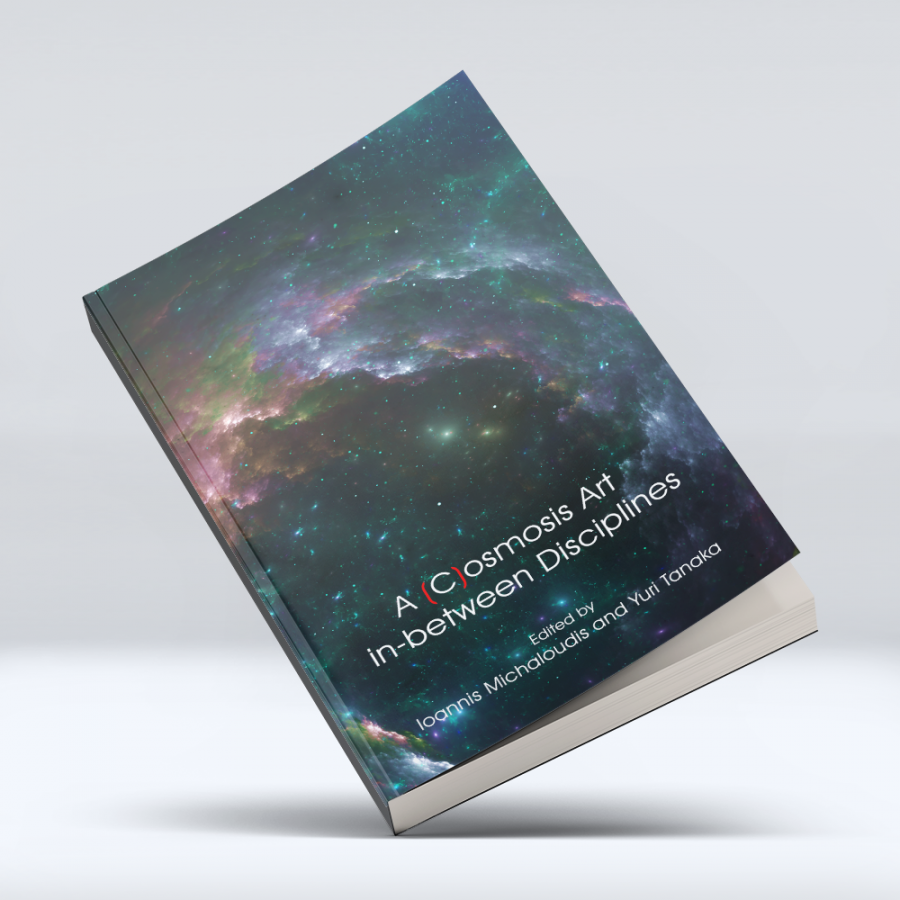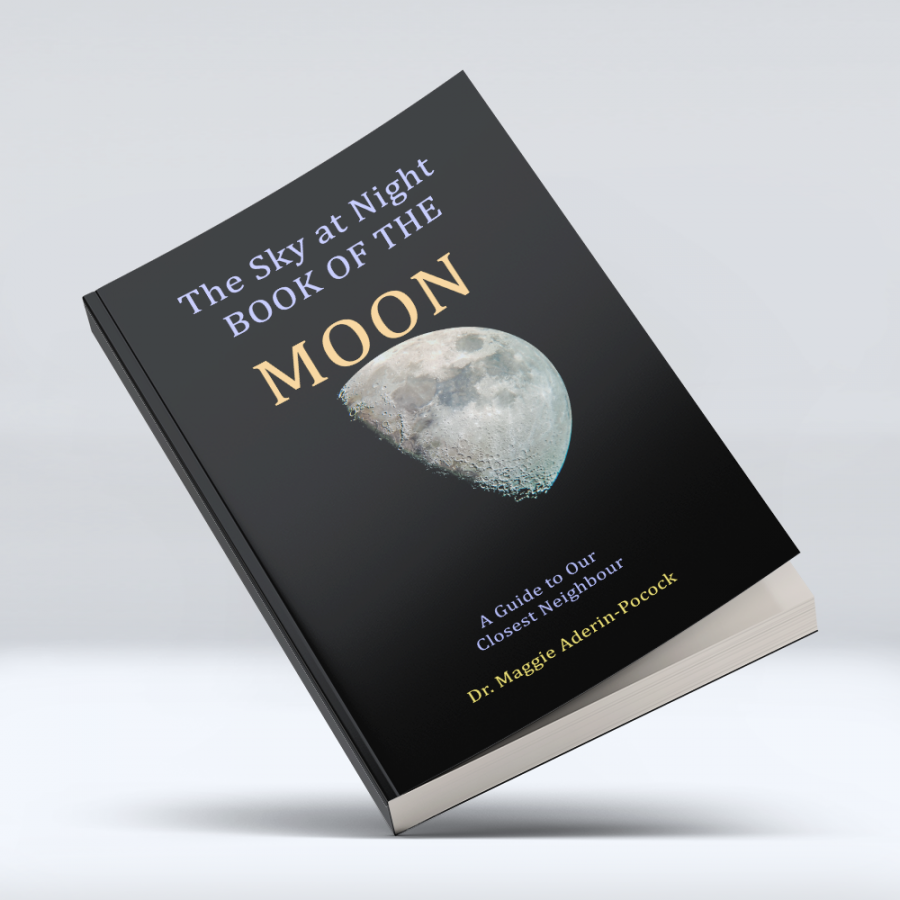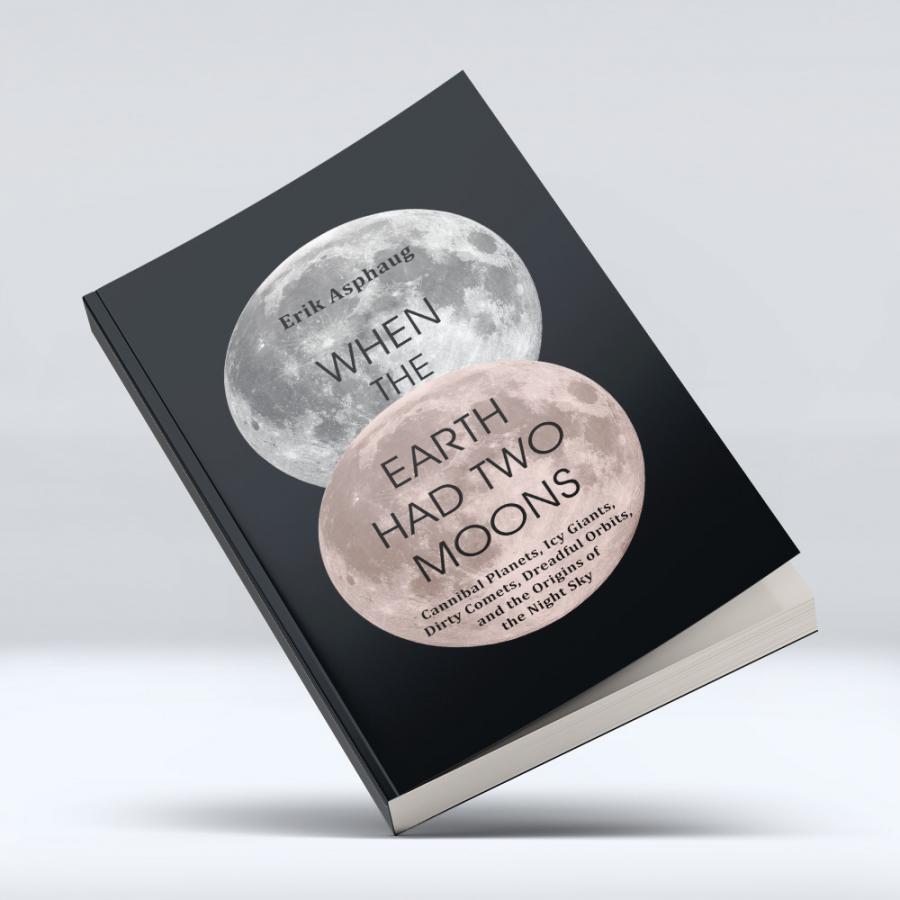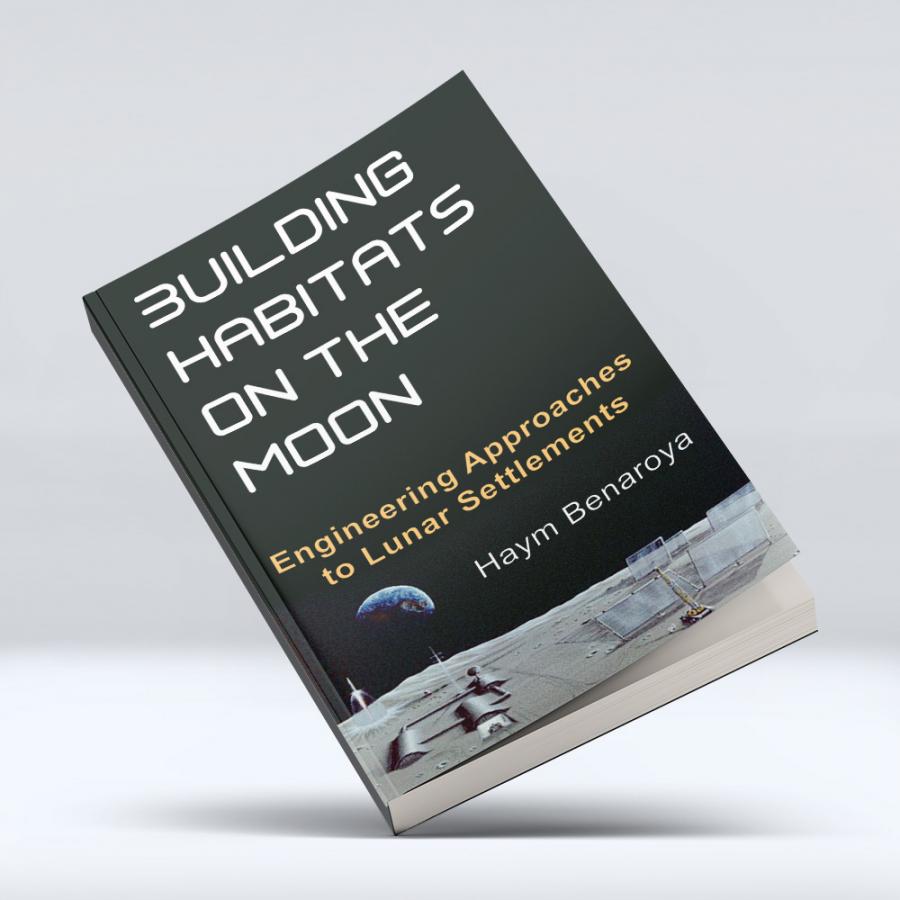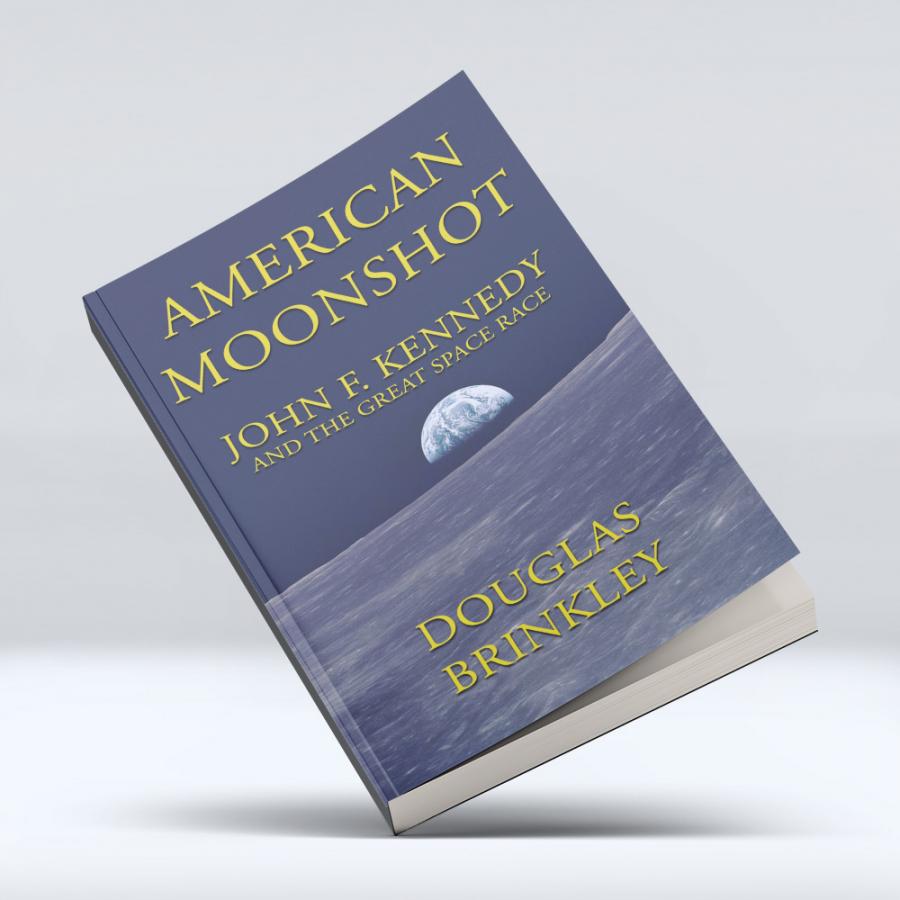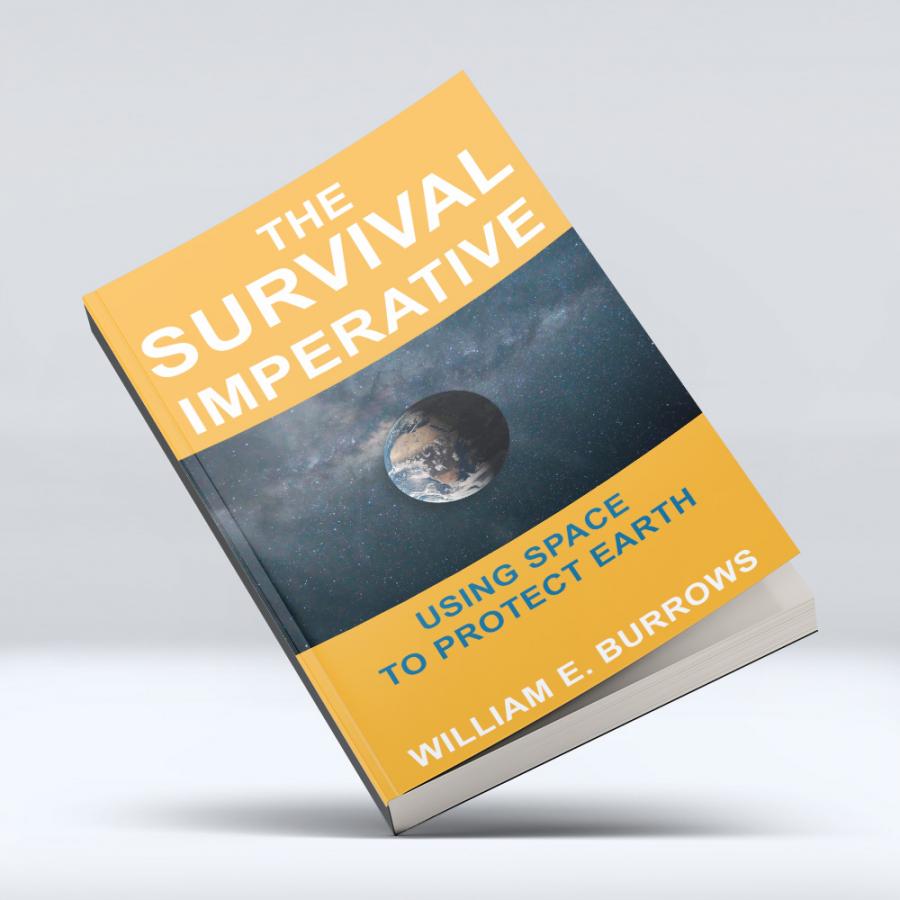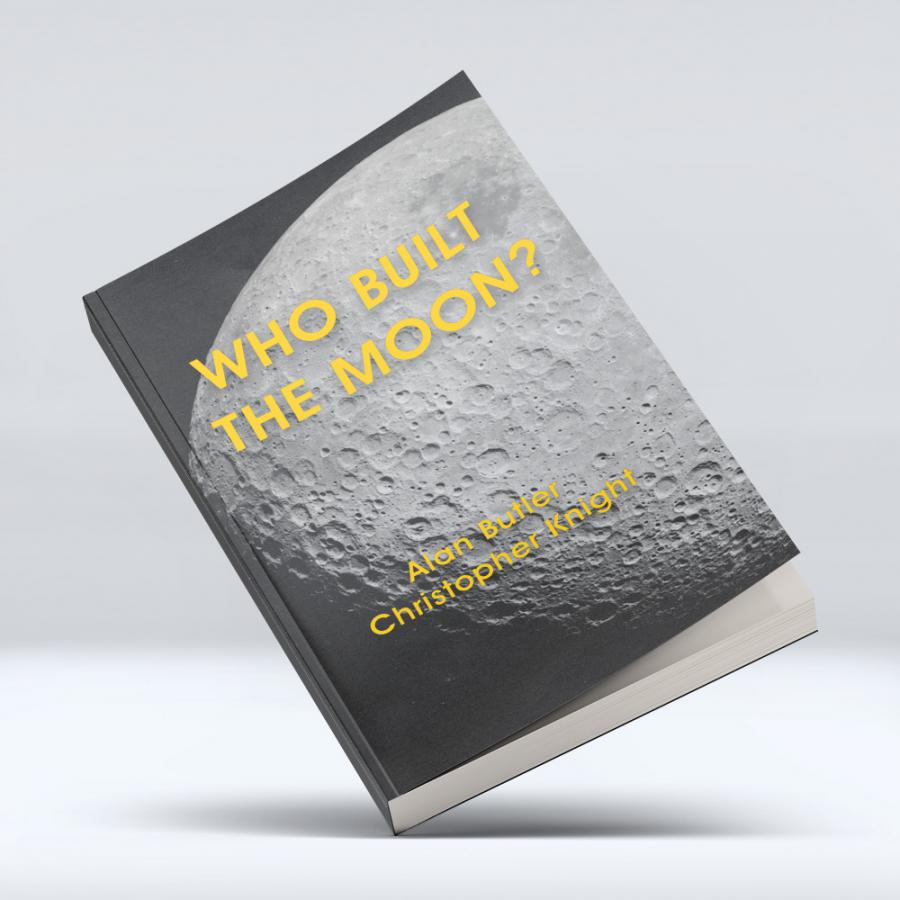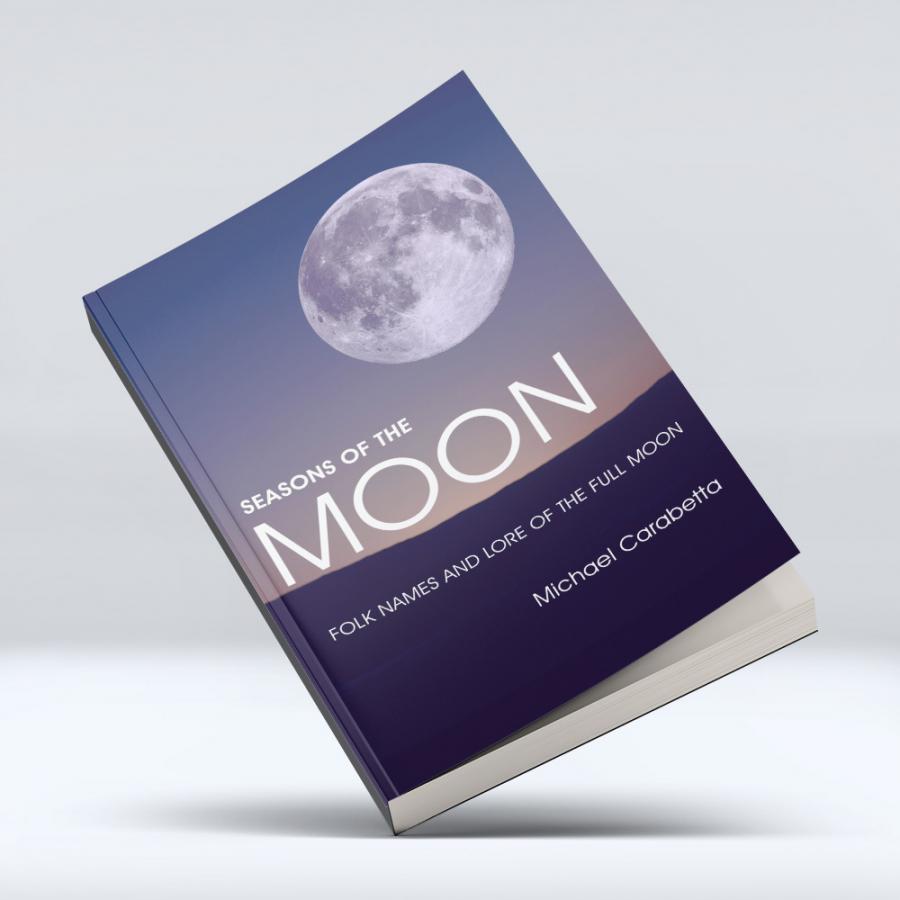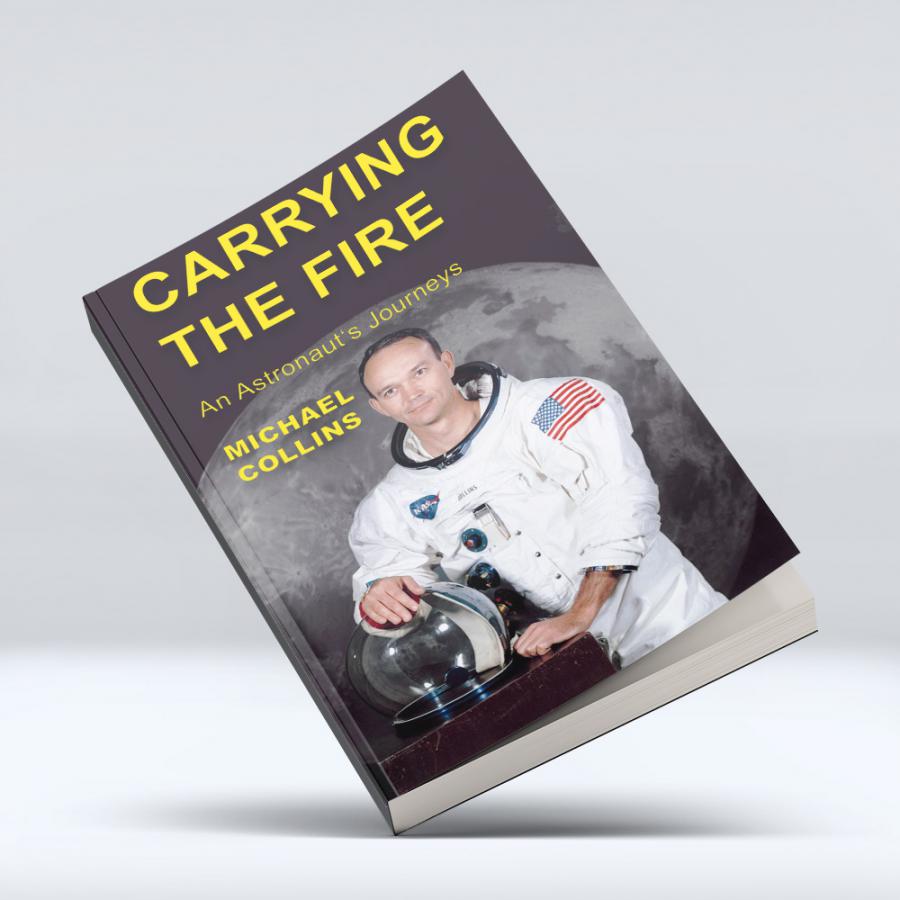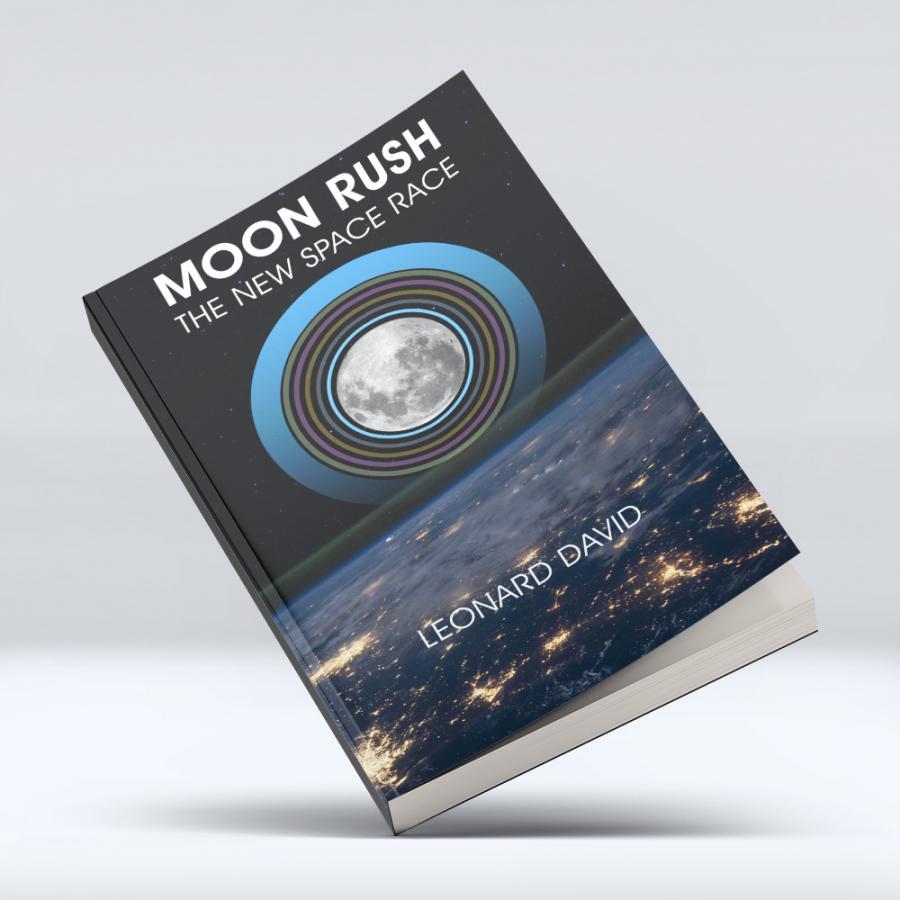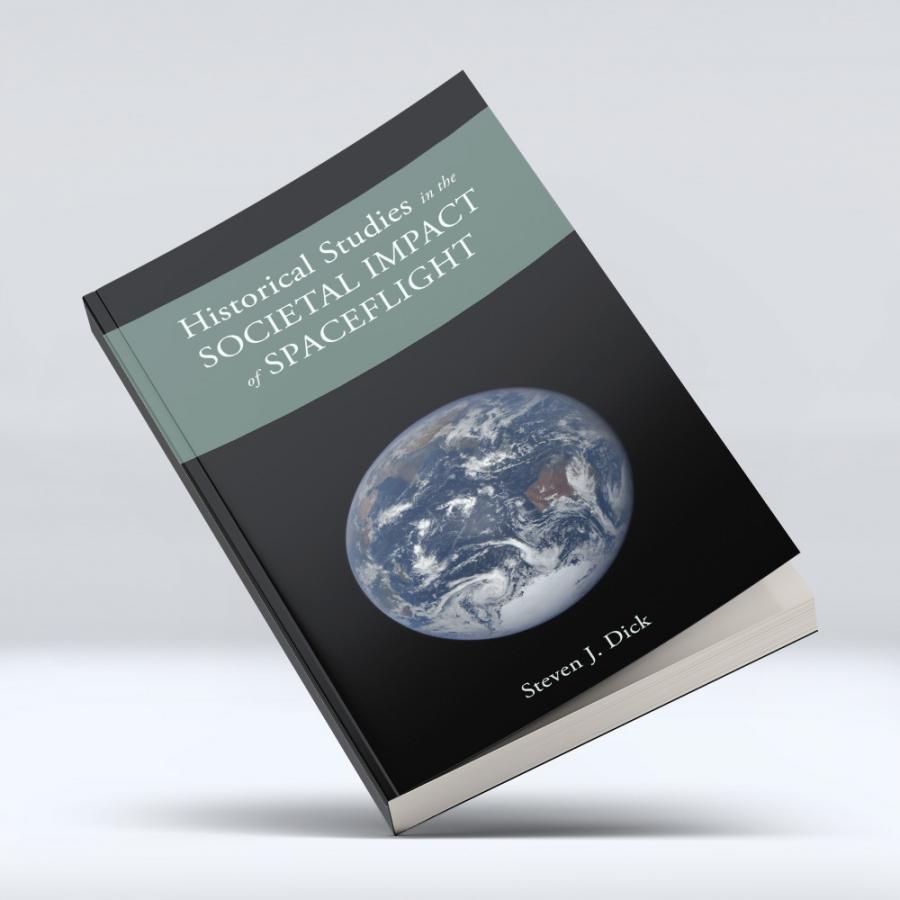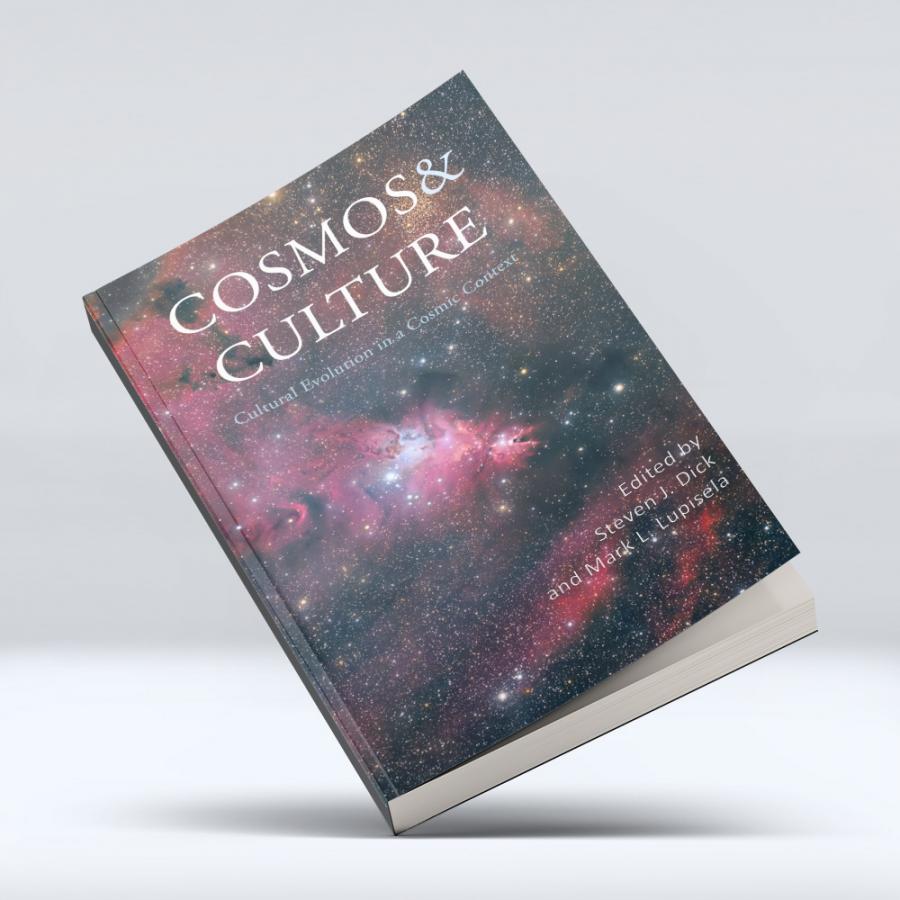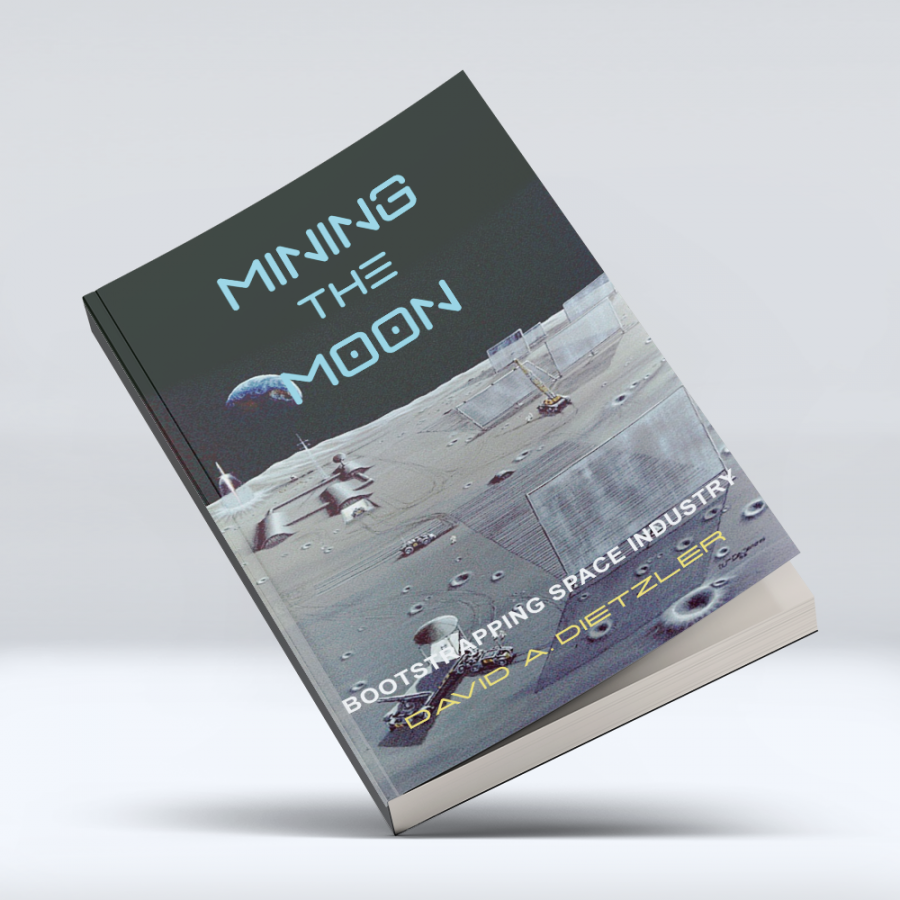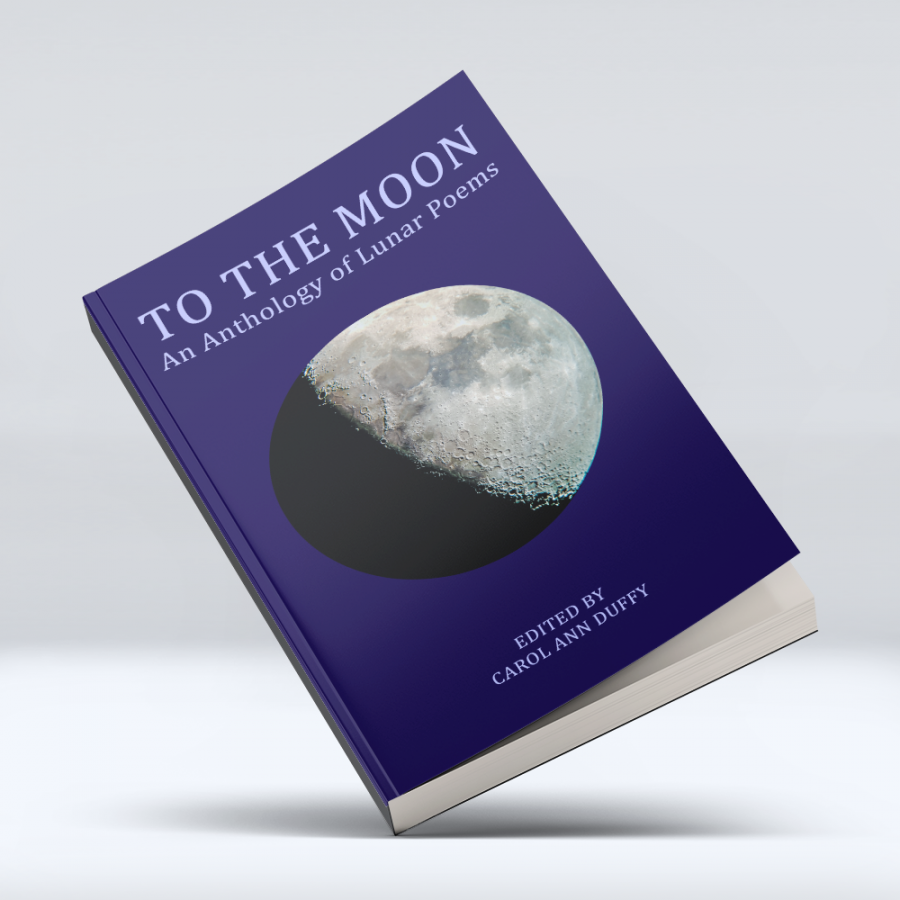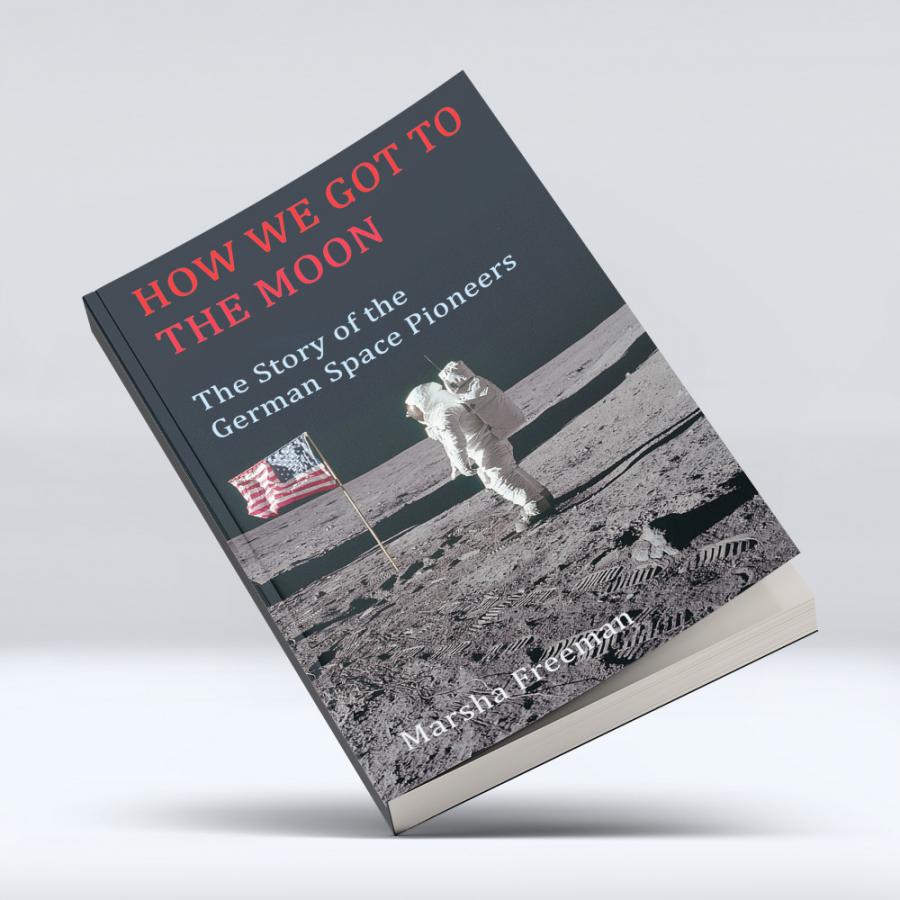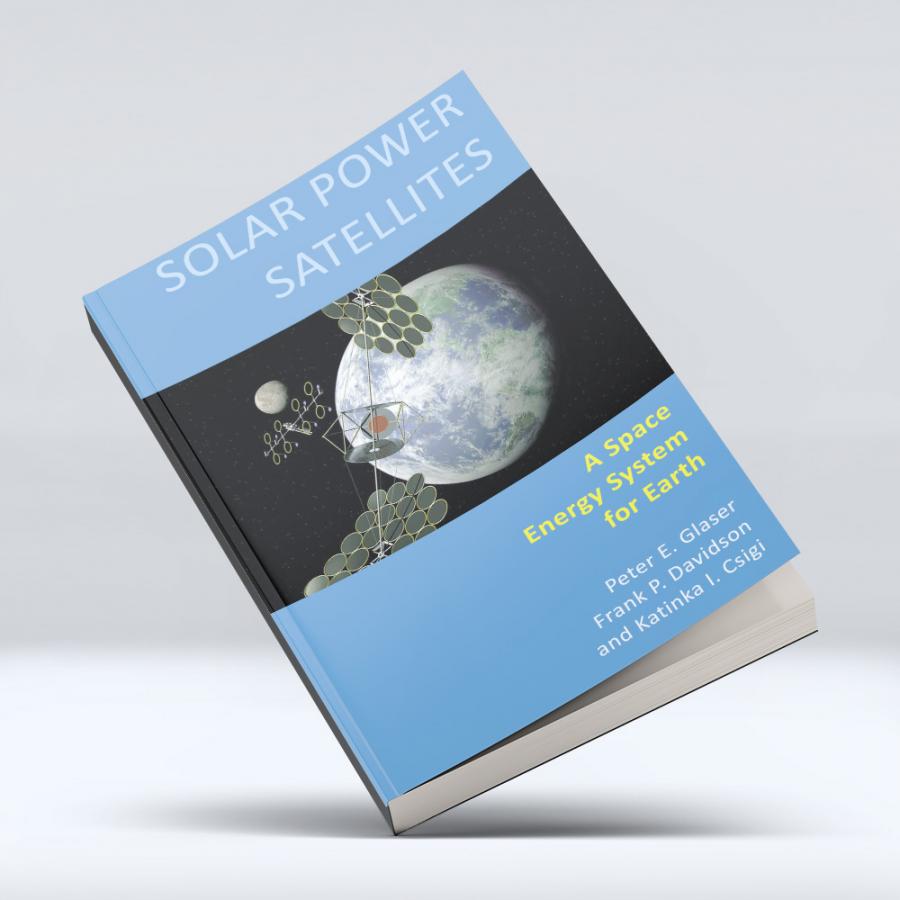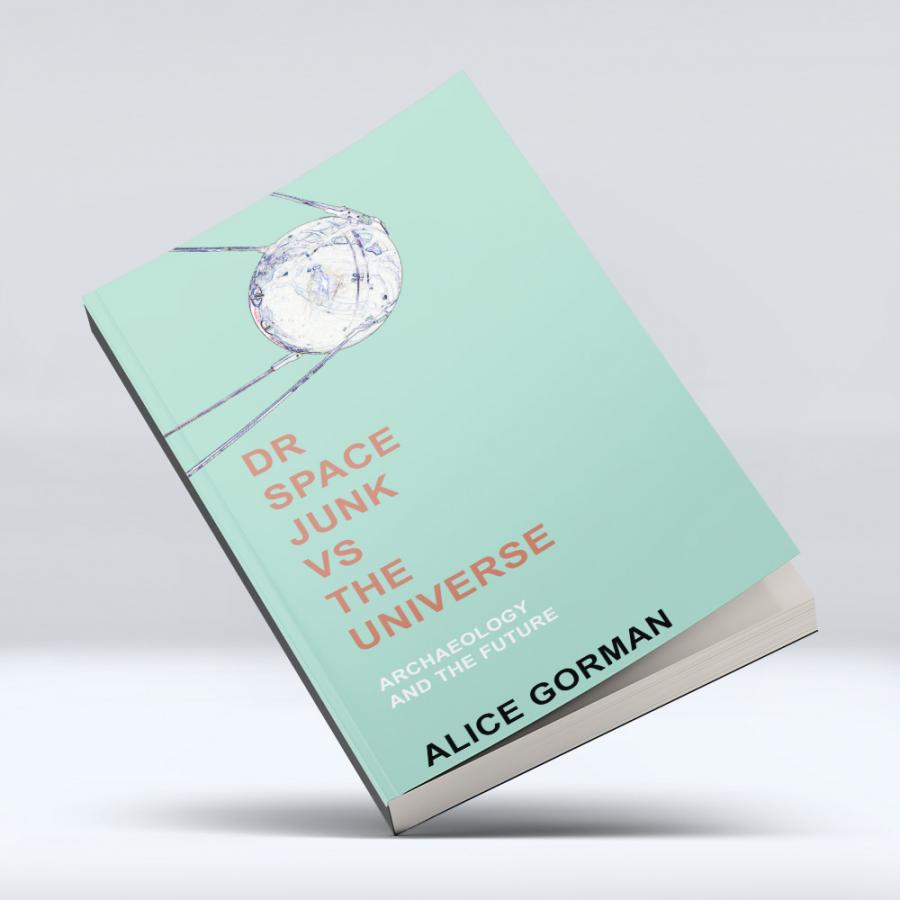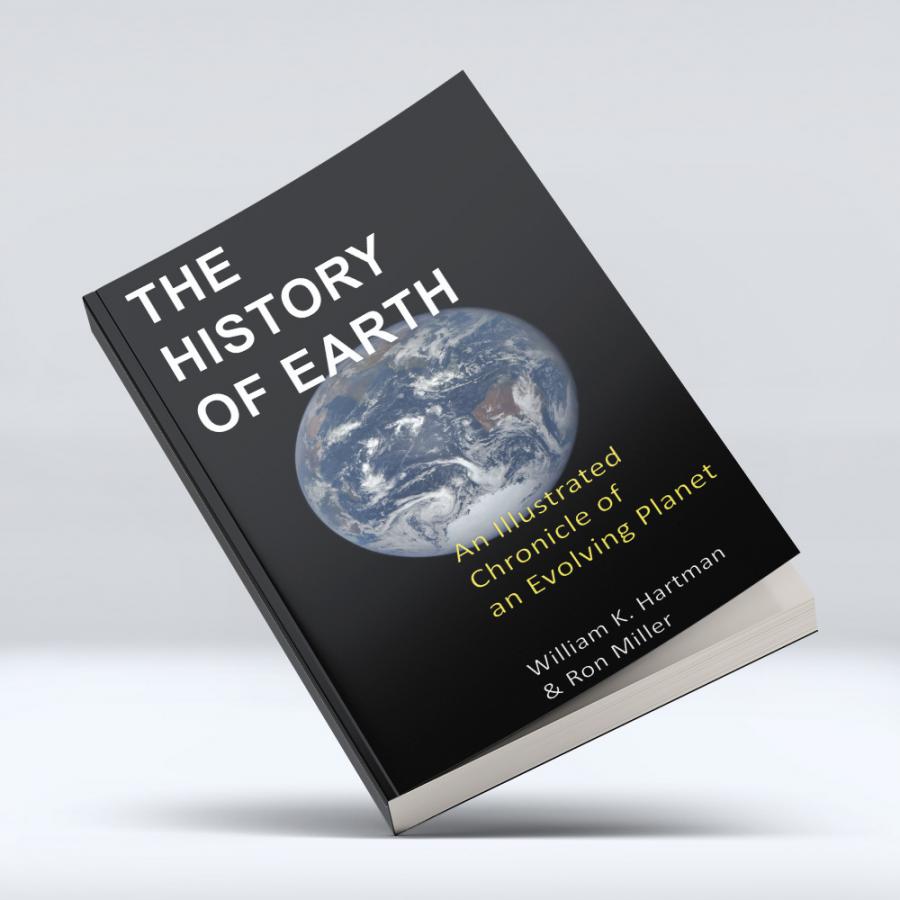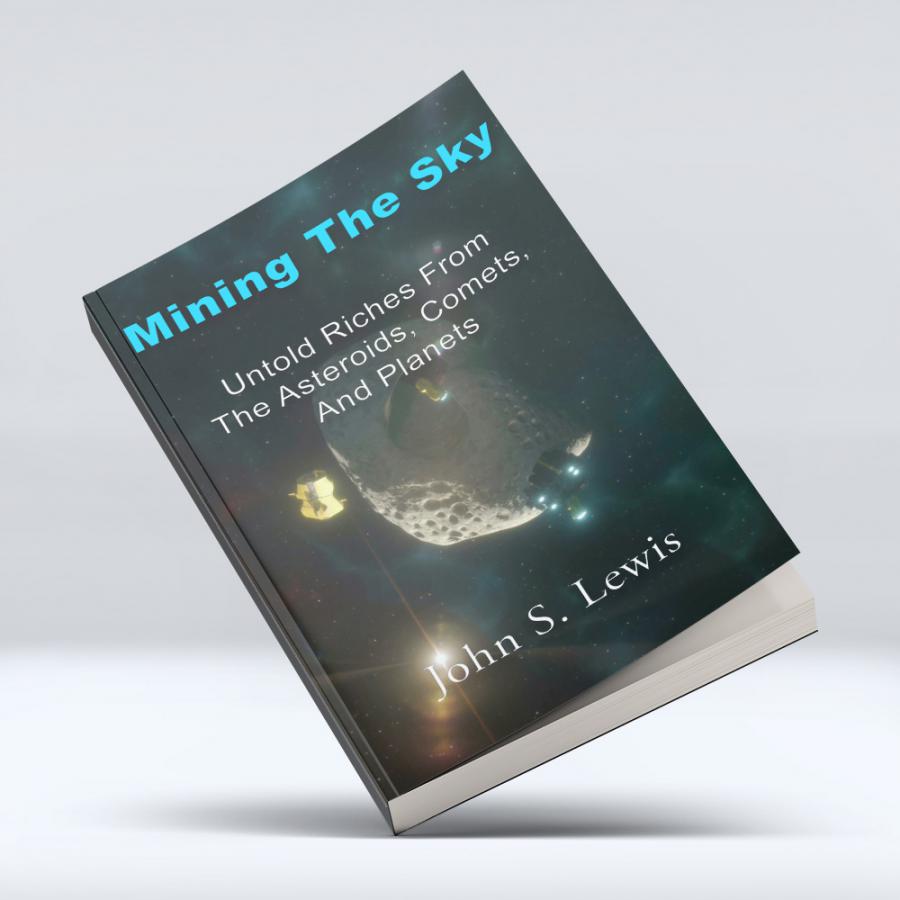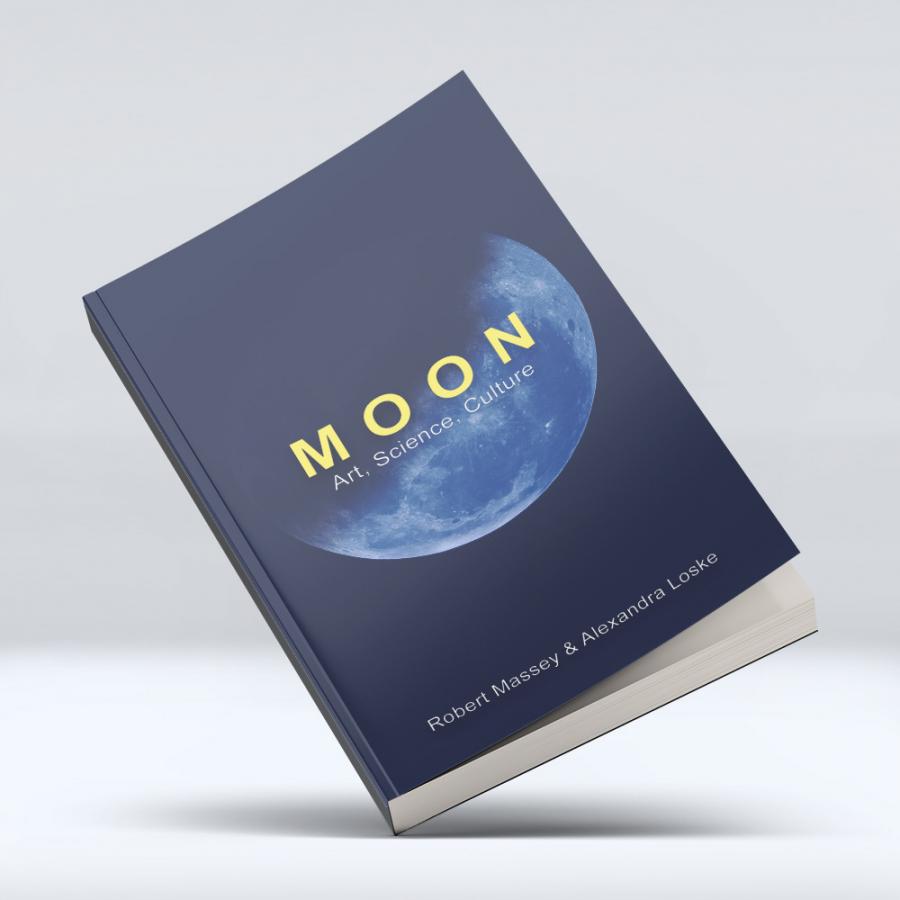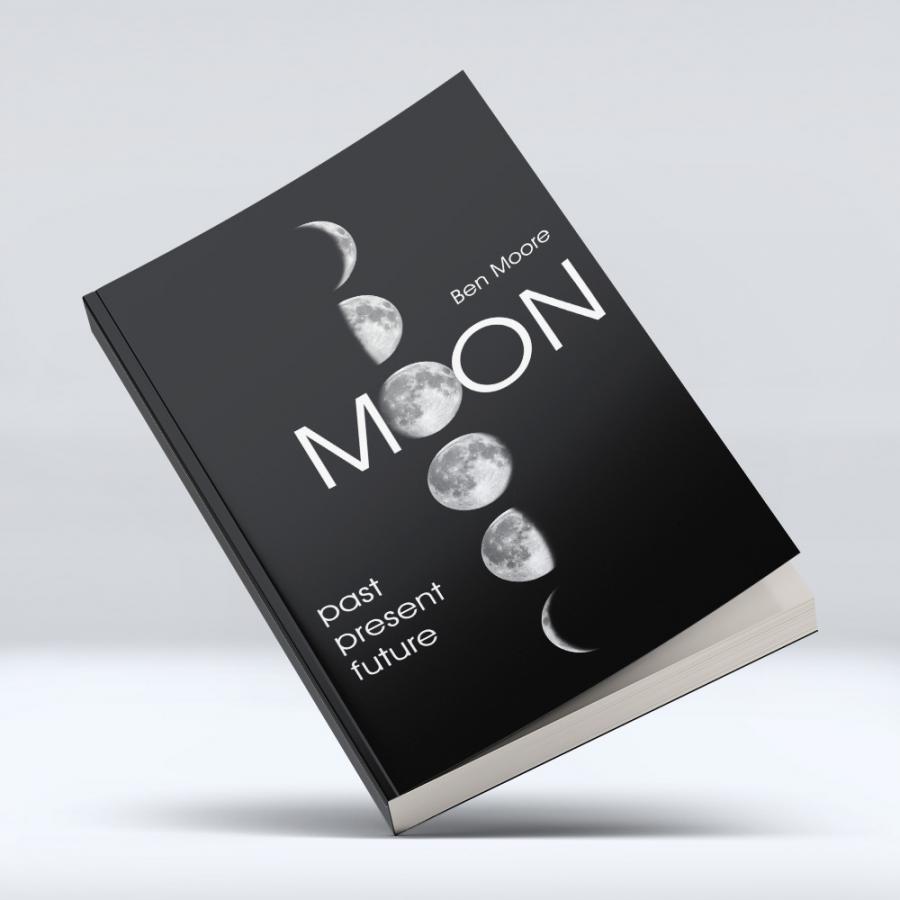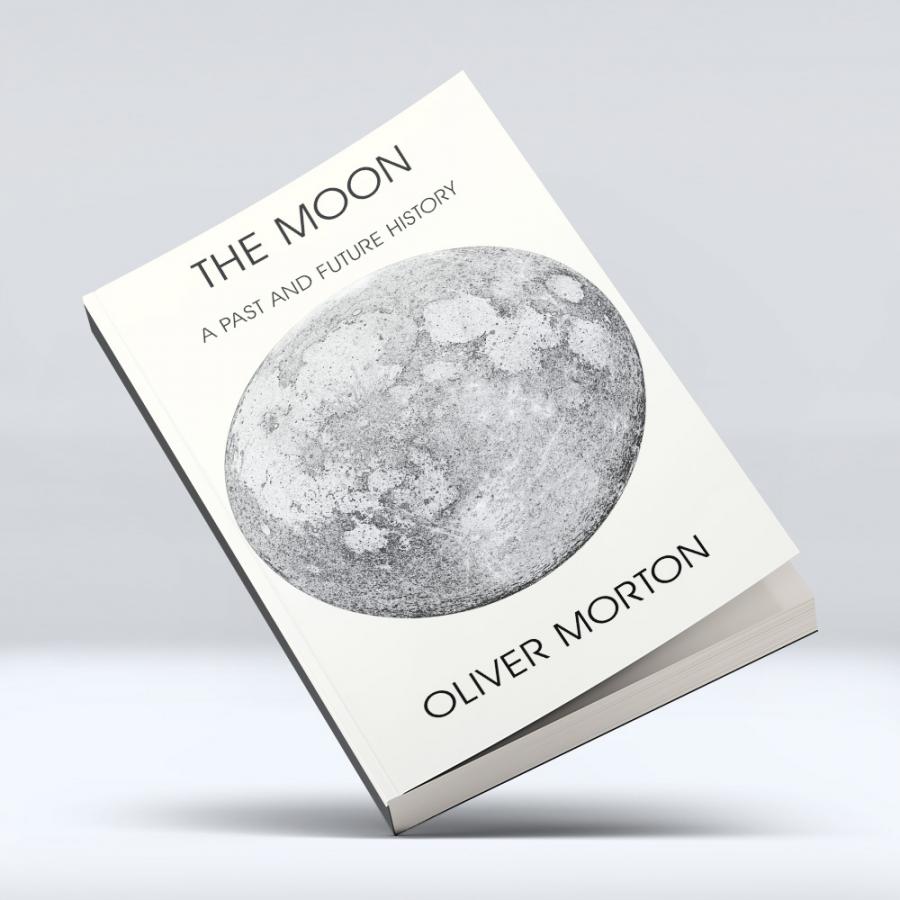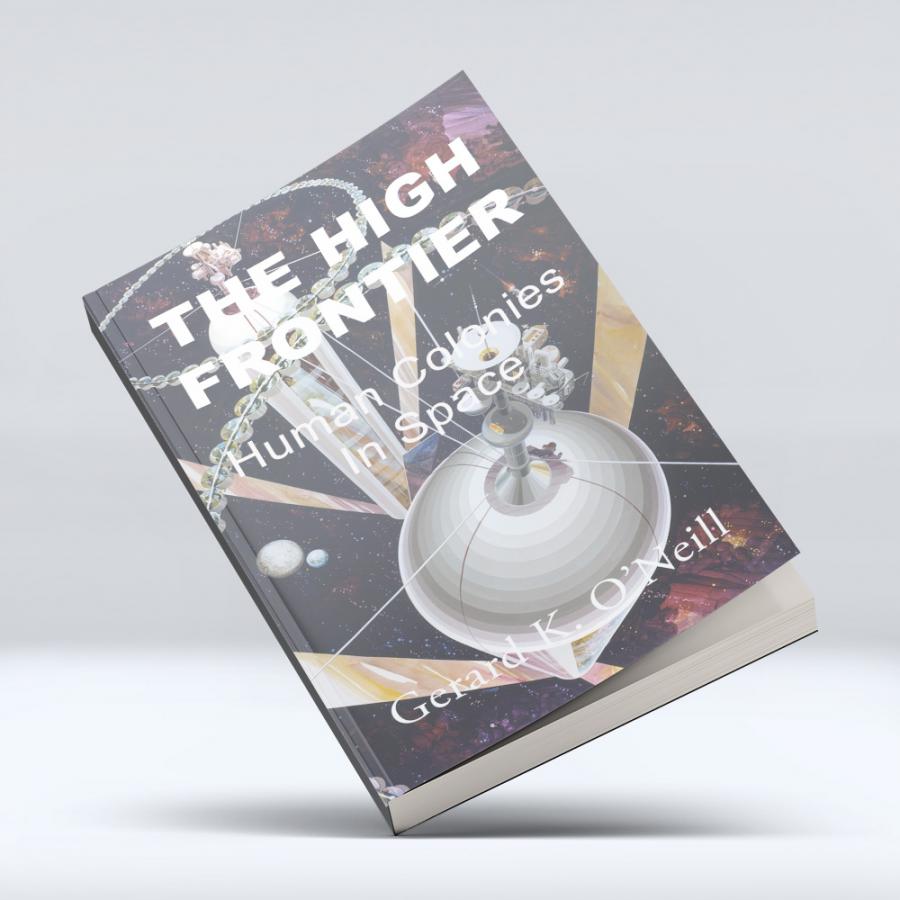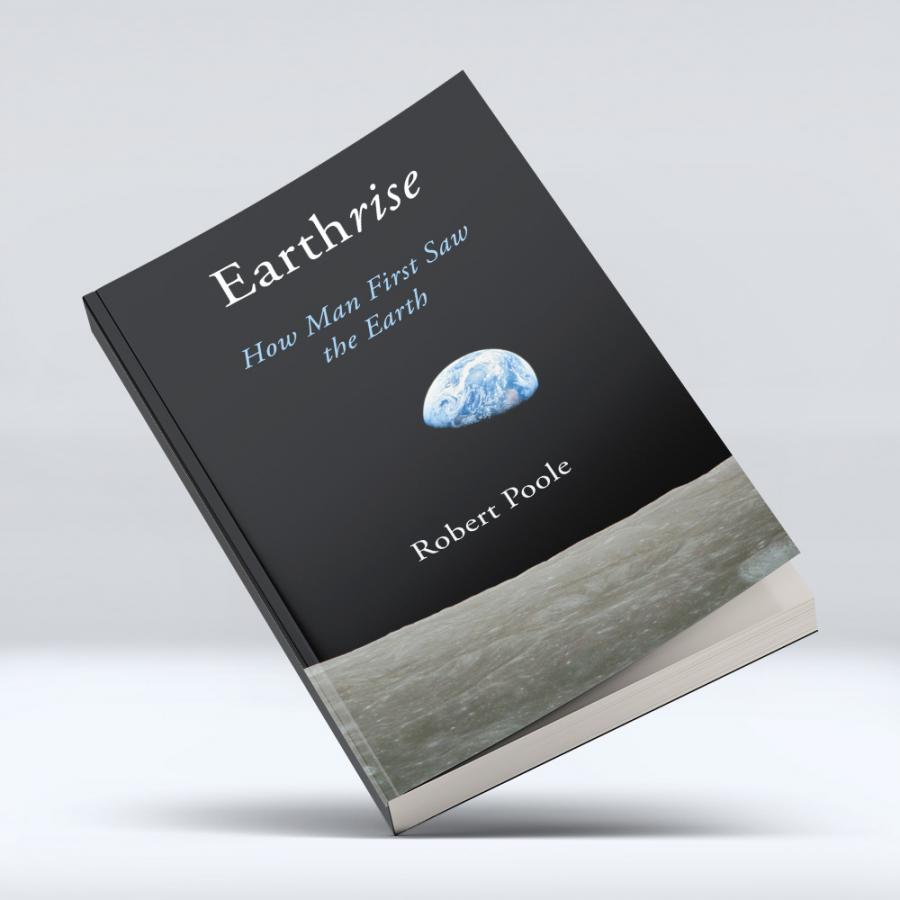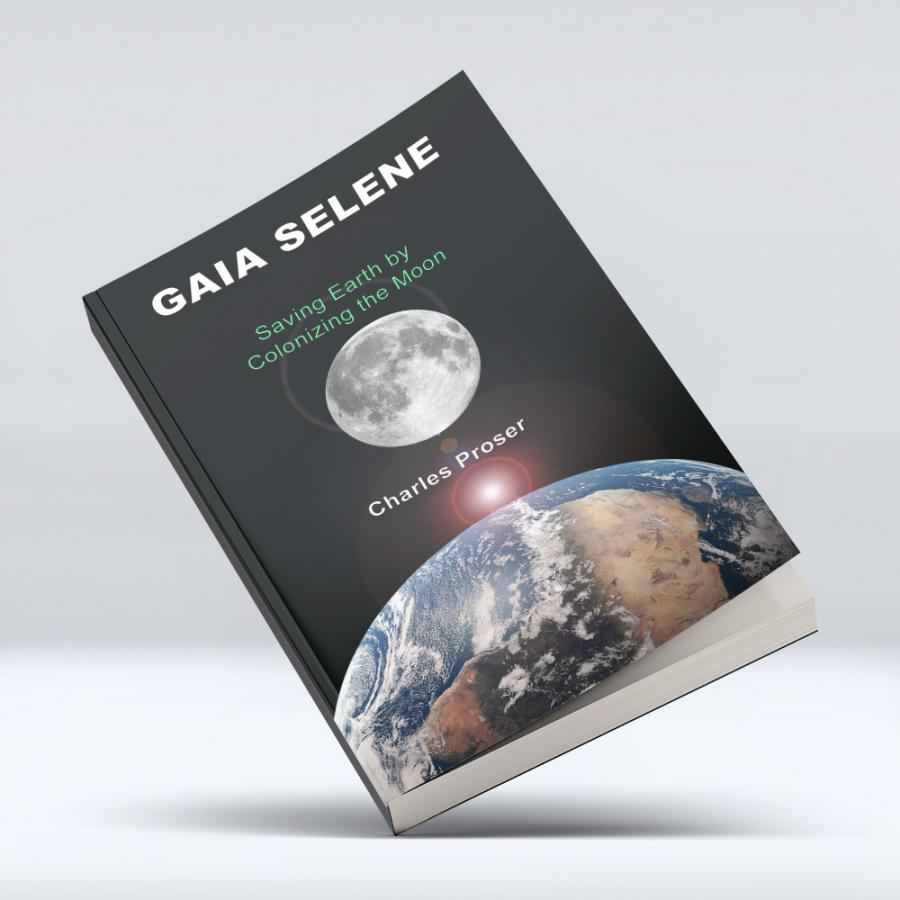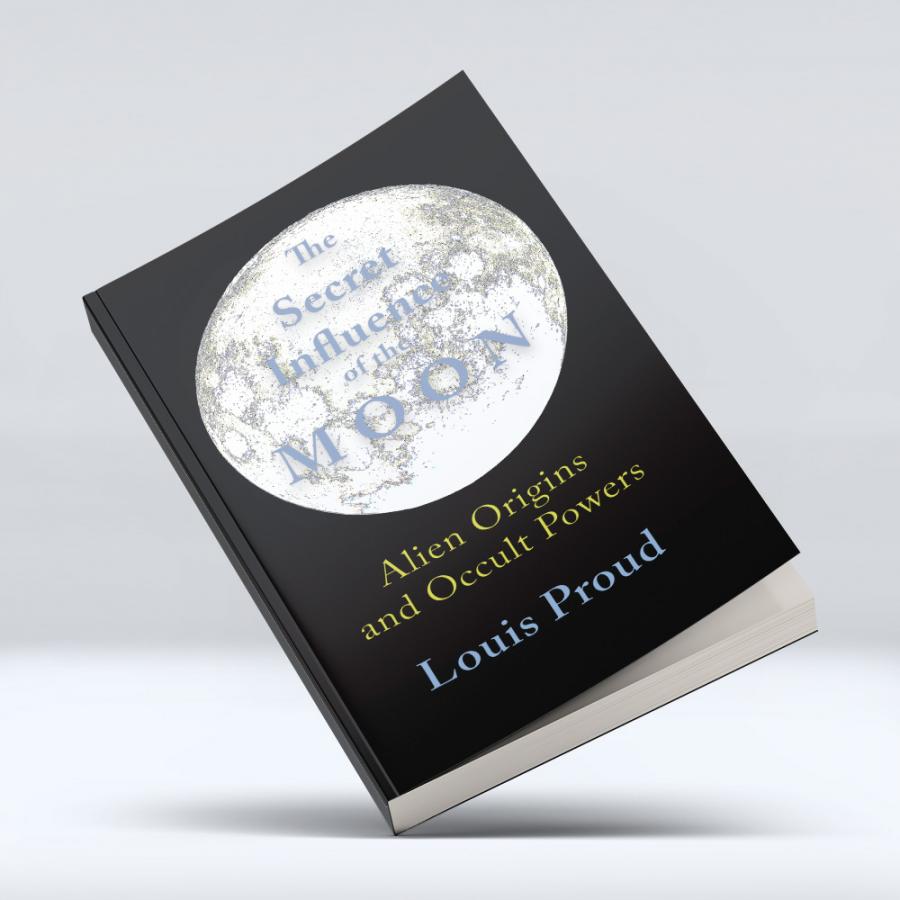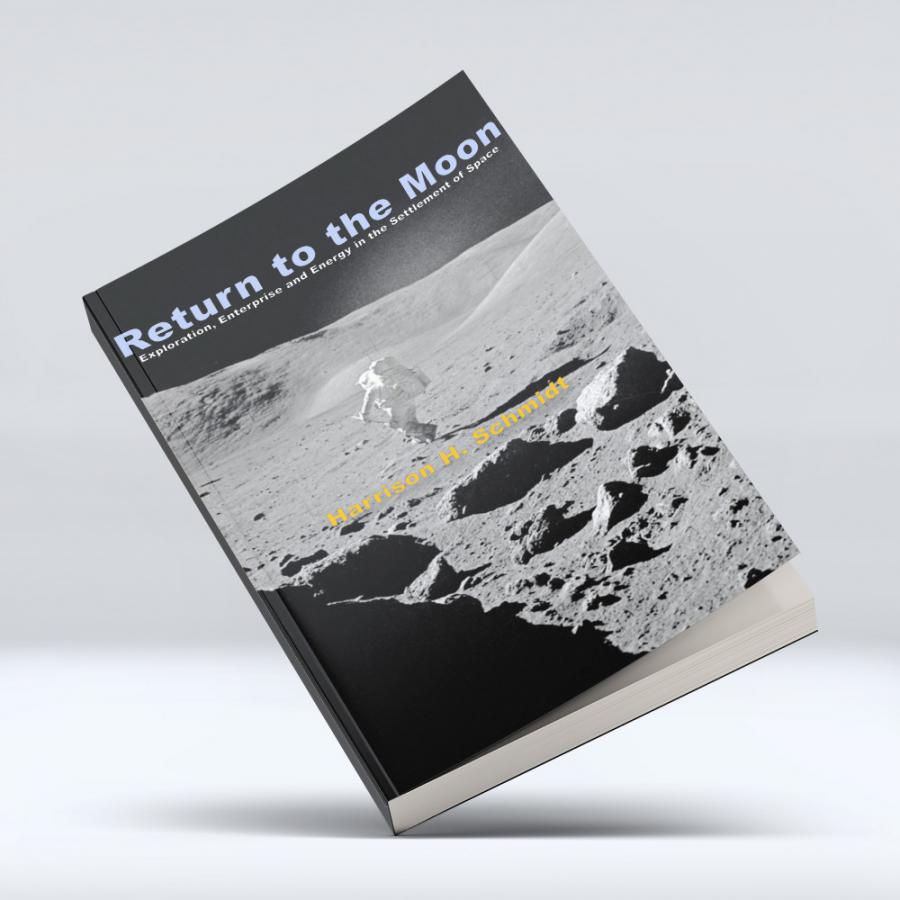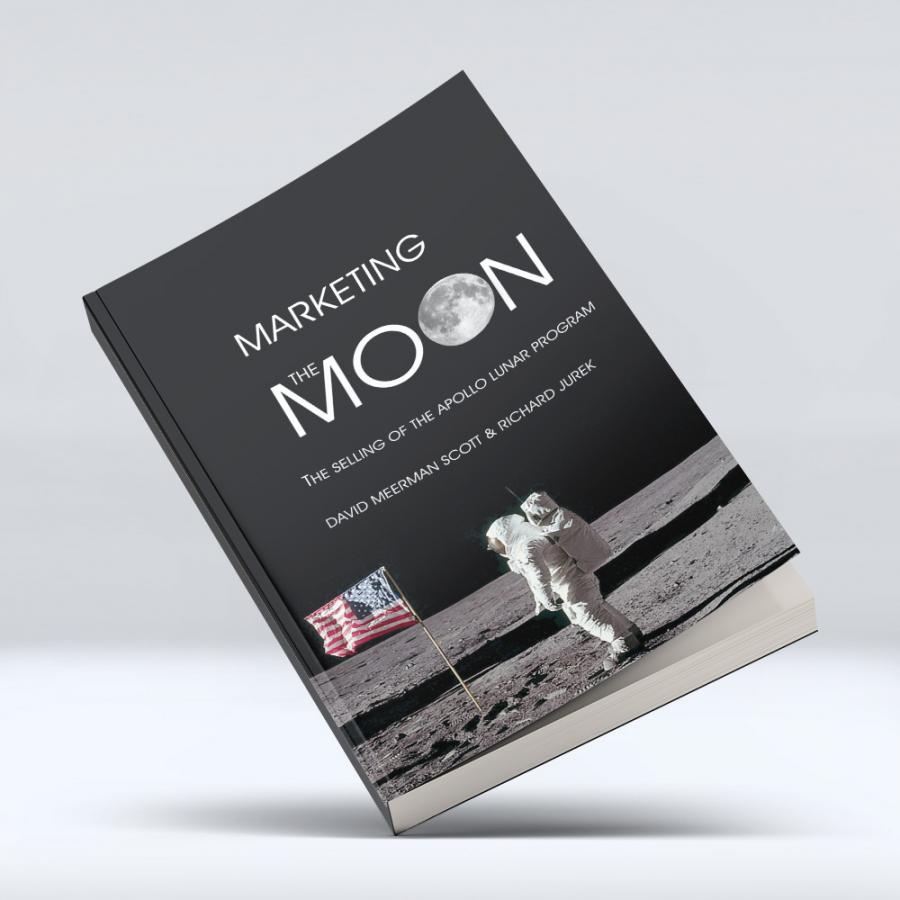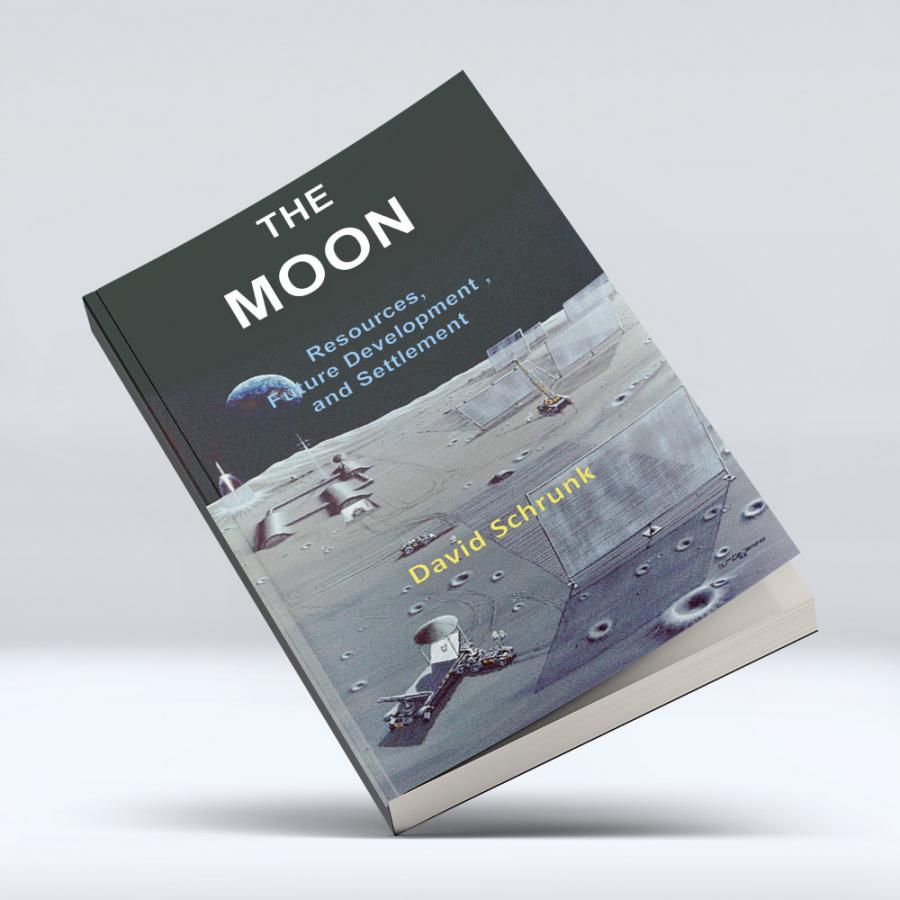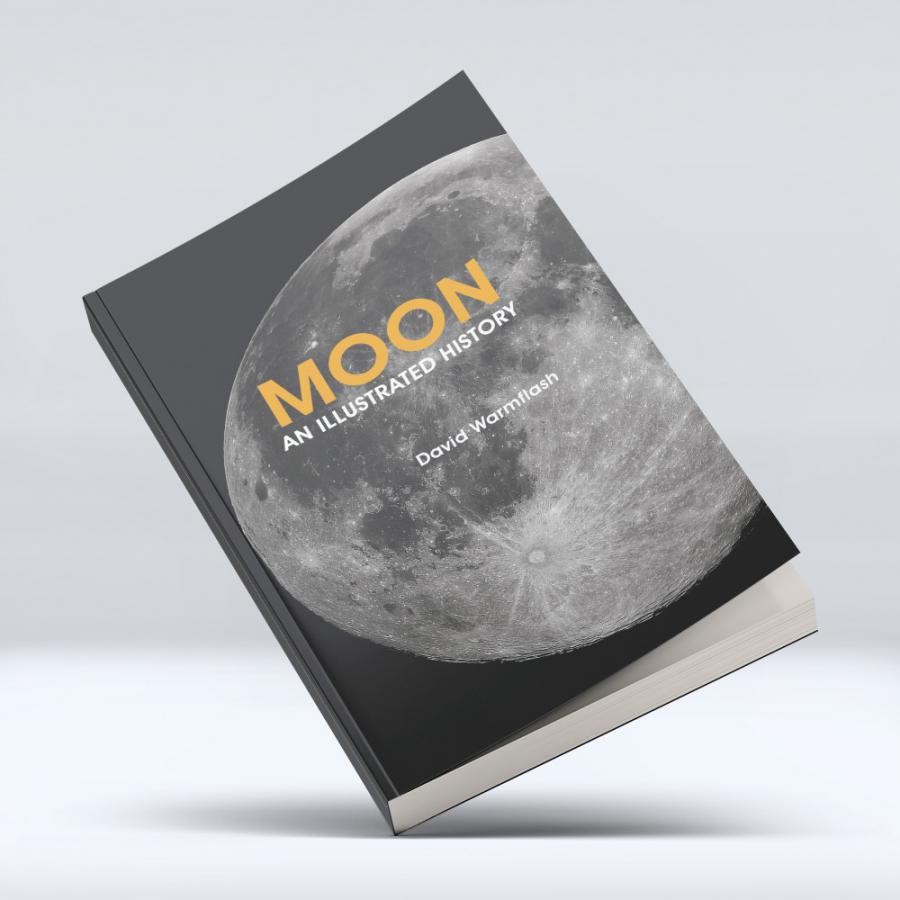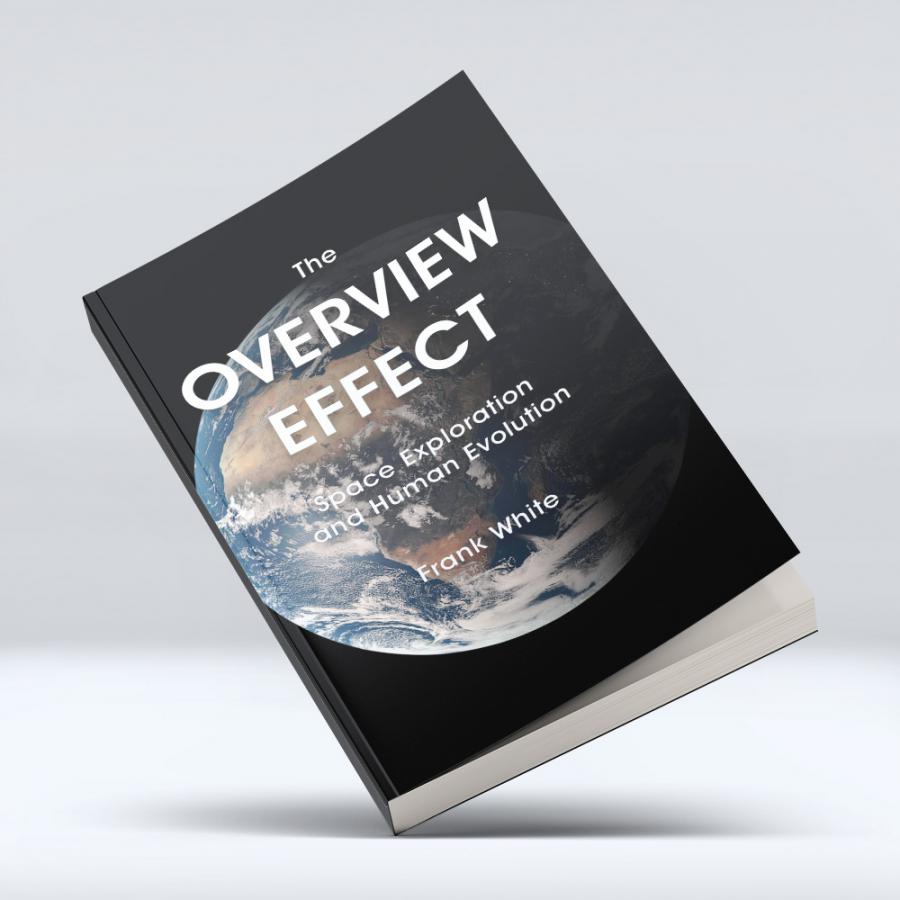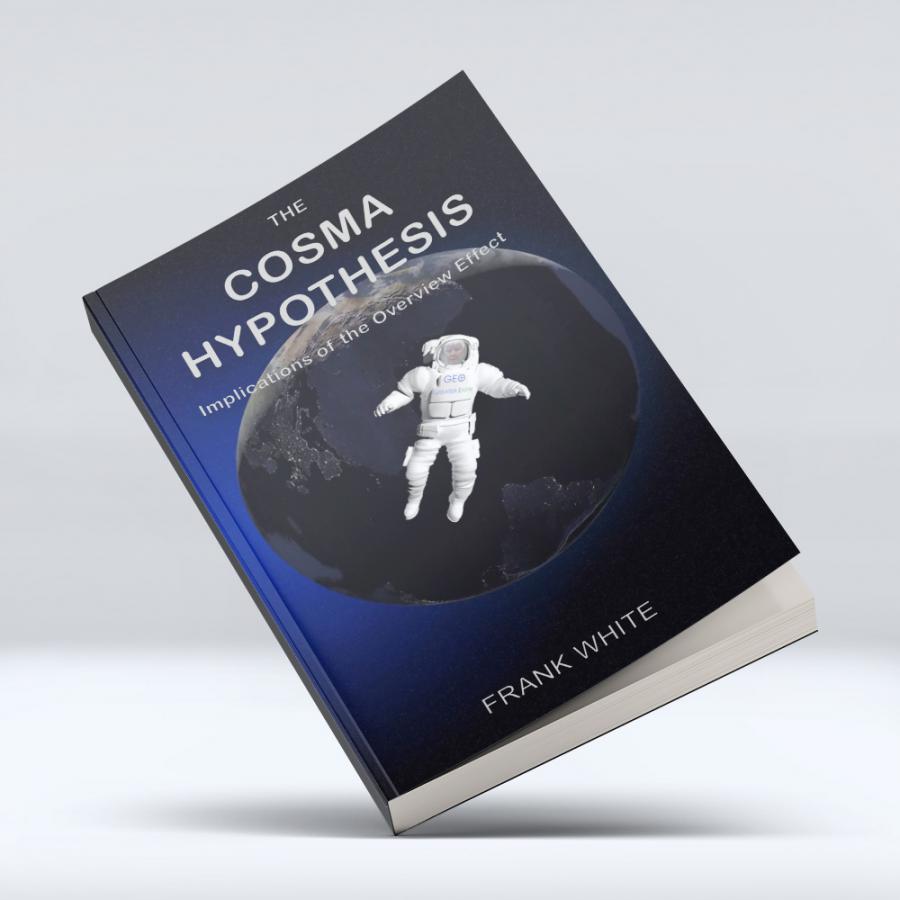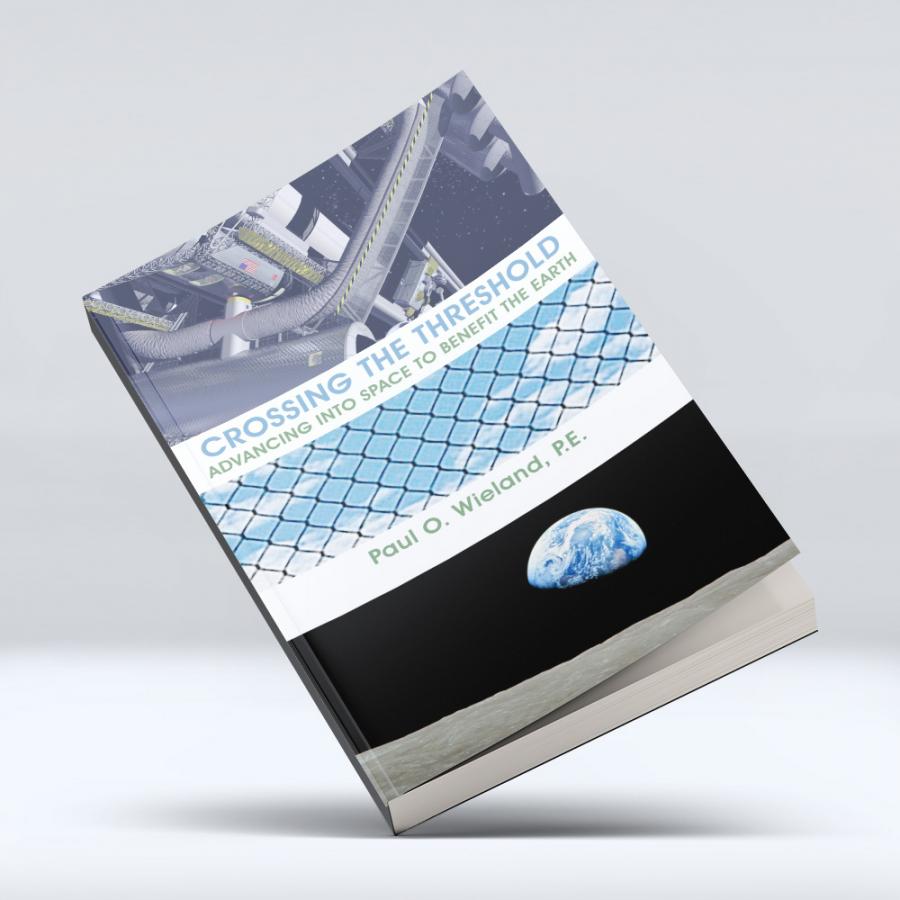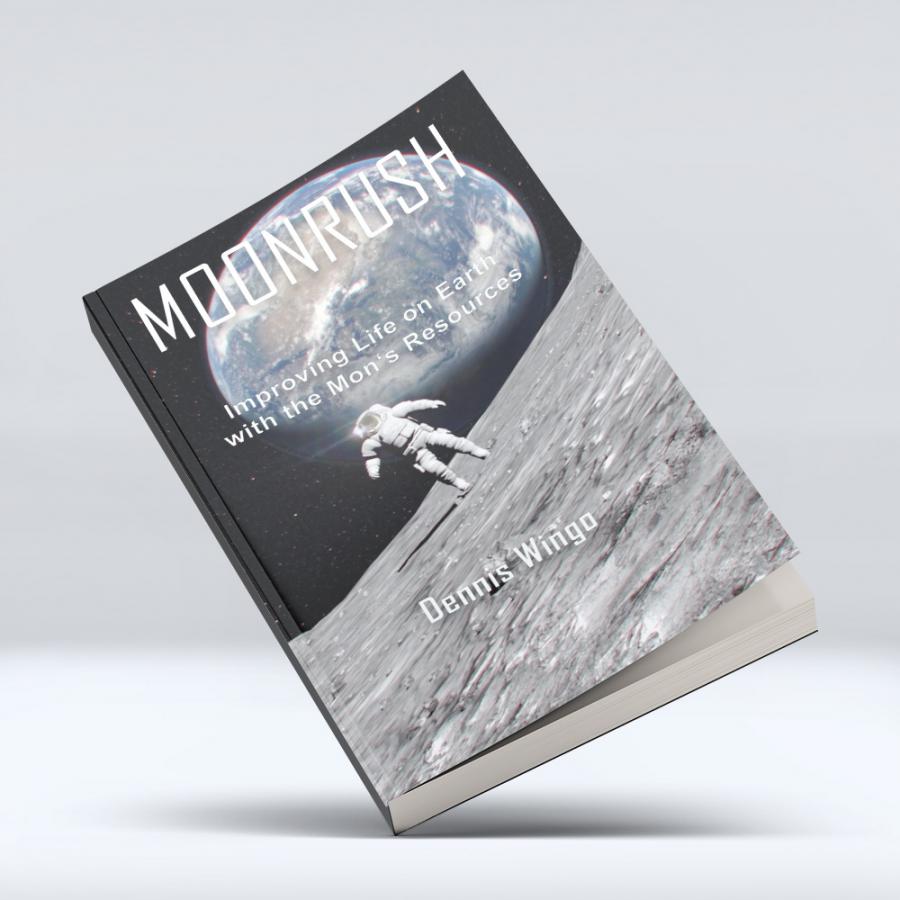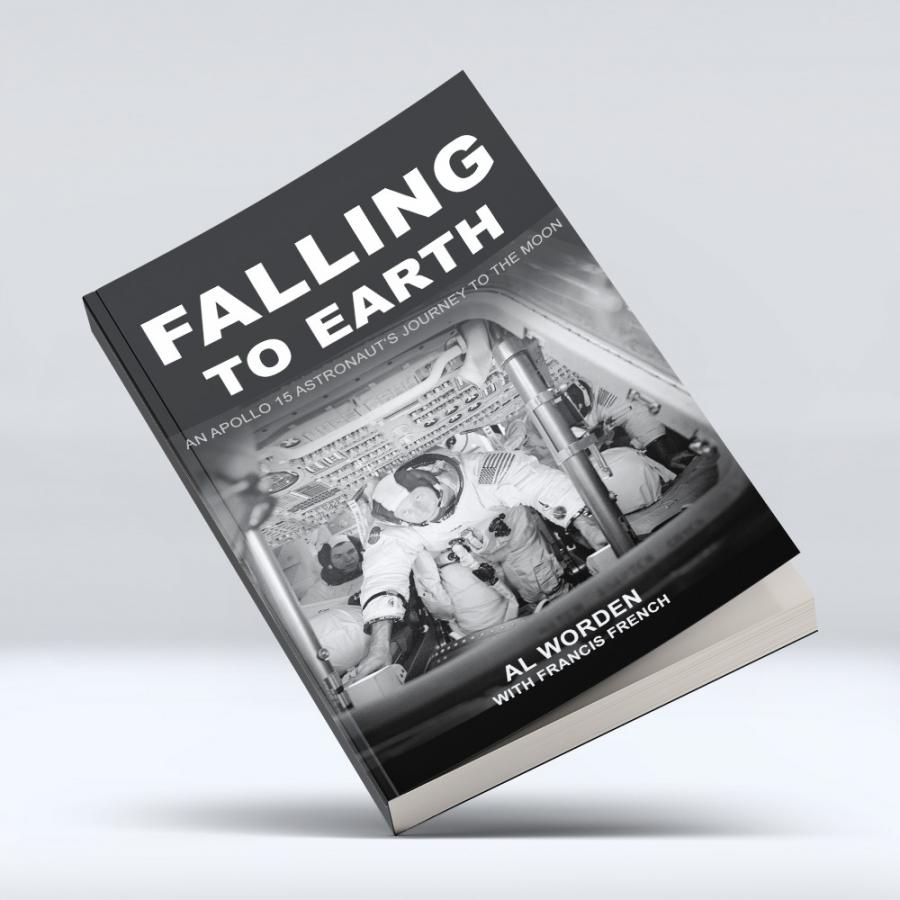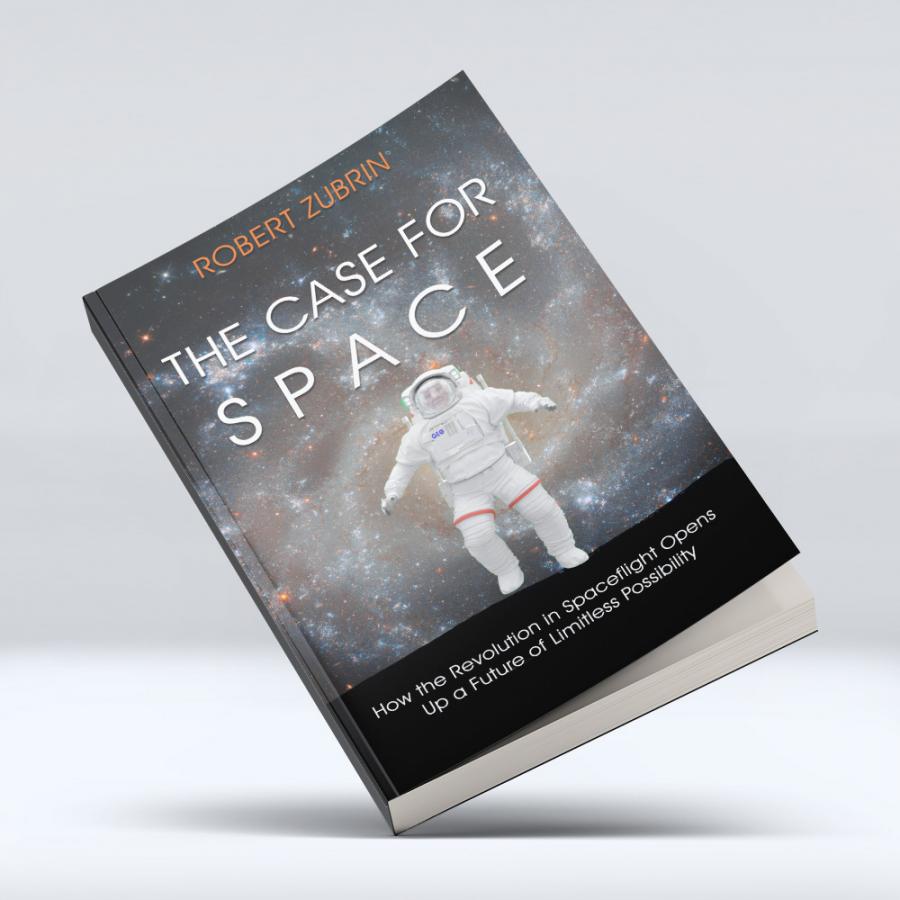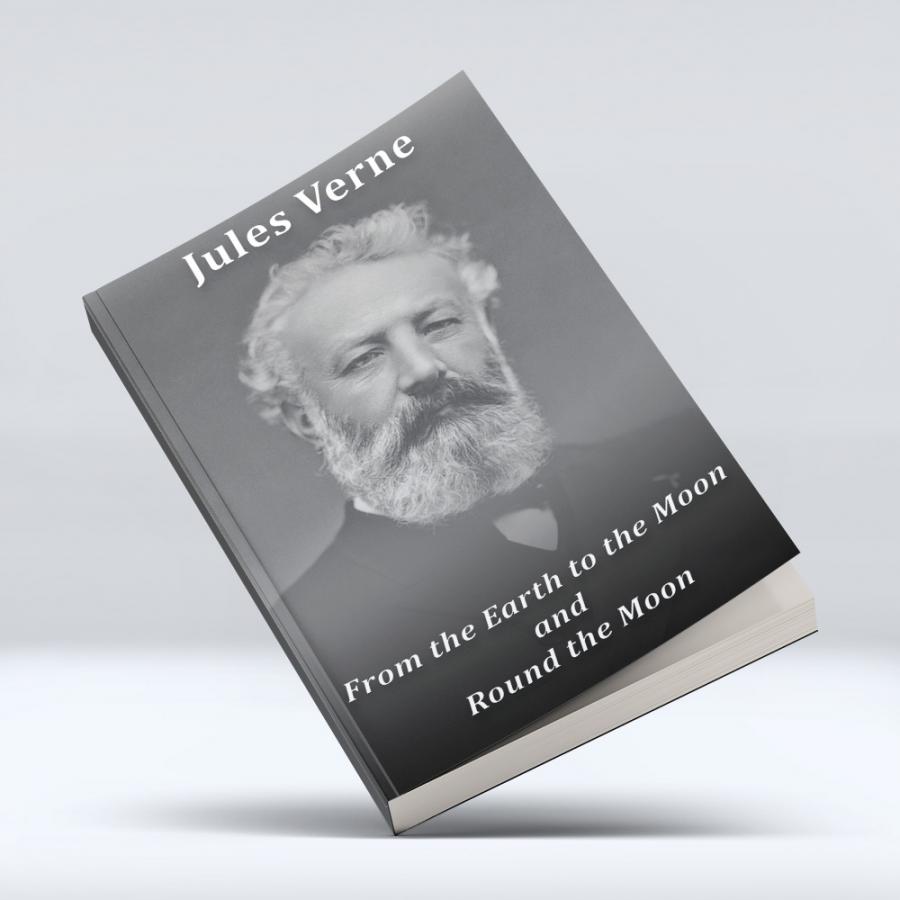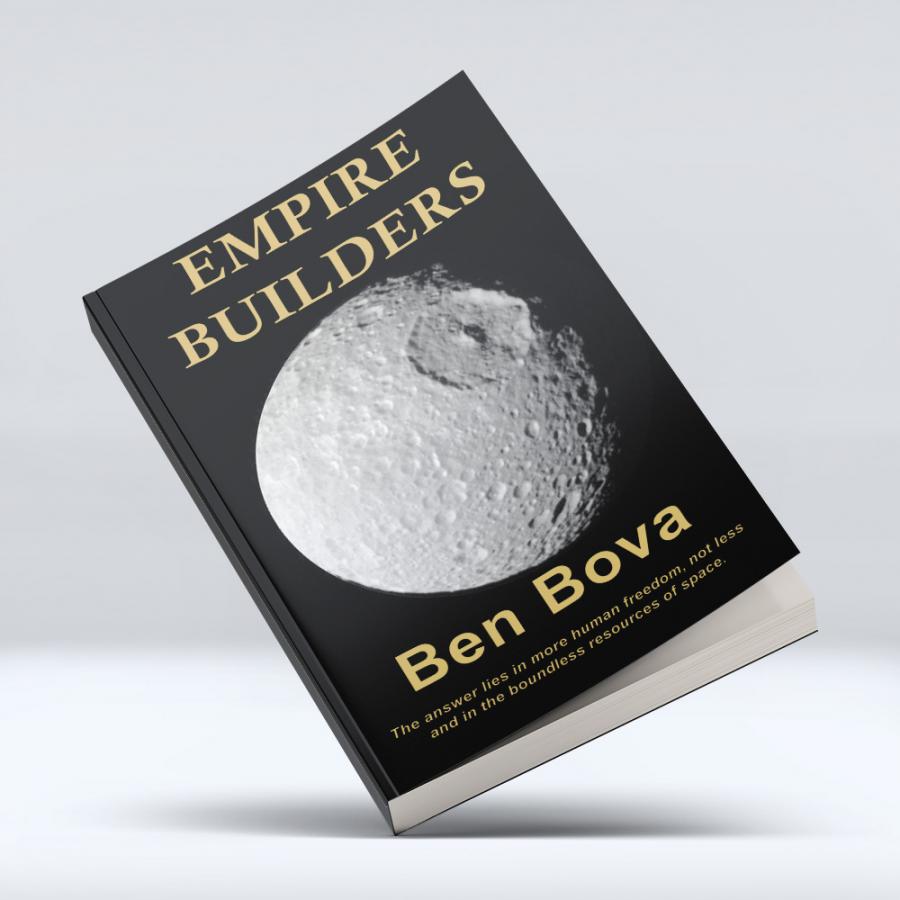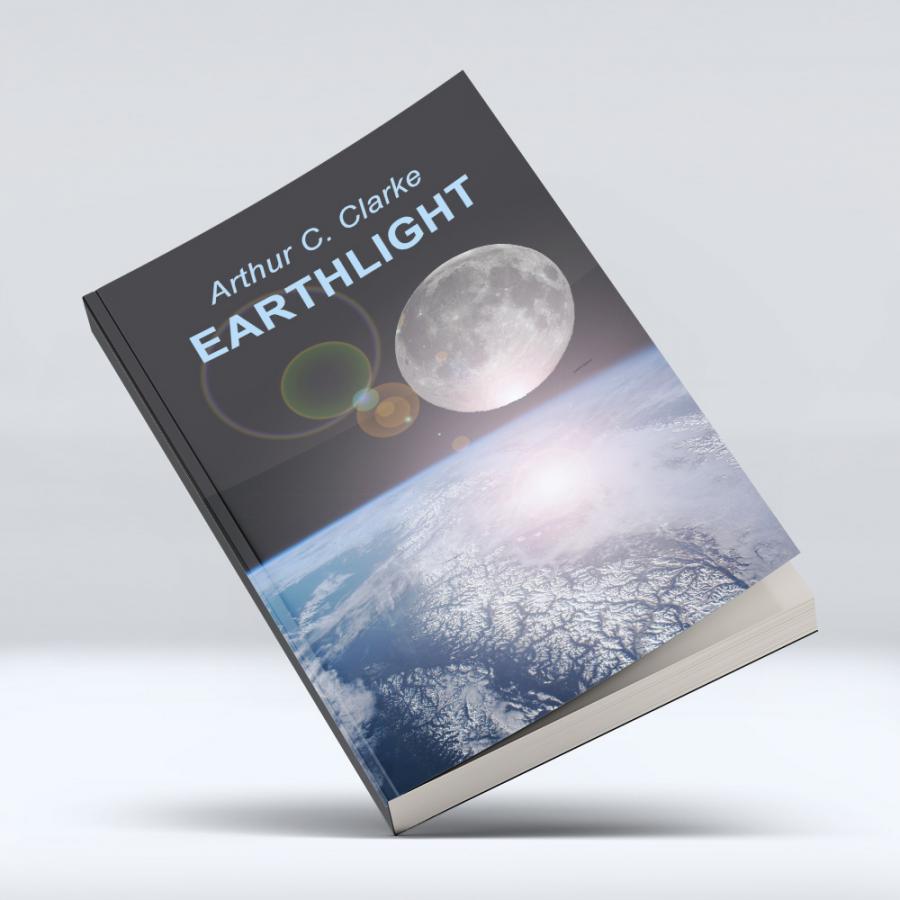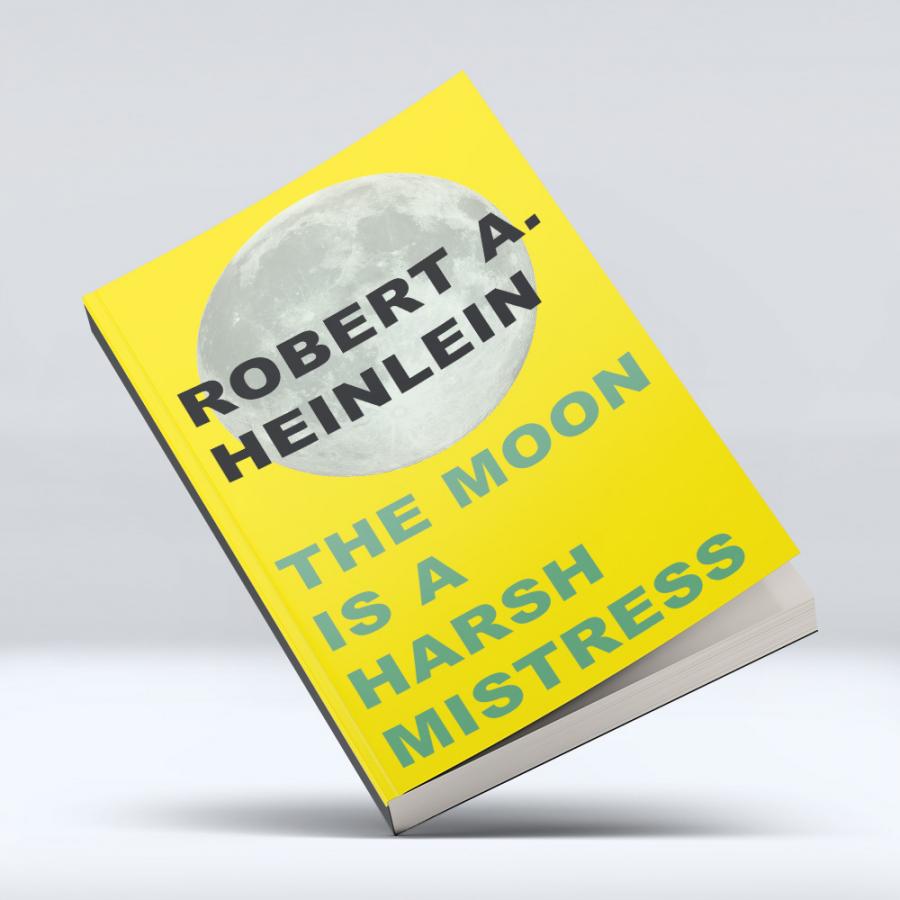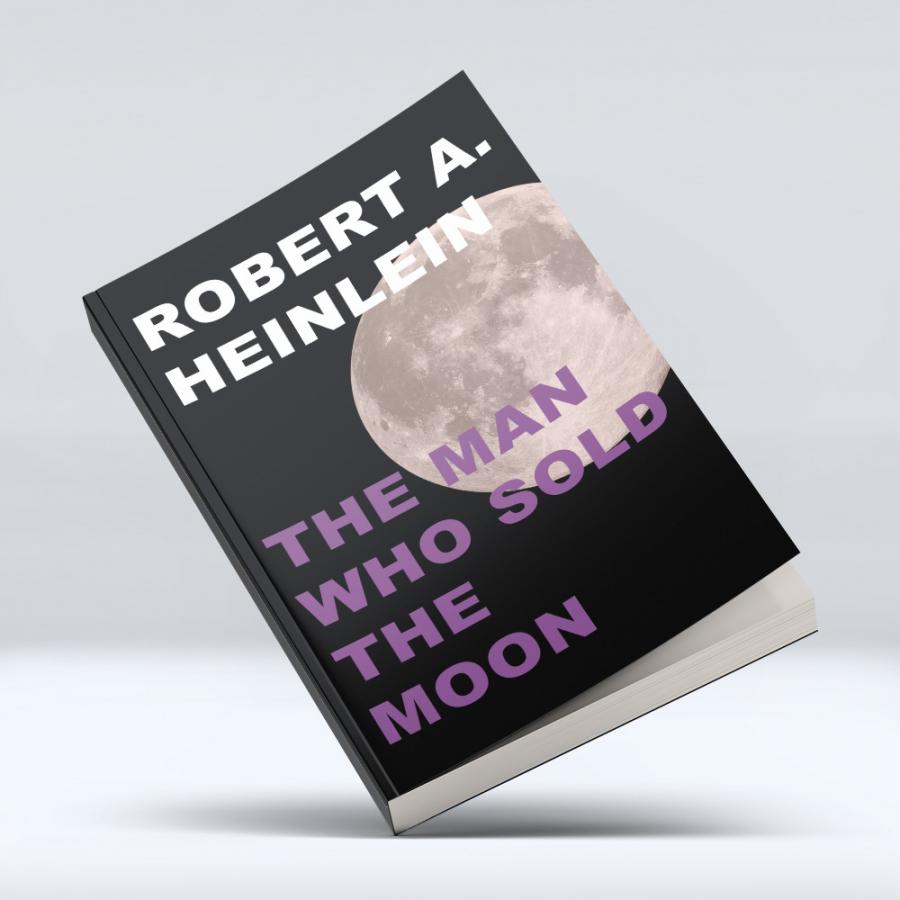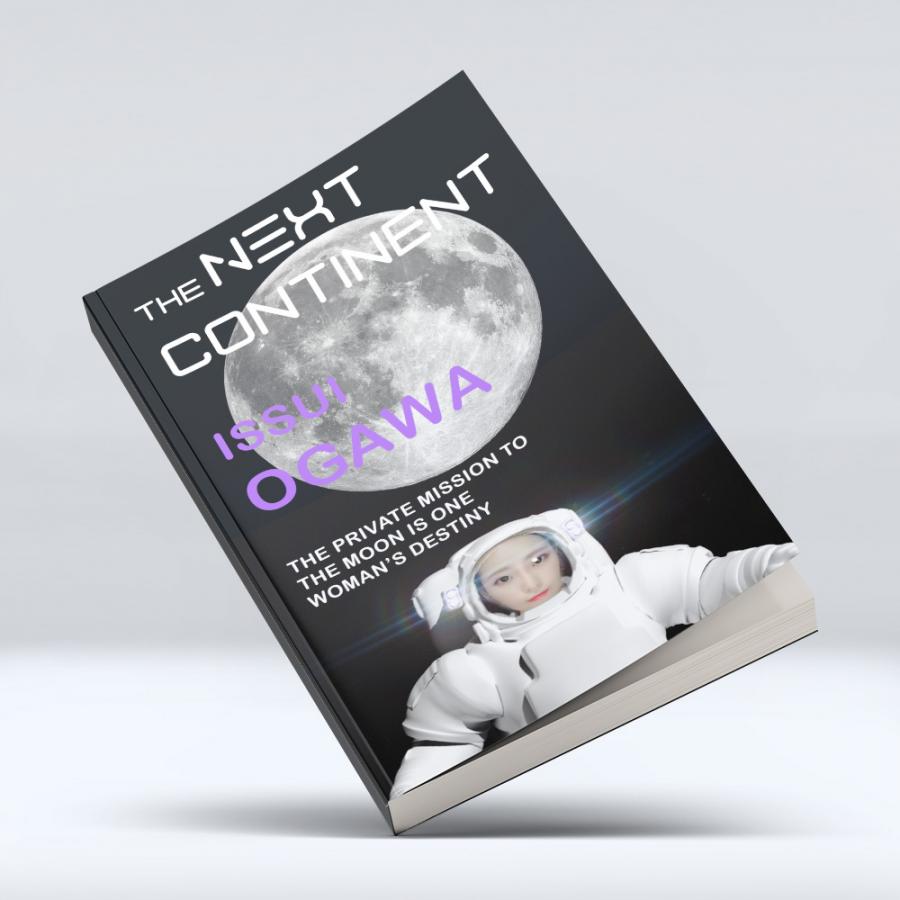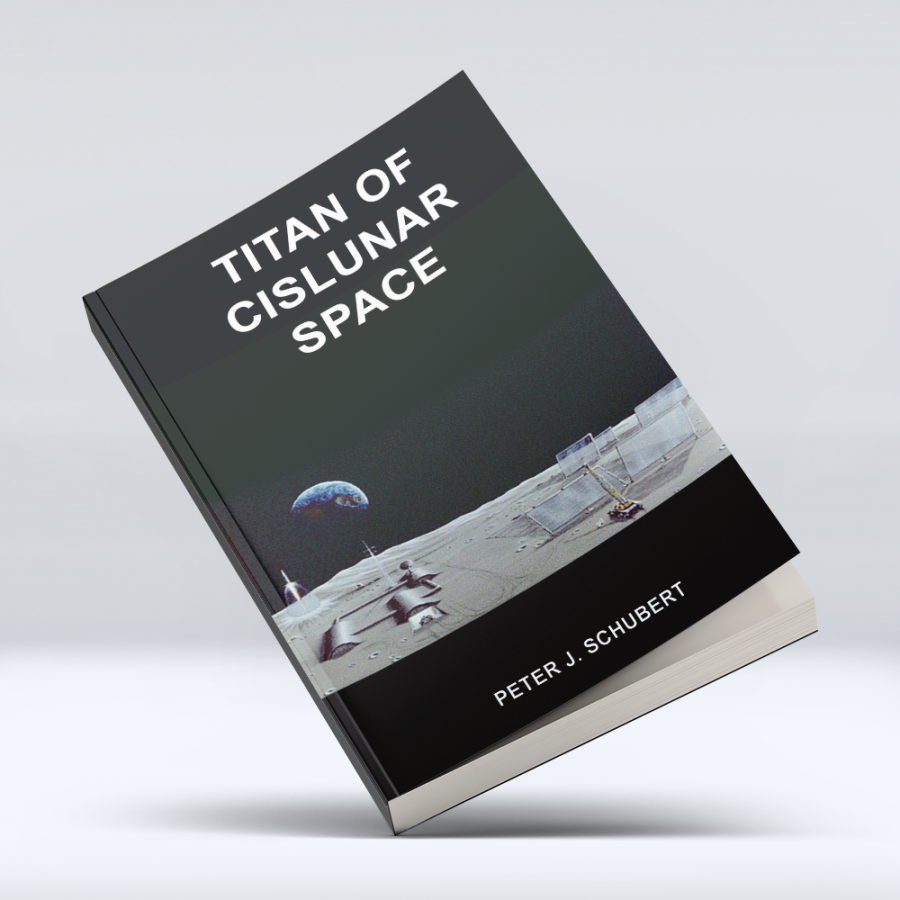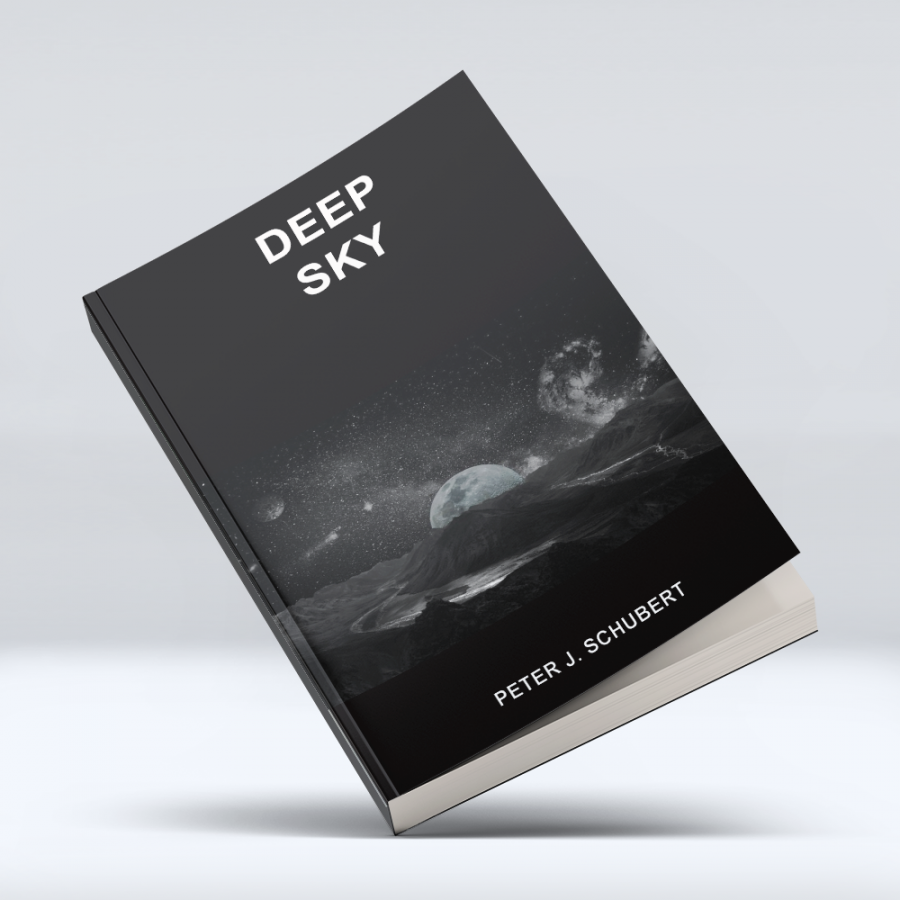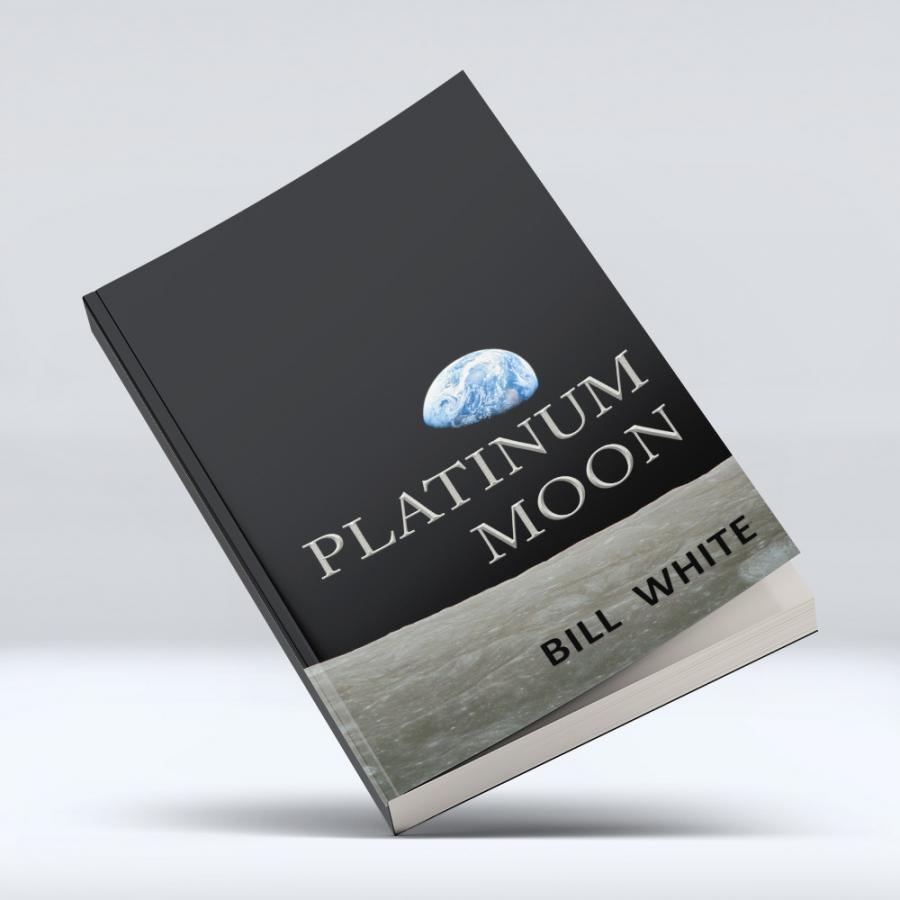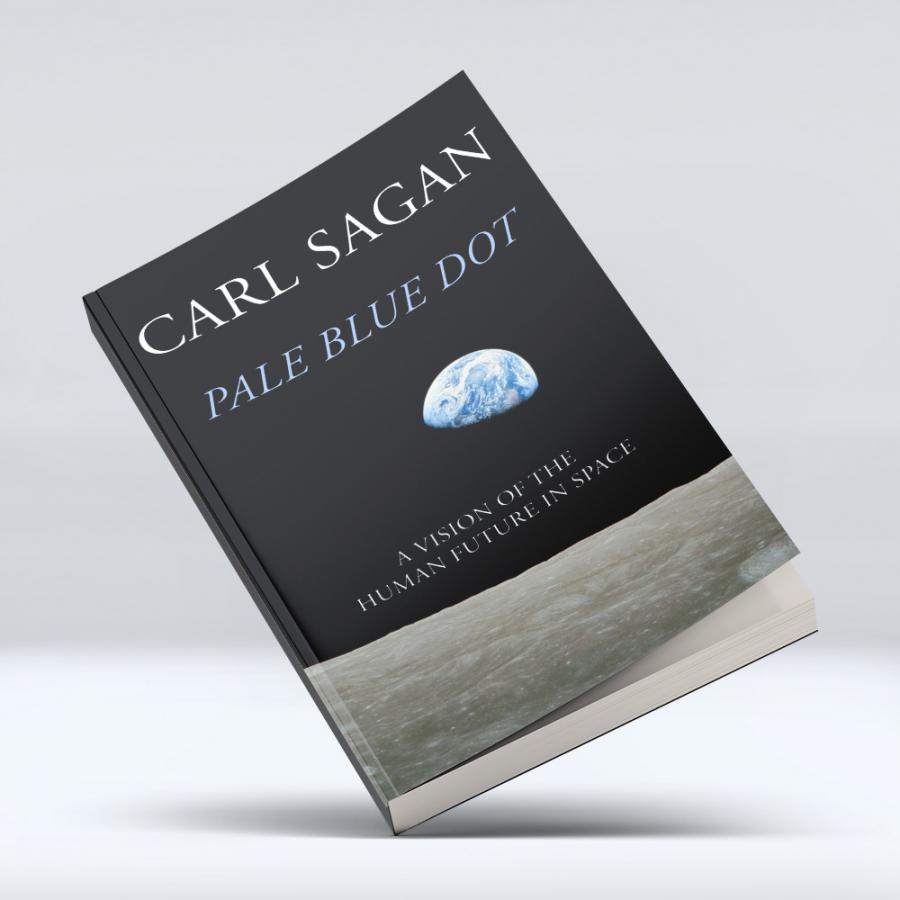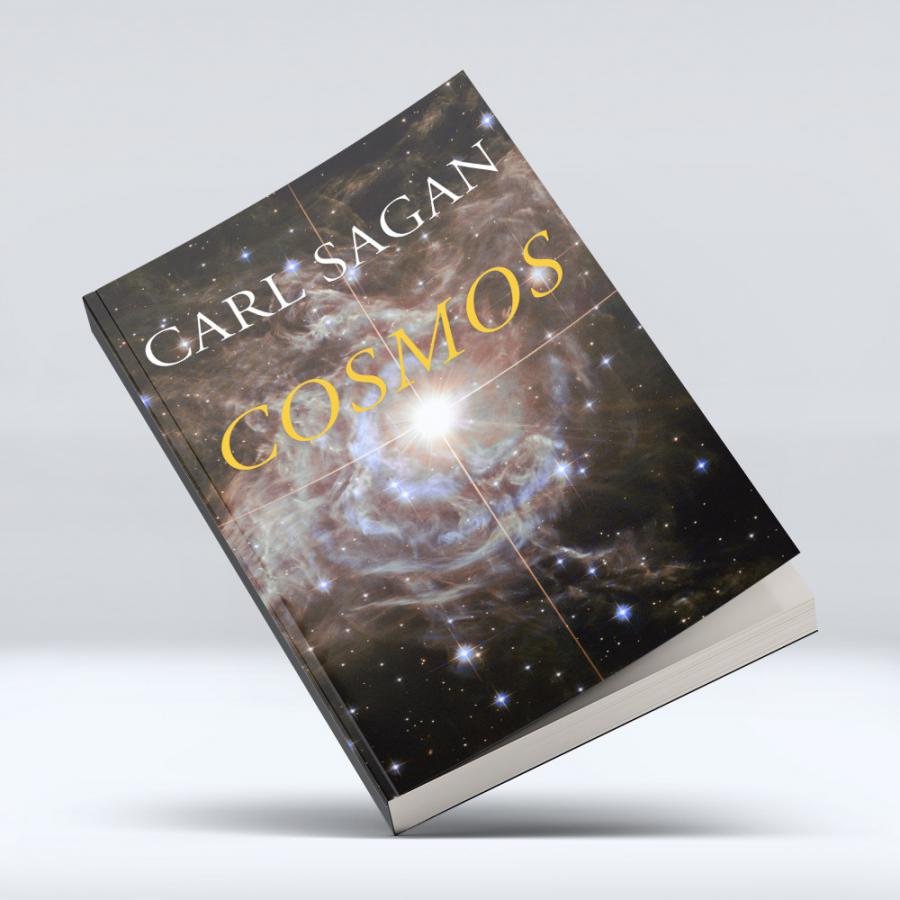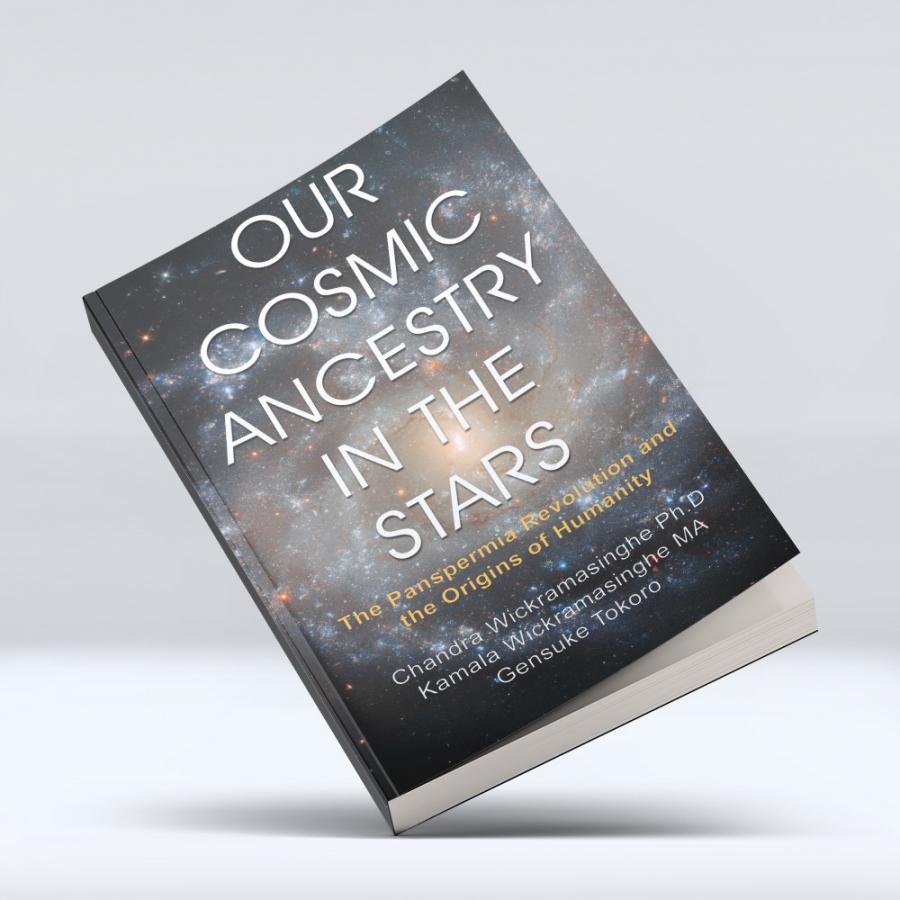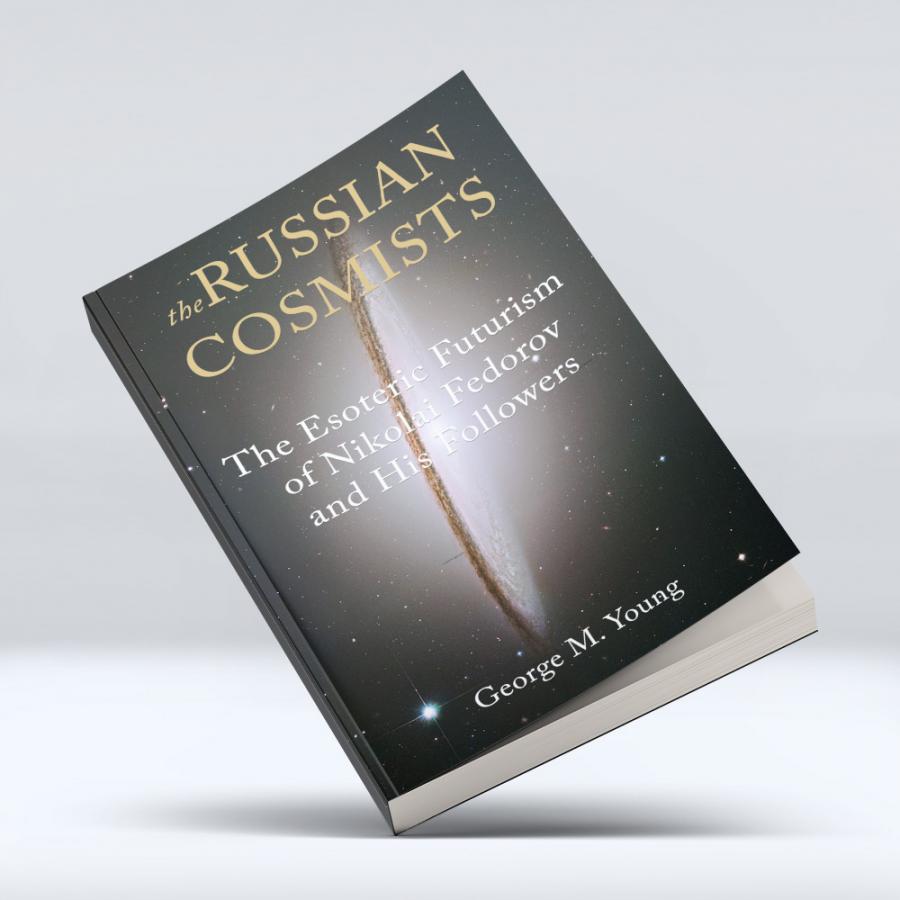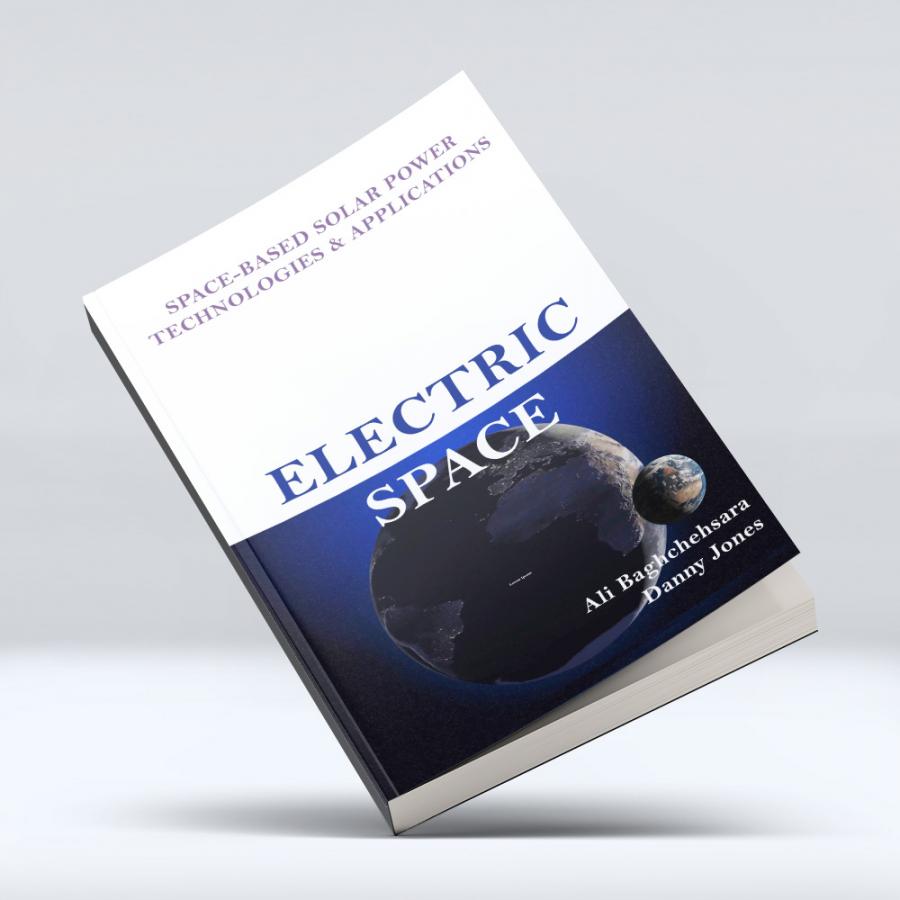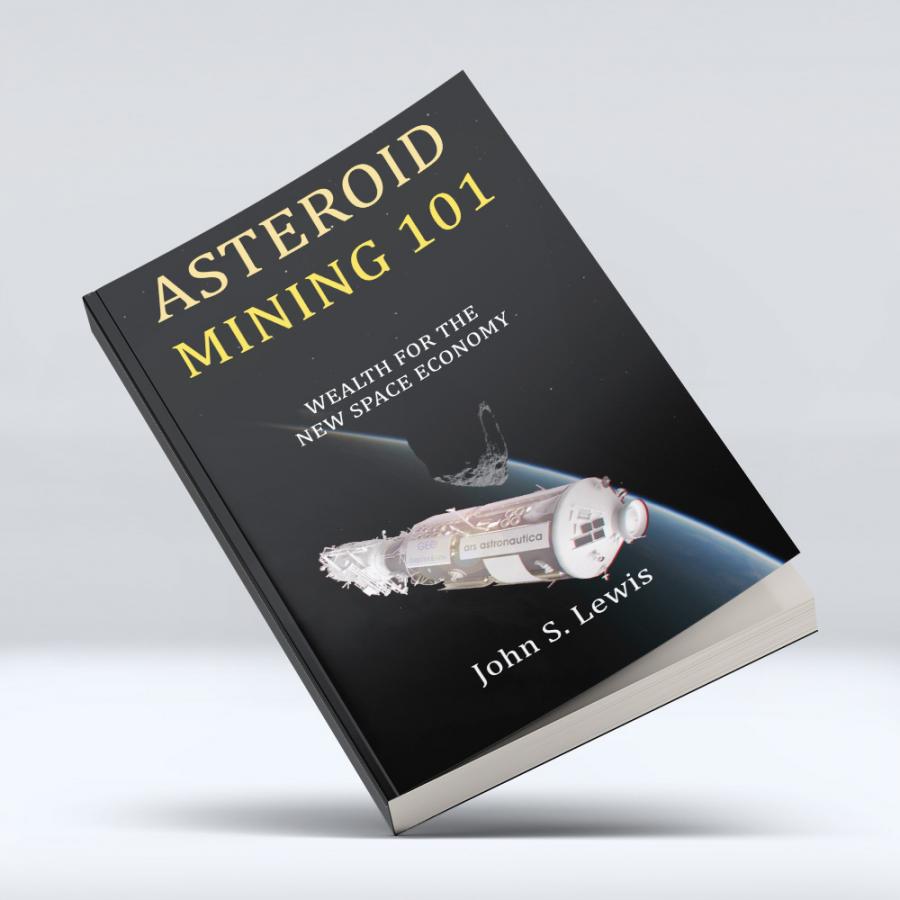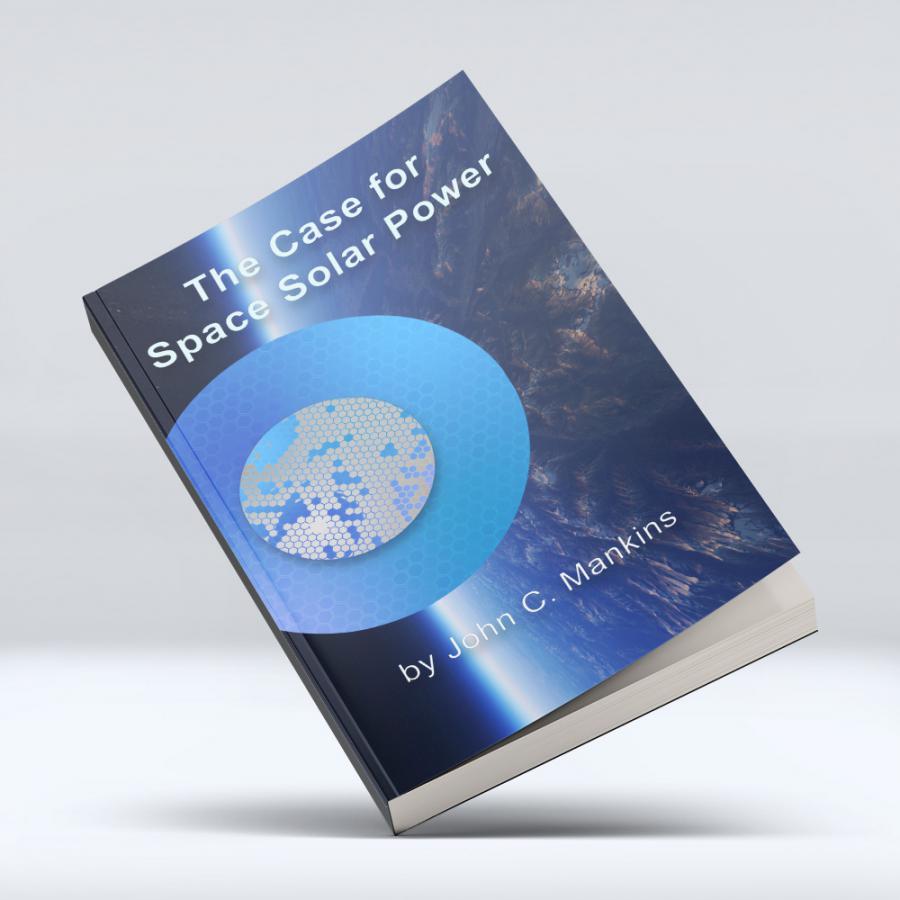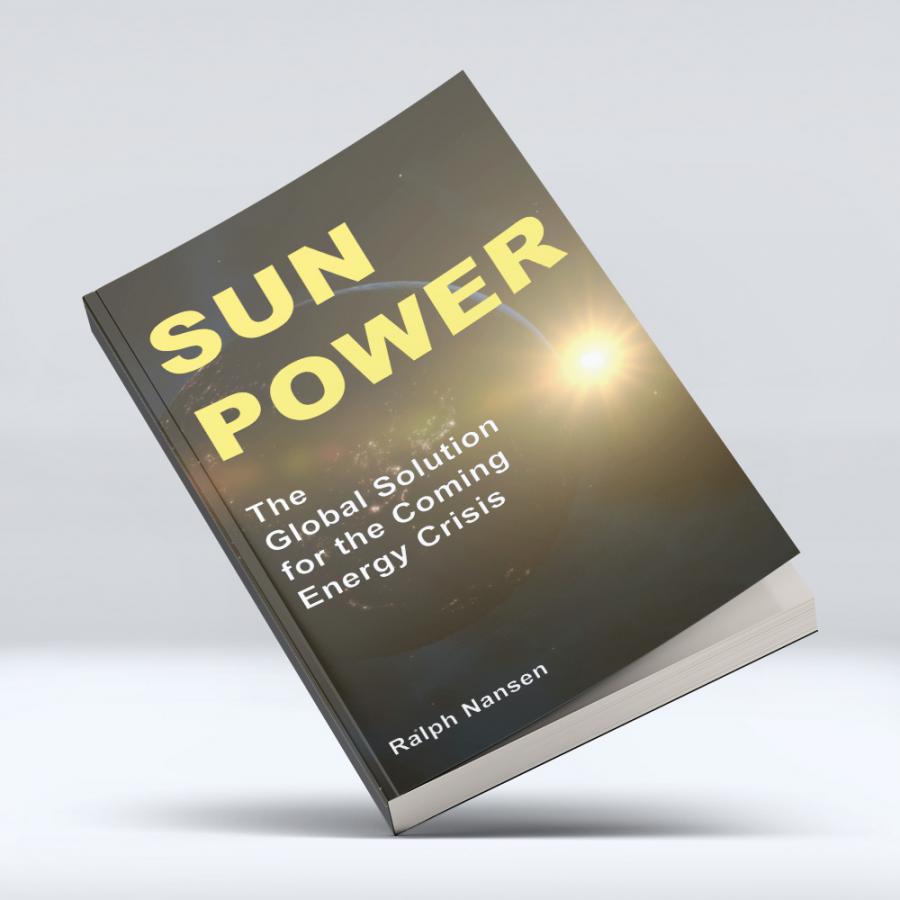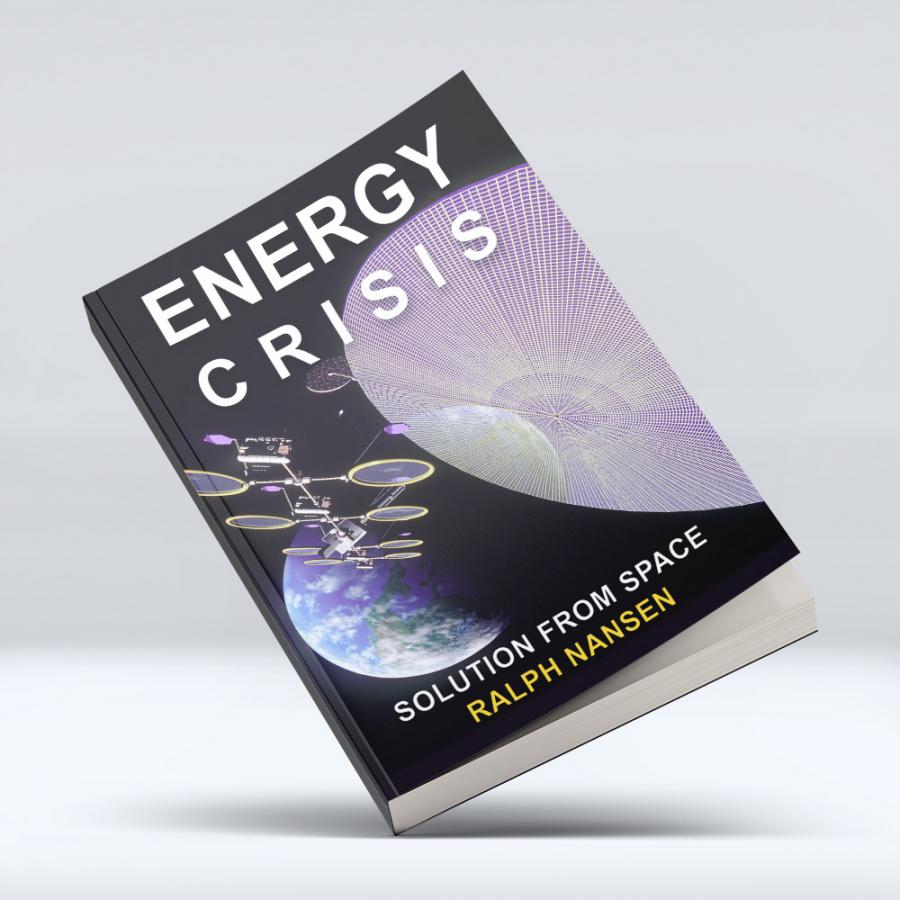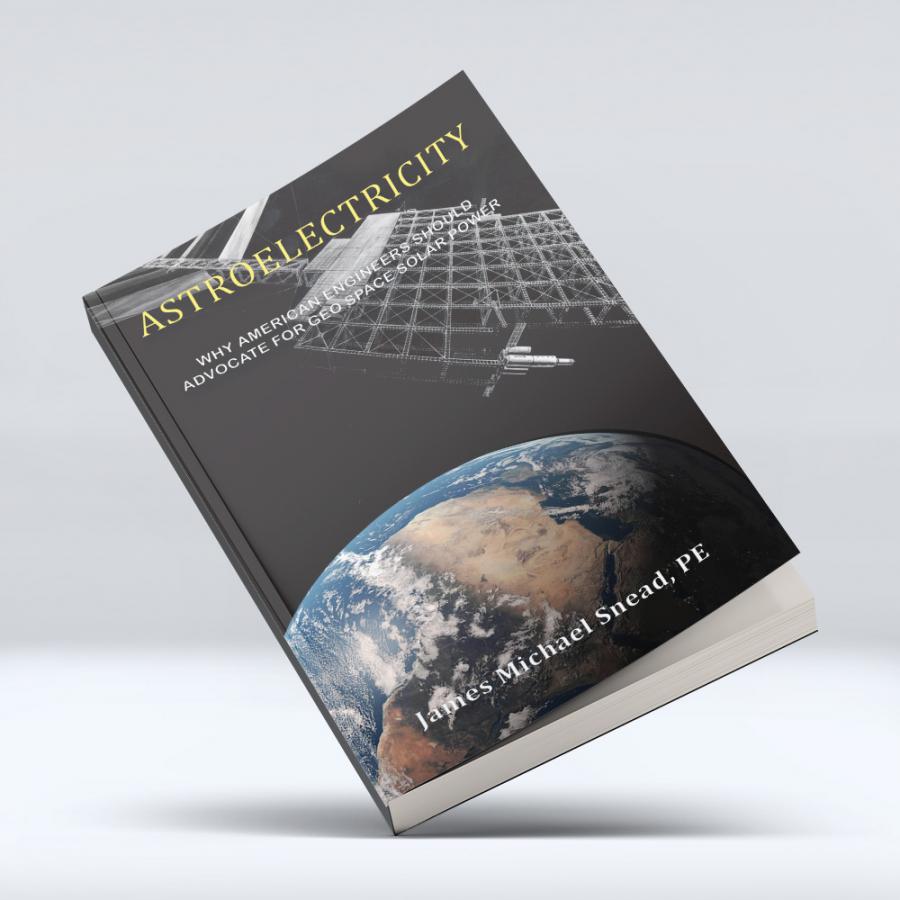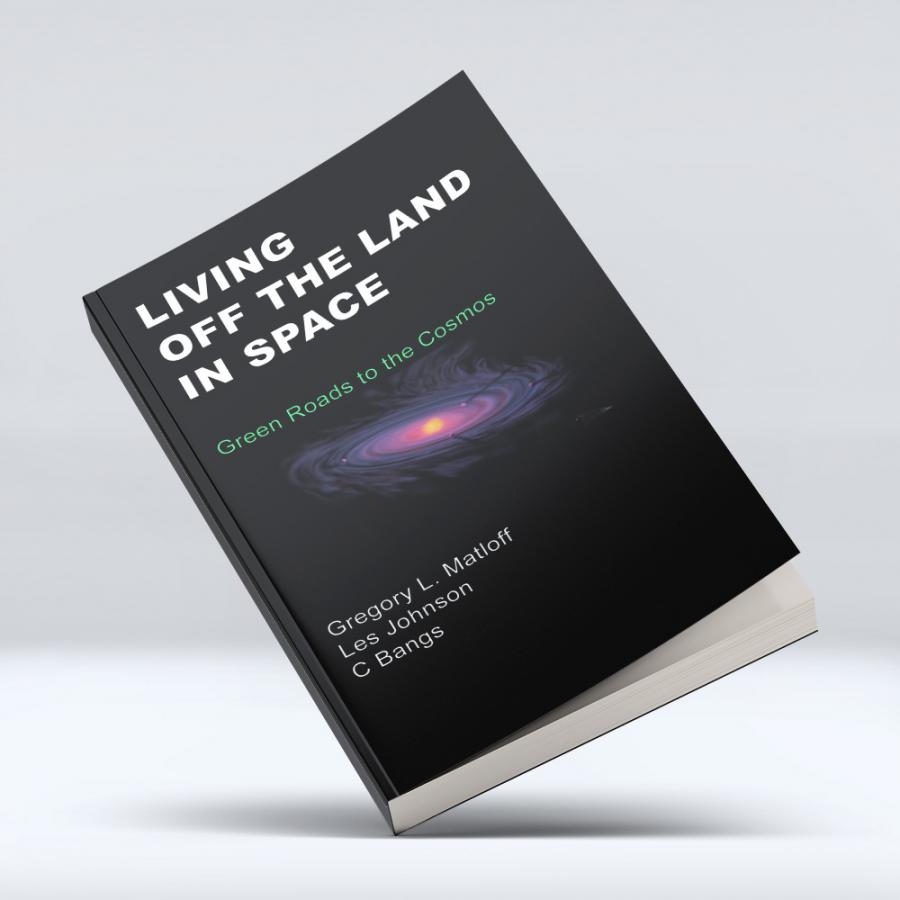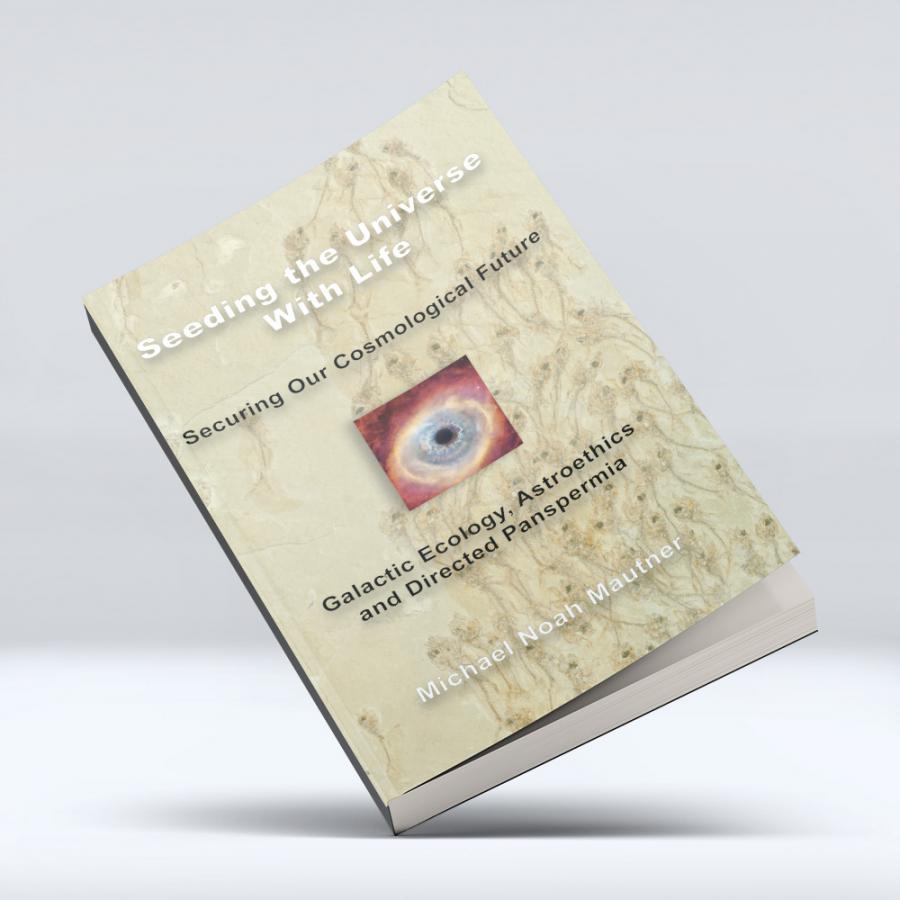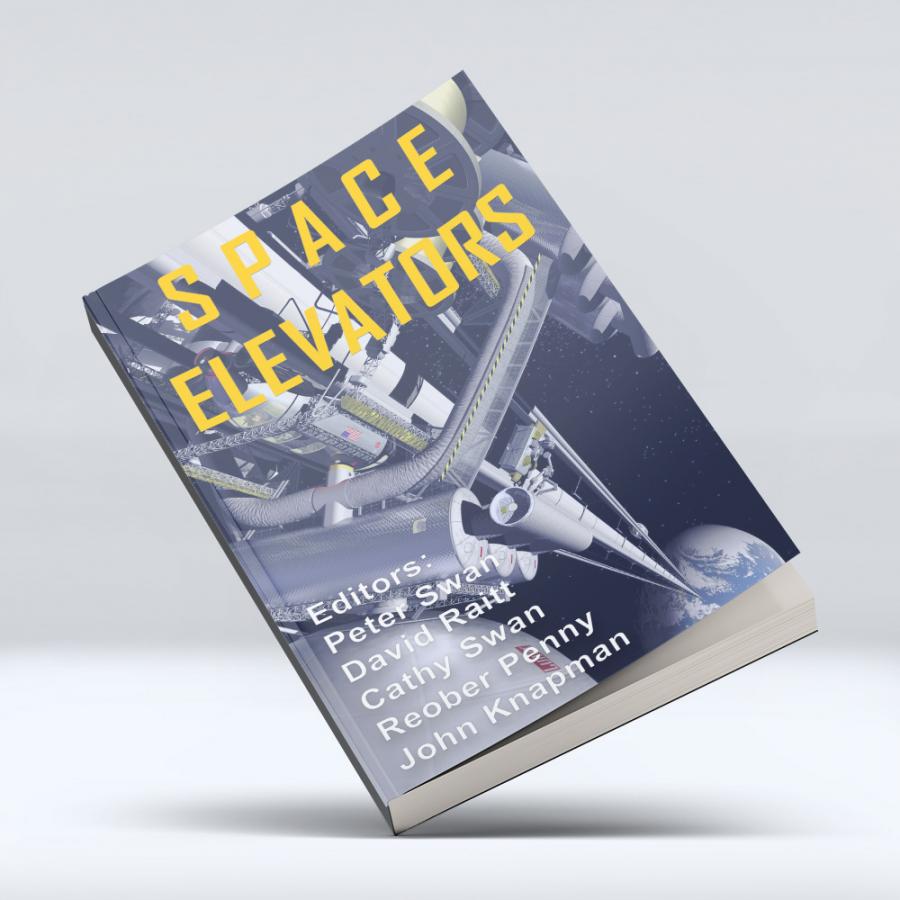Greater Earth Lunar Books
Discover Greater Earth in these 63 Books about the Moon
A (C)osmosis Art in-between Disciplines
Edited by Ioannis Michaloudis and Yuri Tanaka
Published by Cambridge Scholars Publishing August 13, 2021
The relationship of humankind to the cosmos has a very long history, and has raised many more questions than can be adequately answered. Why has the cosmos been a source of awe and wonder since the beginning of civilizations? How are the arts of today related to our engagement with the cosmos? Who are the contemporary practitioners working in this field? This volume is the first publication on this particular theme written for a general audience, and initiates a discourse on art inspired and driven by the fact that humans are enthusiastic observers of Earth and the universe surrounding it. Furthermore, by proposing the parenthetic idea of (C)osmosis Art, the book serves to introduce a new conceptual framework intrigued and inspired by the interactions between art, science and technology.
Introduction by Frank White
Contributors: Richard Clar, Maria Edwards, Dan Goods, Melany King, Ioannis Michaloudis, Sarah Jane Pell, Charles Ross, Yuri Tanaka, Frank White, Arthur Woods
The Sky at Night: Book of the Moon – A Guide to Our Closest Neighbour
Maggie Aderin-Pocock
Harry N. Abrams; Illustrated edition, April 9, 2019
Dr. Maggie Aderin-Pocock begins with the basics, unpacking everything from the moon’s topography and composition to its formation and orbit around the Earth. She travels back in time to track humanity’s relationship with the moon — beliefs held by ancient civilizations, the technology that allowed for the first moon landing, a brief history of moongazing, and how the moon has influenced culture throughout the years — and then to the future, analyzing the pros and cons of continued space travel and exploration. Throughout the book are sidebars, graphs, and charts to enhance the facts as well as black-and-white illustrations of the moon and stars.
Quotes:
"Interestingly, the word ‘moon’ seems to stem from an old English word derived from the Germanic word menon, which in turn is thought to come from an Indo-European word, menses, meaning ‘month’ or ‘moon’."
"What drove the transformation to flights for all? Essentially it was two things: demand by the public and a response from commerce, which saw an opportunity and drove the price down with technological developments to make it more accessible yet turn a good profit.
My hope is that space tourism will go the same way. As many of us desire to get out there, technology will be accelerated to meet the demand and cheap, safe flights to the Moon will become accessible. But for this to happen we need to develop an infrastructure on the lunar surface. This has been discussed for many years, but when will it actually happen?"
When the Earth Had Two Moons: Cannibal Planets, Icy Giants, Dirty Comets, Dreadful Orbits, and the Origins of the Night Sky
Erik Asphaug
Published by Custom House, October 29, 2019
Fourteen billion years ago, the universe exploded into being, creating galaxies and stars. Planets formed out of the leftover dust and gas that coalesced into larger and larger bodies orbiting around each star. Planetary bodies smashed into each other until solar systems emerged. Curiously, instead of being relatively similar in terms of composition, the planets in our solar system, and the comets, asteroids, satellites and rings, are bewitchingly distinct. So, too, the halves of our moon.
In When the Earth Had Two Moons, planetary geologist Erik Asphaug takes the reader on an exhilarating tour through the farthest reaches of time and our galaxy. This book is not only an astonishing astronomical tour but a profound inquiry into the nature of life here and beyond.
A Greater World is Possible: The expansion of civilization beyond the limits of our home planet is the moral issue of our time
Adriano Autino
Published by Amazon.com Services LLC, May 23, 2019
Humanity s facing three main challenges. 1) The so-called save-the-planet, pursued by the UN 2030 SDG agenda: fighting climate change, and using Space for Earth environment. 2) Space exploration, that will maybe take us to Mars. 3) The third one, to save civilization, is neglected, but eight billion terrestrials have no way to save civilization if they will not begin immediately to expand into space. Expansion into space is different from space exploration.
This book represents the author's reflection about the state of civilization, some possible futures and the deep moral implications of the great choices that civilization has to make. Very often such choices are driven by the more or less informal evolution of social and international relationships, rather than by a reasoned and motivated rationale.
Quotes:
"Civilization cannot stop growing, across all the vectors: culture, ethics, de-mocracy, freedom, economy, populations and numbers (demographics). All of these vectors are mutually related."
"Growth is therefore a process that started with the beginning of the cultural development of our civilization, a process closely intertwined with progress and civil growth, also intended as a moral growth. But it was only with the beginning of the mechanical industrial revolution, between the 18th and 19th centuries, that our species took the path of growth, the trampoline, which can literally take it to the stars."
"The real wealth is technological and scientific know-how and the potential for human work."
"Astronautical humanism defends every single human life."
Building Habitats on the Moon: Engineering Approaches to Lunar Settlements
Haym Benaroya
Published by Springer, 1st ed. January 11, 2018
In order to design a habitat for the lunar surface, one needs to know more than structural engineering. There are the effects of meteoroids, radiation, and low gravity. In addition, there are the psychological and psychosocial aspects of living in close quarters, in a dangerous environment, far away from home. All these aspects must be considered when the habitat is sized, materials specified, and structure designed.
Haym Benaroya provides an overview of various concepts for lunar habitats and structural designs and characterizes the lunar environment - the technical and the nontechnical. The designs take into consideration psychological comfort, structural strength against seismic and thermal activity, as well as internal pressurization and 1/6 g.
Building Habitats on the Moon: Engineering Approaches to Lunar Settlements
Haym Benaroya
Published by Springer Praxis Books, 1st ed. 2018 edition, January 11, 2018
Designing a habitat for the lunar surface? You will need to know more than structural engineering. There are the effects of meteoroids, radiation, and low gravity. Then there are the psychological and psychosocial aspects of living in close quarters, in a dangerous environment, far away from home. All these must be considered when the habitat is sized, materials specified, and structure designed.
This book provides an overview of various concepts for lunar habitats and structural designs and characterizes the lunar environment - the technical and the nontechnical. The designs take into consideration psychological comfort, structural strength against seismic and thermal activity, as well as internal pressurization and 1/6 g. Also discussed are micrometeoroid modeling, risk and redundancy as well as probability and reliability, with an introduction to analytical tools that can be useful in modeling uncertainties.
The book covers concepts and designs of structures and habitats on the Moon in detail … . Studying the book will give the reader a deep insight into all the technical, physiological and psychological problems and lets him establish the odds for the realization of a successful global 'Moon Village' vison. … The detailed references and registers, including all relevant interviews and quotations at the end of each chapter provide pointers to a whole universe of additional information.
ISBN-13: 978-3319682426
ISBN-10: 3319682423
American Moonshot: John F. Kennedy and the Great Space Race Kindle Edition
Douglas G. Brinkley
Published by Harper,Reprint edition, April 2, 2019,
“We choose to go to the Moon in this decade and do the other things, not because they are easy, but because they are hard; because that goal will serve to organize and measure the best of our energies and skills, because that challenge is one that we are willing to accept, one we are unwilling to postpone, and one we intend to win.”—President John F. Kennedy
Drawing on new primary source material and major interviews with many of the surviving figures who were key to America’s success, Douglas Brinkley brings this fascinating history to life as never before. American Moonshot is a portrait of the brilliant men and women who made this giant leap possible, the technology that enabled us to propel men beyond Earth’s orbit to the Moon and return them safely, and the geopolitical tensions that spurred Kennedy to commit himself fully to this audacious dream.
"The best new study of the American mission to space, rich in research and revelation." (New York Times Book Review)
The Survival Imperative: Using Space to Protect Earth
William E. Burrows
Published by Forge Books, 1st edition April 1, 2007
We are living through one of the most dangerous times in human history. Nuclear, chemical, and biological weapons technology are proliferating, and missile technology is falling into more and more hands. Extreme natural disasters like hurricanes, floods, fires, and earthquakes, are becoming increasingly costly – not only in dollars, but in lives – as population expands. Environmental crises threaten to provoke massive famines and widespread social collapse. Asteroids the size of battleships streak within striking distance of the earth every year.
Quotes:
"The most persistent rationale for living on the Moon has been—and remains, for lack of a better word—spiritual."
"Now the technological tools necessary to reach space and stay there are well understood and at hand. But there is no resolve because there is no apparent need to do so. Yet there is a need. And it is infinitely more important than political and economic competition between nations, and more practical than the amorphous need to explore that has carried science fiction since Lucian of Samosata sent a voyager to the Moon in AD 160."
"For the first time in human history, we have the potential to protect ourselves from a catastrophe of truly cosmic proportions."
Who Built the Moon?
Alan Butler and Christopher Knight
Published by Watkins Publishing, March 11, 2014
Christopher Knight and Alan Butler found a consistent sequence of beautiful integer numbers when looking at every major aspect of the Moon--no such pattern emerges for any other planet or moon in the solar system. In addition, Knight and Butler discovered that the Moon possesses few or no heavy metals and has no core—something that should not be possible. Their persuasive conclusion: if higher life only developed on Earth because the Moon is exactly what it is and where it is, it becomes unreasonable to cling to the idea that the Moon is a natural object. The only question that remains is, who built it?
- The size of the moon from the Earth is the same relative size as the sun for a total solar eclipse to occur.
- The moon's diameter is exactly 400 times smaller than the sun. The moon is also 1/400th the distance between the Earth and the sun.
- - The sidereal period of the moon is 27.321 days. The circumference of the moon is 27.322% the circumference of the Earth.
- The Sun is exactly 109.288 times the size of the Earth (4 x 27.322). The circumference of the Moon is 10928.8 kms (400 x 27.322)
- The Earth is 3.66 times larger than the moon. The Earth takes 366 days to complete one solar orbit.
- The rotation of the moon turns at precisely the velocity that it does relative to the Earth so that one side is always facing us.
- The moon is likely hollow or without a core and that when the Apollo landers crashed into it that it unexpectedly rang like a bell for several hours.
- The lunar surface contains the same isotopic signatures as the composition of rocks from the Earth but contains no heavy metals such as iron.
- The mass of the moon would neatly fit into the recesses between the Earth's continents suggesting that it was "carved" out of the Earth itself and that the generally accepted "Big Whack" theory that the moon was the byproduct of a violent collision with another planetoid the size of Mars is wrong and cannot be reconciled by a game of planetary billiards.
Seasons of the Moon: Folk Names and Lore of the Full Moon
Michael Carabetta
Published by Chronicle Books LLC, September 10, 2019
The full Moon is known by many names around the world and across the seasons, and each name has a story behind it. Michael Carabetta's Seasons of the Moon is a photographic celebration of our closest celestial neighbor that captures the visual wonder and the connection we feel to the Moon. Including three dozen folk names and short evocative explanations drawn from Native American, Inuit, Celtic, medieval English, Hindu, Chinese, Japanese, and pagan cultures, Seasons of the Moon presents an inspired visual pairing for each, taken in the month the folk name represents.
Beyond Earth's Edge: The Poetry of Spaceflifight
Christopher Cokinos & Julie S. Johnson (editors)
University of Arizona Press, October 6, 2020
Beyond Earth’s Edge: The Poetry of Spaceflight is a trailblazing anthology of poetry that spans from the dawn of the space age to the imagined futures of the universe. The anthology offers a fascinating record of both national mindsets and private perspectives as poets grapple with the promise and peril of U.S. space exploration across decades and into the present.
Tracing an arc of literary skepticism during the Apollo era and before to a more curious, and even hopeful, stance today, Beyond Earth’s Edge includes diverse perspectives from poets such as Robert Hayden, Rae Armantrout, N. Scott Momaday, Adrienne Rich, Tracy K. Smith, Ray Bradbury, May Swenson, Pablo Neruda, and many other engaging poetic voices.
Carrying the Fire: 50th Anniversary Edition
Michael Collins
Published by Farrar, Straus and Giroux April 16, 2019
In Carrying the Fire, Michael Collins conveys, in a very personal way, the drama, beauty, and humor of that adventure. He also traces his development from his first flight experiences in the air force, through his days as a test pilot, to his Apollo 11 space walk, presenting an evocative picture of the joys of flight as well as a new perspective on time, light, and movement from someone who has seen the fragile earth from the other side of the Moon.
Published five years after the first lunar landing and nearly two years after the Apollo Moon missions had ended, Collins’ descriptions of his selection, training, his colleagues, and his two space missions are fully engrossing and beautifully written.
Reissued with a new preface by the author on the fiftieth anniversary of the Apollo 11 journey to the Moon
Moon Rush: The New Space Race
Leonard David
Published by National Geographic, May 7, 2019
Veteran science journalist Leonard David explores the moon in all its facets, from ancient myth to future "Moon Village" plans.The 21st-century space race back to the moon has become more urgent, and more timely, than ever. This book sheds new light on our constant lunar companion, offering reasons to gaze up and see it in a different way than ever before.
Quotes:
"The one heavenly object easily seen by all on Earth, the Moon has intrigued humankind throughout history. Lunar deities appear in just about every mythological tradition."
"The Moon of tomorrow is being shaped today by visionary scientists, engineers, designers, and entrepreneurs from around the world. But just as Earth and its sole natural satellite are gravitationally locked in a tense and dynamic relationship, businesses and nations today play tug-of-war relentlessly on matters of politics, economics, and law—interactions clearly influencing the plans and aspirations for exploring and exploiting the Moon and its resources."
"Imagine a future when the Moon tosses off an extra-added glow in the nighttime sky: the visible lights from a lively, sprawling lunar city as humanity acquires long-lasting footing on our nearby world."
"The Moon is steeped in surprises of late, especially this discovery of water within and on its surface and sequestered at the poles."
Historical Studies in the Societal Impact of Spaceflight
Steven J. Dick (Editor)
Published by National Aeronautics and Space Administration, October 30, 2018
This volume of essays presents a series of in-depth studies on the mutual interaction of space exploration and society—part of a larger need to understand the relationships between science, technology, and society. Following the publication in 2007 of the Societal Impact of Spaceflight volume in the NASA History series, the NASA History Division commissioned a series of more in-depth studies on specific subjects.This volume presents those studies to scholars and the public, and represents what is hoped will be a continuing series in the effort to understand the mutual interaction of space exploration and society—part of a larger need to understand the relationship between science, technology, and society. Emphasizing the importance of public attitudes toward space, the volume opens with sociologist William Sims Bainbridge’s study of the impact of space exploration on public attitudes.
Space exploration has spawned new disciplines—ranging from astrobiology and astrochemistry to astrogeology—and has enlarged the boundaries of age-old problems by contemplating such areas as astrotheology. The final chapter (by Jim Pass) explores the new field of astrosociology.This chapter demonstrates that our entry into space has altered the intellectual landscape of the 20th and 21st centuries in ways large and small, broadening our horizons in ways we sometimes fail to recognize.
Quotes from Jim Pass:
"For nearly the entire course of the Space Age, the space community and social sciences refused to interact with one another to any appreciable extent."
"Two facts seem incontrovertible. First, the general absence of the social sciences in the study of “space and society” issues over the course of the Space Age for so long has severely limited our knowledge about the impact of exploration on society (despite the good work by a limited number of historians and social scientists). Second, and relatedly, if we remedied the unheeded need to bring in astrosociologists and independent social scientists, it would greatly assist the space community in catching up with the past as well as understanding the present and future consequences of space exploration on society."
"..the discipline of sociology should address the impact of human spaceflight and exploration and, in fact, all social and cultural phenomena related to space, due to its very orientation. Philosophers and others created sociology over 200 years ago in order to study all aspects of social life."
The book in PDF form can be downloaded for free here.
https://bit.ly/2Ch2wP9
Cosmos & Culture: Cultural Evolution in a Cosmic Context
Edited by Steven J. Dick and Mark L. Lupisella
Published by National Aeronautics and Space Administration, October 23, 2011
During the last 50 years, coincident with the Space Age, cosmic evolution has been recognized as the master narrative of the universe, history writ large. Cosmic evolution includes physical, biological, and cultural evolution, and of these the latter is by far the most rapid.
This book is divided into three parts, beginning with the nature and history of cosmic evolution, then focusing on cultural evolution, and finally tackling more explicit themes of the relationships between cosmos and culture.
Four general themes emerge: 1) Long-term cosmic perspectives can be theoretically and practically illuminating for reflecting on culture; 2) cosmology deeply affects and informs culture; 3) culture may have surprising significance in overall cosmic evolution; and 4) expansion into the wider universe is an important, perhaps critical, endeavor. It is our firm belief that these are themes that can and should be more deeply investigated as our terrestrial culture learns more about the cosmos around us.
Quotes:"culture” is an amorphous and ambiguous term, with an uneasy relationship to its cousin “society.” Like many complex concepts, dwelling on perfect definitions of culture, and in particular, cultural evolution, can be tricky and perhaps even distracting, because there are often blurry boundaries and intractable counter-examples."
"Evolution, broadly considered, has become a powerful unifying concept in all of science, providing a comprehensive worldview for the new millennium. Among all of nature’s diverse systems, energy—acquired, stored, and expressed—is a principal driver of the rising complexity of galaxies, stars, planets and life-forms in the expanding universe. Our cultural curiosity is both a result of, and a key to understanding, myriad cosmic-evolutionary events that have shaped our material origins."
Vist NASA website for free download:
https://go.nasa.gov/33Dppbj
Mining the Moon: Bootstrapping Space Industry 3rd Edition
David Dietzler
Amazon Kindle, October 12, 2020
This book discusses the industrialization and settlement of the Moon, our stepping stone to free space, Mars, the solar system and ultimately the stars. It looks at the technical challenges of mining the Moon for all sorts of materials to build solar power satellites, spaceships and space settlements in orbit. Engineering students and professionals alike will enjoy this book and so will technically minded people of all sorts.
Shoot for the Moon: The Space Race and the Extraordinary Voyage of Apollo 11
James Donovan
Published by Little, Brown and Company, March 12, 2019
NASA astronaut Mike Collins calls this extraordinary space race story "the best book on Apollo".
At the height of the Apollo program, over 400,000 people all across America were laboring to beat the Soviets to the Moon, and many more on the other side of the Iron Curtain were working just as hard to be sure the first words spoken on the Moon were Russian.
Set amid the tensions and upheaval of the sixties and the Cold War, Shoot for the Moon is a gripping account of the dangers, the challenges, and the sheer determination that defined not only Apollo 11, but also the Mercury and Gemini missions that came before it. From the shock of Sputnik and the heart-stopping final minutes of John Glenn's Mercury flight to the deadly whirligig of Gemini 8, the doomed Apollo 1 mission, and that perilous landing on the Sea of Tranquility -- when the entire world held its breath while Armstrong and Aldrin battled computer alarms, low fuel, and other problems -- James Donovan tells the whole story.
To the Moon: An Anthology of Lunar Poems
Carol Ann Duffy (Editor)
Picador; Main Market edition, October 2, 2009
To the Moon: An Anthology of Lunar Poems is an anthology features an eclectic mix of poems that chart human fascination with the moon across the centuries and around the world. There's something incredibly moving, and electrifying, to read a poem from the Chinese Book of Odes, written around 500 BC, and to feel both our distance from and our closeness to the past, and the Moon itself:
I climbed the hill just as the new moon showed,
I saw him coming on the southern road.
My heart lays down its load.
In collecting together poems such as these - poems that span continents and centuries - To the Moon shows what it is to be human; to love, to lose, to dream and to hope. The poems it contains give us a real and profound sense of our time on this planet, and the pleasures they offer are - like space itself - infinite.'
Krafft Ehricke's Extraterrestrial Imperative
Marsha Freeman
Published by Apogee Books February 1, 2009
A summation of Krafft Ehricke’s work on encouraging the exploration of space, this account offers biographic information on the man himself; encompasses details of his new, innovative ideas; and portrays his thoughts on the importance and value of space travel for society. Providing an understanding of the early history of the space pioneers, what they helped accomplish, and how Ehricke's vision came to fruition, this reference details the continuing need for a creation of a long-term vision for the exploration of space. Historic and yet topical, this resource also includes many of Ehricke’s original works, many of which were previously out of print.
How We Got to the Moon: The Story of the German Space Pioneers
Marsha Freeman
Published by 21st Century Science Associates, October 1, 1993
The accomplishments of the German space pioneers were the fruit of five decades of unwavering determination to take man to the Moon and farther into space. From the backyard experiments of the 1920s and early 1930s, through the launch of Apollo 11 in 1969, these pioneers never lost sight of their goal. They persevered through the economic depression and moral collapse after World War I, the Nazi degradation of Germany and World War II, and a 15-year detour working for the U.S. Army. Through their ability to look far into the future, they have left blueprints for mankind's ventures into space well into the 21st Century.
This book gives a comprehensive picture how the German and German-born American space pioneers contributed to the U.S. effort to get to the Moon.
Solar Power Satellites: A Space Energy System for Earth
Peter E. Glaser, Frank P. Davidson, Katinka I. Csigi
Published by Wiley,2 edition December 11, 1997
Space Solar Power creates awareness of the potential global benefits of power from space. It discusses space power options based on wireless power transmission (WPT) to meet global energy demands and to reduce reliance on fossil and nuclear fuels. It also discusses the current and emerging international regulatory and legal regimes to enable the realization of the solar power satellite concept Earth orbits, and on the Moon.
Dr Space Junk vs The Universe: Archaeology and the Future
Alice Gorman
Published by The MIT Press, September 27, 2019
Alice Gorman recounts her background as a (nonspace) archaeologist and how she became interested in space artifacts.
She is a space archaeologist who is often referred to as "Dr. Space Junk". As a space archaeologist, she examines the artifacts of human encounters with space. These objects can be bold such as the an American flag on the Moon, or hopeful like the messages from Earth sent into deep space. Such artifacts raise interesting questions: Why did Elon Musk feel compelled to send a red Tesla into space? What accounts for the multiple rocket-themed playgrounds constructed after the Russians launched Sputnik?
This book is a journey through the solar system and beyond, deploying space artifacts, historical explorations, and even the occasional cocktail recipe in search of the ways that we make space meaningful.
Quotes:
"Human ancestors left their cultural footprint in the red sands of Namibia 30 000 years ago, and now that footprint has been translated into interplanetary space, from the teeming satellites in Earth orbit, and landing sites on the Moon, Mars and Venus, to the Voyager spacecraft at the edge of the solar system."
"Heritage is about things from the past which are significant to people in the present, and which they want to keep into the future."
"The dawn of the Space Age was also the dawn of space rubbish in a rapidly expanding frontier of junk."
"The Moon is a battlefield of competing ideologies: it's a strategic military base vs a romantic lovers’ lamp; a scientific triumph vs government hoax; a resource to be exploited vs spiritual icon. More than anything, perhaps, the moon is magic vs science."
For All Moonkind: A Summary of Human History on the Moon
Michelle Hanlon and Timothy Hanlon
Published by Amazon.com Services LLC, May 17, 2018
A summarized pictorial history of human interaction with the lunar surface from Luna 2 to the Apollo Missions and more!
100% of the proceeds from book sales go to For All Moonkind, Inc. to support the organization's international effort to protect human heritage in outer space, starting with the Moon.
The History of Earth: An Illustrated Chronicle of an Evolving Planet
William K. Hartmann and Ron Miller
Published by Workman Publishing Company; 1st edition, 1991
The History of Earth is a synthesis of geology, astronomy, paleontology, evolution, history, cosmology to tell the complete and vivid history of that elegant marble known as Earth. The History of Earth is a provactive chronicle of our planet - its origin, its development, its future. It is also the history behind the science, from Leonardo da Vinci pondering marine fossils high in the Ialaian Alps to the on-going battle between Catastrophism and Uniformitarianism as the prime theory behind geological change.
Planetary scientist and artist William K. Hartmann teams up with astronomical artist Ron Miller to illustrate 4500 million years of drama that has taken place on our planet.
Architecture for Astronauts: An Activity-based Approach
Sandra Häuplik-Meusburger
Published by Springer Praxis Books, June 27, 2011
Living and working in extraterrestrial habitats means being potentially vulnerable to very harsh environmental, social and psychological conditions. This book is a result of researching the interface between people, space and objects in an extraterrestrial environment. Sandra Häuplik-Meusburger conducted structured interviews with astronauts with a special focus on human activity. The book confronts the findings from relevant literature and analysis - based on crew transcripts, spacecraft drawings and mission images - with the personal experiences of the users: the astronauts and cosmonauts.
The main part of the book concentrates on the investigation of the relationship between the environment and its users. The author evaluates and summarizes all the selected habitats by means of the human activities in relation to the characteristics of the built environment (Sleep, Hygiene, Food, Work and Leisure). In addition to analyzing the available data, it integrates the astronauts' personal experiences into the evaluation.
Mining The Sky: Untold Riches From The Asteroids, Comets, And Planets
John S. Lewis
Publication by Helix Books Basic, September 23, 1997
While we worry over the depletion of the earth’s natural resources, the pollution of our planet, and the challenges presented by the earth’s growing population, billions of dollars worth of metals, fuels, and life-sustaining substances await us in nearby space. In this visionary book, noted planetary scientist John S. Lewis explains how we can mine these precious metals from the asteroids, comets, and planets in our own solar system for use in space construction projects. And this is just one of the possibilities. Join John S. Lewis as he contemplates milking the moons of Mars for water and hollowing out asteroids for space-bound homesteaders—all while demonstrating the economic and technical feasibility of plans that were once considered pure fiction.
Moon: Art, Science, Culture
Alexandra Loske and Robert Massey
Published by Ilex Press, 2018
In this extensively illustrated and illuminating volume, art historian Alexandra Loske and astronomer Robert Massey present a rich and curious history. From its violent birth through to the exhilarating story of the Space Race and current exploration efforts, discover the many faces of the Moon and how they have shaped humanity's existence.
"Every part of this book presents a different aspect of the Moon and what it has meant to humanity. Informational essays that accompany the beautiful illustrations and photography are fairly short reads of just a couple of pages."
Moon: Past, Present and Future
Ben Moore
Published by Amazon.com Services LLC, May 13, 2019
Astronomy began by observing our Moon. This biography of the Moon – from folklore and myths to the first science fiction - stories about our Moon that inspired scientists who turned these dreams into reality. Ben Moore's story takes us from its origins to its effects on our planet and on life, from the earliest legends about our celestial neighbour to the history of its discovery and exploration, from how our Moon causes the ocean tides to why we should go back and explore its surface.
The Moon: A Past and Future History
Oliver Morton
Published by Economist Books, Main edition May 16, 2019
Also under the title: The Moon: A History of the Future (June 8, 2020 Amazon)
Oliver Morton explores the history and future of humankind's relationship with the Moon. A counterpoint in the sky, it has shaped our understanding of the Earth from Galileo to Apollo. Its gentle light has spoken of love and loneliness; its battered surface of death and the cosmic. For some, it is a future on which humankind has turned its back. For others, an adventure yet to begin.
Quotes:
"Few who look at “Earthrise” appreciate these climatic, oceanic and biogeochemical dynamics in any detail. But almost all appreciate what they mean: the orb they are seeing varies and is various, it is changing, dynamic, a living world above the softly bleak unworld below. The twofold message of “Earthrise” is simple: that the Earth is there, in the sky, alive; and that someone alive, there in the sky, has seen it."
"More humans have gazed in wonder at the surface of the Moon than at any other solid object in the universe."
"Artists use it too. In the 1980s Pauline Oliveros, an avant-garde composer and musician, staged an event called “Echoes from the Moon” at various sites. She would send sounds made on stage down a telephone line to a ham radio enthusiast, who would send them to the Moon, pick up their reflections and play them back."
The High Frontier
Gerard K. O'Neill
Published by Space Studies Institute, Inc, January 5, 2014
Original Publication Date: 1976
In 1974, Dr. O’Neill put his three-pronged plan of Space Colonization, Space Solar Power and Large Scale Space Construction into easily accessible form with the release of the book The High Frontier. Fourteen years later, The Space Studies Institute, founded by O’Neill, re-released the original text, unchanged except for the doctor’s addition of the Appendix “A View from 1988.”
This book is one of the milestone and timeless classics of Space Habitation, Alternative Power and Human Potential, all made possible with technology we already have.
Earthrise: How Man First Saw the Earth
Robert Poole
Published by Yale Universtiy Press, 2008
Earthrise tells the remarkable story of the first photographs of Earth from space and the totally unexpected impact of those images. The Apollo “Earthrise” and “Blue Marble” photographs were beamed across the world some forty years ago. They had an astounding effect, Robert Poole explains, and in fact transformed thinking about the Earth and its environment in a way that echoed throughout religion, culture, and science. Gazing upon our whole planet for the first time, we saw ourselves and our place in the universe with new clarity. Poole delves into new areas of research and looks at familiar history from fresh perspectives.
Gaia Selene - Saving Earth by Colonizing the Moon
Charles Proser
DVD produced by Charles Proser April 22, 2005
Publication Date: November 7, 2012 [Kindle Edition]
Gaia Selene is a collection of interviews with experts in fields as varied as the energy crisis, global warming, nuclear fusion technology, space militarization, lunar solar power, Near Earth Asteroids, space elevators, space tourism, and more. These seemingly disparate fields are woven together into a compelling theme through narration provided by the author. The common thread is that humanity is in trouble - we are depleting our resources at an unsustainable rate, in the process destroying the very biosphere we ourselves require for life - and that the only way we can sustain our species in the years ahead is by looking upward toward the Moon.
Note: The Kindle version is a graphic version of the DVD.
The Secret Influence of the Moon: Alien Origins and Occult Powers
Louis Proud
Published by Destiny Books, December 1, 2013
Despite being the most prominent celestial body after the Sun, the Moon has many qualities that science has yet to explain. Lunar rock samples reveal the Moon once had a magnetic field like the Earth, and seismic experiments by NASA suggest the Moon is at least partially hollow.
Louis Proud explores the phases and movements of the Moon along with its ancient and mysterious features--its craters, maria, rilles, tunnels, and domes. He examines several of NASA’s Apollo missions, showing that NASA may have concealed what the astronauts actually found there. He explains the many holes in the commonly accepted “Giant Impact” theory of the Moon’s origins and reveals the evidence for a hollow, artificial Moon placed in orbit eons ago to observe Earth.
Quotes:
"It would not be unreasonable to suggest humanity is currently undergoing a kind of “lunar awakening.” If true, it would mean a significant percent of the population is beginning to awaken to the realization that the Moon is not what it seems.
"Expressed another way, the Moon is 1/400 of the distance between Earth and the Sun. These figures may seem meaningless at first glance, but they explain why the Sun and the Moon appear to be the same size from Earth. And this, indeed, is a remarkable coincidence."
"It is often assumed that space is a cold environment. But because space is not a medium, like air or water, it cannot be cold; nor can it be hot. Space itself is absent of matter, thus absent of a medium, and so temperature does not apply. For an object to be become hot in outer space it has to be exposed to the Sun’s radiation. To become cold it has to be shielded from the Sun’s radiation for a long period of time."
"Examining the Moon from both scientific and esoteric perspectives, Proud shows the Moon is not a cold, dead rock but a rich, fascinating world just as alive as Earth."
Return to the Moon: Exploration, Enterprise, and Energy in the Human Settlement of Space
Harrison H. Schmitt
Published by Praxis Publishing Ltd., 2006
Former NASA Astronaut Harrison Schmitt advocates a private, investor-based approach to returning humans to the Moon—to extract Helium 3 for energy production, to use the Moon as a platform for science and manufacturing, and to establish permanent human colonies there in a kind of stepping stone community on the way to deeper space. With governments playing a supporting role—just as they have in the development of modern commercial aeronautics and agricultural production—Schmitt believes that a fundamentally private enterprise is the only type of organization capable of sustaining such an effort and, eventually, even making it pay off.
About the Author
Harrison Schmitt is, as of this date, the 12th and last human to have stepped on the Moon. As an astronaut, pilot, geologist, academic, businessman, and United States Senator, he has had a distinguished career in science and technology practice and policy. Schmitt was the first scientist to go into space specifically to explore the Moon as the Lunar Module Pilot and field geologist on the last Lunar Mission, Apollo 17.
Space Systems Architecture for Resource Utilization: A Workbook for Practitioners
Peter J. Schubert
Publication by Cambridge Scholars Publishing, 26th April 2021
Space resources will transform human enterprise. This practical workbook is a comprehensive treatment, packed with unique exercises, and offers an invaluable guide for start-ups, students, and space enthusiasts, who will find insights to strengthen and deepen their own capabilities. Systems are complex and architectures tie them together, requiring technical understanding, and so much more. This book will show the reader how to start a space business, appeal to legislators, interact with regulators, engage the public, and to coordinate diverse, international teams. It will allow them to gain the confidence to build, live, work, and move about in space.
ISBN: 1-5275-6765-6
ISBN13: 978-1-5275-6765-8
Pages: 301 Hardback
Marketing the Moon: The Selling of the Apollo Lunar Program
David Meerman Scott and Richard Jurek
Published by The MIT Press, February 28, 2014
Marketing the Moon: The Selling of the Apollo Lunar Program describes one of the most successful public relations campaigns in history.
Primed by science fiction, magazine articles, and appearances by Wernher von Braun on the “Tomorrowland” segments of the Disneyland prime time television show, Americans were a receptive audience for NASA's pioneering “brand journalism.” Scott and Jurek describe sophisticated efforts by NASA and its many contractors to market the facts about space travel―through press releases, bylined articles, lavishly detailed background materials, and fully produced radio and television features―rather than push an agenda.
Generously illustrated with vintage photographs, artwork, and advertisements, many never published before, Marketing the Moon shows that when Neil Armstrong took that giant leap for mankind, it was a triumph not just for American engineering and rocketry but for American marketing and public relations.
The Moon: Resources, Future Development, and Settlement
David Schrunk (Author) Burton L. Sharpe (Contributor), Bonnie L. Cooper (Contributor), Madhu Thangavelu (Contributor)
Published by Springer Praxis; 2nd edition, 2007
In The Moon: Resources, Future Development, and Settlement David Schrunk describes how the Moon could be used as a springboard for Solar System exploration. He and his contributors present a realistic plan for placing and servicing telescopes on the Moon, and highlights the use of the Moon as a base for an early warning system from which to combat threats of near-Earth objects. The author presents a realistic vision of human development and settlement of the Moon over the next one hundred years and explains how global living standardson Earth can be enhanced through the use of lunar-based generated solar power. From that beginning, the people of the Earth could evolve into a spacefaring civilisation.
The Value of the Moon: How to Explore, Live, and Prosper in Space Using the Moon's Resources
Paul D. Spudis
Published by Smithsonian Books, April 26, 2016
Paul Spudis explores three reasons for returning to the Moon: it is close, it is interesting, and it is useful. The proximity of the Moon not only allows for frequent launches, but also control of any machinery we place there. It is interesting because recorded deep on its surface and in its craters is the preserved history of the Moon, the Sun, and indeed the entire galaxy. And finally, the Moon is useful because it is rich with materials and energy. Spudis argues that the Moon is a logical base for further space exploration and even a possible future home for us all. Throughout his work, Spudis incorporates details about man's fascination with the Moon and its place in our shared history. He also explores its religious, cultural, and scientific resonance and assesses its role in the future of spaceflight and our national security and prosperity.
Return to the Moon
Rick N. Tumlinson with Erin R. Medlicott
Published by Apogee Books, November 1, 2005
In this volume of essays, the top experts and major players behind the United States's recently renewed push to the moon fuel a growing debate over lunar exploration. The announcement in 2004 that the U.S. would be revamping its moon program inspired both excitement about the possibilities and concern over cost and safety issues. This book takes the controversy out of the realm of pure science and into the mainstream of national debate. Lunar experts Alan Binder, Andy Chaikin, Yoji Kondo, Courtney Stadd, Frank White, and many others weigh in on the case for a return, point out the best way to do it, and speculate on what could be done with this newly obtained real estate. The essays are accompanied by illustrations of what life on the moon might look like. Contributions come from different perspectives and styles, offering a broad take on the very real possibility that humans will again walk—and work, live, and play—on the lunar landscape. From telescopes and tourism, to training for Mars, to building a new branch of humanity and saving the Earth, this compendium makes the case for sending people back to the moon.
Moon: An Illustrated History: From Ancient Myths to the Colonies of Tomorrow
David Warmflash
Published by Sterling; Illustrated edition May 7, 2019
Astrobiologist Dr. David Warmflash's, Moon: An Illustrated History chronologically presents 100 milestones in the Moon’s development and exploration. Starting 4.5 billion years ago when the Moon formed, this stunning volume moves from the hypotheses of the Moon’s formation (4.5 billion years ago) to sixth-century BCE predictions of solar eclipses, from the twentieth-century Space Race between the US and the Soviet Union to private space companies and possible future lunar colonies.
The Overview Effect: Space Exploration and Human Evolution
Frank White
Published by Houghton Mifflin Company, 1987
Using interviews with and writings by 29 astronauts and cosmonauts, Frank White shows how experiences such as circling the Earth every 90 minutes and viewing it from the moon have profoundly affected our space travellers' perceptions of themselves, their world and the future. He shows how the rest of us, who have participated in these great adventures, have also been affected psychologically by them. He provides a rationale for space exploration and settlement, describing them as the inevitable next steps in the evolution of human society and human consciousness, as the activities most likely to bring a new perspective to the problems of life on Earth. This text considers the possible consequences of a human presence in space, both for the pioneers who settle there and for those who remain on Earth. White imagines how having a permanent perspective from outer space will affect our politics, our religion, our social relations, our psychology, our economics and our hard sciences. He confronts the possibility of rebellion by a space colony and of contact with extraterrestrial beings. And, finally, he makes it clear that our fate is in our own hands, that we will shape our future in space effectively only by fashioning a human space programme, free of excessive nationalism and dedicated to the peaceful exploration of the space frontier.
The Cosma Hypothesis: Implications of the Overview Effect
Frank White
Published by Morgan Brook Media March 12, 2019
The Cosma Hypothesis represents the culmination of White’s effort to develop a space philosophy. Following the pattern set in The Overview Effect, the book draws on interviews with astronauts about the ways in which spaceflight shifted their understanding of our relationship with the universe. The Cosma Hypothesis suggests that our purpose in exploring space should transcend focusing on how it will benefit humanity. We should ask how to create a symbiotic relationship with the universe giving back as much as we take, and spreading life, intelligence, and self-awareness throughout the solar system and beyond.
In The Cosma Hypothesis, White argues that developing a philosophy of space exploration and settlement is more than an intellectual exercise: it will powerfully influence policy and practices that are unfolding now, as governments and corporations talk about space tourism, asteroid mining, and cities on Mars. The Cosma Hypothesis is White’s contribution to a dialogue that will, it is hoped, become global in scope
Crossing the Threshold: Advancing Into Space to Benefit the Earth
Paul O. Wieland
Published by Threshold 2020 Press, 2010
Space has been called "the final frontier," "the great beyond," and "the endless void," but it may also be "the key to a sustainable world of abundance."
In Crossing the Threshold: Advancing into Space to Benefit the Earth, Paul Wieland presents a vision of a secure, sustainable future--with abundant energy, resources, and opportunities while ensuring a healthy environment and a high standard of living--and shows how advancing our efforts in space can help us achieve a world of abundance
Quotes:
"The challenges of the 21st century are unlike those of any previous century, in magnitude if not in substance. Supplying energy and acquiring material resources in environmentally resposible ways, while avoiding the worst aspects of climate change, are monumental challenges."
"The space agencies of countries around the world, to a considerable extent, practice the principles of co-opetition."
Moonrush: Improving Life on Earth with the Moon's Resources
Dennis Wingo
Published by Apogee Books, July 1, 2004
From the Inside Flap
The advent of cheap energy in the form of oil has been the key factor that has enabled us to develop a planetary civilization of unprecedented size, complexity, and comfort. However, that same energy is accused of altering our climate and at best will be depleted within a hundred years. Additionally, tremendous amounts of water and air pollution are generated by the extraction of increasingly minute amounts of nickel, copper, aluminum, and other primary metals from the Earth. In other areas, resources are strained; from the fisheries of the North Atlantic to clean water in India and China. Indeed, many in the environmental movement believe that we have gone beyond the limits to growth and that it is only a matter of time before the whole system collapses."More Worlds" is what this book is about. While in this solar system there are no more Earths, there are several planets, hundreds of Moons including our own, and millions of smaller planetoids that can provide resources for the betterment of life here on the Earth. This book will concentrate on the economic development of the world that is closest to us in space: our Moon. This is why we need to go to the Moon and on to Mars and do it now: to make life better for all of us on the Earth, not just for today, and not just for a hundred years. This can be the best legacy that our generation leaves the world: a way beyond the limits to growth, and toward a peaceful and prosperous future.
Falling to Earth
Al Worden with Francis French
Published by Smithsonian Books, July 26, 2011
Al Worden served as a support crew member for Apollo 9, backup command module pilot for Apollo 12, and command module pilot for Apollo 15's mission July 26 - August 7, 1971. After retirement from active duty in 1975, Worden spent years in private industry before becoming the Chair of the Astronaut Scholarship Foundation.
As command module pilot for the Apollo 15 mission to the Moon in 1971, Al Worden flew on what is widely regarded as the greatest exploration mission that humans have ever attempted. He spent six days orbiting the Moon, including three days completely alone, the most isolated human in existence. During the return from the moon to earth he also conducted the first spacewalk in deep space, becoming the first human ever to see both the entire Earth and Moon simply by turning his head.
Nine months after his return from the Moon, Worden was fired by NASA due to the "Apollo 15 stamp affair"
Jeff Foust, The Space Review writes:
"Never has an astronaut memoir shown its hero in such a dark, sad, vulnerable place, and the effect upon the reader is incredibly moving. .... in what might be the most vulnerable, yet uplifting astronaut autobiography committed to paper."
The Case for Space: How the Revolution in Spaceflight Opens Up a Future of Limitless Possibility
Robert Zubrin
Published by Prometheus, May 14, 2019
Picking up where he left off in his earlier books "The Case for Mars" and "Entering Space", astronautical engineer Robert Zubrin explains the current revolution in spaceflight, where it leads, and why we need it. In "The Case for Space" the Zubrin explains the potential of these new developments in an engrossing narrative that is visionary yet grounded by a deep understanding of the practical challenges.
Quotes:
"We are surrounded by a living cosmos of unlimited possibilities. Will we ignore it or enter it? Will humanity retreat and allow itself to be, and to see itself, as mere passengers adrift in a sea of stars? Or will we step forward and, in taking hold of our solar system, take charge of our destiny, a species fully capable of contending with the challenges to come? The choice is ours—yes, ours. We, the people of this time, this moment in history, have the privilege, the responsibility, and—provided we live up to the moment we have been given—potentially the honor and eternal glory of establishing humanity as a multiplanet, spacefaring species."
"The history of life on Earth is one of continual development from simple forms to more complex forms, with the more advanced forms manifesting ever-increasing degrees of activity, intelligence, and capability to evolve still further at an accelerated rate. If life is a general phenomenon in the cosmos, then so is intelligence. The implication is clear: we are not alone.""America's space power today is at risk because it is based on the same fallacy as that promoted by the prewar bomber theorists. Yes, it is true that the communications, GPS, and reconnaissance satellites comprise the business end of space power that actually influence the war below. It may not seem that they need protection because in all the years they have existed, we have not fought any wars against opponents with space power capabilities. But it is precisely against such more capable potential adversaries that they are most critically necessary."
A True Story
Lucian of Samosata (Translated by A.M. Harmon)
Published by David De Angelis April 21, 2017
Lucian of Samosata (c. 125 – after 180 AD) was one of the earliest novelists in Western civilization. In A True Story (Ἀληθῶν Διηγημάτων), a fictional narrative work written in prose, he parodies some of the fantastic tales told by Homer in the Odyssey and also the not-so-fantastic tales from the historian Thucydides. He anticipated modern science fiction themes including voyages to the moon and Venus, extraterrestrial life, interplanetary warfare, and artificial life, nearly two millennia before Jules Verne and H. G. Wells. The novel is often regarded as the earliest known work of science fiction.
The narrative begins with Lucian and his fellow travelers journeying out past the Pillars of Heracles. Blown off course by a storm, they come to an island with a river of wine filled with fish and bears, a marker indicating that Heracles and Dionysus have traveled to this point, and trees that look like women. Shortly after leaving the island, they are caught up by a whirlwind and taken to the Moon, where they find themselves embroiled in a full-scale war between the king of the Moon and the king of the Sun over colonization of the Morning Star. Both armies include bizarre hybrid lifeforms. The armies of the Sun win the war by clouding over the Moon and blocking out the Sun's light. Both parties then come to a peace agreement. Lucian then describes life on the Moon and how it is different from life on Earth.
Somnium (The Dream)
Johannes Kepler
Kindle version published by Nexum Ediciones, September 18, 2013
Written round 1611, Johannes Kepler circulated a manuscript of what would eventually be published (posthumously) as Somnium [The Dream]. Part of the purpose of Somnium was to describe what practicing astronomy would be like from the perspective of another planet, to show the feasibility of a non-geocentric system. The manuscript, which disappeared after changing hands several times, described a fantastic trip to the Moon; it was part allegory, part autobiography, and part treatise on interplanetary travel (and is sometimes described as the first work of science fiction). Years later, a distorted version of the story may have instigated the witchcraft trial against his mother, as the mother of the narrator consults a demon to learn the means of space travel. Following her eventual acquittal, Kepler composed 223 footnotes to the story—several times longer than the actual text—which explained the allegorical aspects as well as the considerable scientific content (particularly regarding lunar geography) hidden within the text.
According to Carl Sagan and Isaac Asimov, Kepler´s "Somnium" ("The Dream") should be considered the first science-fiction novel ever.
The Discovery of a World in the Moone Or, A Discovrse Tending To Prove That 'Tis Probable There May Be Another Habitable World In That Planet
John Wilkins
Free Kindle version published by Amazon.com Services LLC, May 12, 2012
John Wilkins, (14 February 1614–19 November 1672) was an Anglican clergyman, natural philosopher and author, and was one of the founders of the Royal Society. He was Bishop of Chester from 1668 until his death.
The Discovery of a World in the Moone (1638) was followed up by A Discourse Concerning a New Planet (1640). Wilkins highlights the similarities between the Earth and the Moon. Based on these similarities, he proposes the idea that the Moon would house living beings, the Selenites.
From the Earth to the Moon and Round the Moon
Jules Verne
Free Kindle version published by Amazon.com Services LLC, March 30, 2011
From the Earth to the Moon: A Direct Route in 97 Hours, 20 Minutes (French: De la Terre à la Lune, trajet direct en 97 heures 20 minutes) is an 1865 novel by Jules Verne. It tells the story of the Baltimore Gun Club, a post-American Civil War society of weapons enthusiasts, and their attempts to build an enormous Columbiad space gun and launch three people—the Gun Club's president, his Philadelphian armor-making rival, and a French poet—in a projectile with the goal of a Moon landing. Five years later, Verne wrote a sequel called Around the Moon.
The story is also notable in that Verne attempted to do some rough calculations as to the requirements for the cannon and in that, considering the comparative lack of empirical data on the subject at the time, some of his figures are remarkably accurate. However, his scenario turned out to be impractical for safe manned space travel since a much longer barrel would have been required to reach escape velocity while limiting acceleration to survivable limits for the passengers.
Moonrise (The Grand Tour Book 5)
Ben Bova
Published by RosettaBooks, February 16, 2010
In the twenty-first century, the world is on the brink of a scientific renaissance, about to birth a future where space has become privatized and the Moon transforms into a fertile commercial ground. As former astronaut Paul Stavenger works to turn a handful of abandoned government moon shelters into a full-fledged moonbase, powerful corporate lobbies align against him.
Quote:
"We’re already putting names on the wilderness, Doug said to himself. We’re starting to place our marks here. He saw Moonbase as it would be. A thriving city built underground but large enough for trees and flowering bushes and maybe even a stream of real water meandering through a grassy expanse. He saw spacecraft made of pure diamond plying the routes between Earth and Moon, and heading outward, toward the distant planets, toward the stars themselves. He saw the human race growing, learning, facing the frontier and the future with hope and brimming desire. There’s a lot of work to do, he realized. A lifetime of work, and then some. Generations of work. Nodding inside his helmet, he strode toward the airlock. Time to get started, he told himself. If it is to be, it’s up to me."
Moonwar (The Grand Tour Book 6)
Ben Bova
Published by RosettaBooks, February 16, 2010
Defying a UN directive to cease their nanotechnology research and surrender control of their lunar colony, the citizens of Moonbase choose a desperate course of action to ensure their freedom or their total destruction. This sequel to Moonrise presents a countdown to confrontation between a fully equipped military force from Earth and a weaponless community of idealists armed only with their wits and determination.
Quotes:
"The Moon was his true home, not that distant deceitful world where violence and treachery lurked behind every smile."
“Hey, now that you’re an independent nation, what’re y’all gonna call yourselves? You can’t call a whole nation Moonbase.” “No,” Doug said. “We’re going to call ourselves Selene.” “Selene?” “A Greek moon goddess, from ancient times.” “Selene,” Edith repeated. “Sounds neat. Where’d you find it?” “I read it in a book, when I was a kid.” “I like it.”
Empire Builders
Ben Bova
Published by Tor Science Fiction, April 1, 2011
Dan Randolph never plays by the rules. He is admired by his friends, feared by his enemies, and desired by the world's loveliest women. Acting as a twenty-first privateer, Randolph broke the political strangle-hold on space exploration, and became one of the world's richest men in the bargain. Now an ecological crisis threatens Earth--and the same politicians that Randolph outwitted the first time want to impose a world dictatorship to deal with it. Dan Randolph knows that the answer lies in more human freedom, not less--and in the boundless resources of space. But can he stay free long enough to give the world that chance?
Quote:
" The Global Economic Council’s lunar tribunal was based in Copernicus City. Like all the other centers on the Moon, Copernicus was deep underground, gouged out of lunar rock to protect its human population from the lethal radiation and enormous temperature swings up on the airless surface. Ostensibly, the GEC was politically neutral. It insisted that all lunar habitats be given geographic names rather than being named after national biases. Thus the Russian penal colony was officially titled Aristarchus Center, even though most lunar residents still called it by its older name: Lunagrad. On all GEC maps, the great Japanese manufacturing center was called Alphonsus City, rather than Yamagata Industries Lunar Operation #1. The place where humans had first set foot on the Moon’s dusty surface was still called Tranquillity Base; the American astronauts had, even then, been thinking in non-nationalistic terms."
Earthlight
Arthur C. Clarke
Published by RosettaBooks, November 30, 2012
First published in 1955
Two hundred years after landing on the Moon, mankind has moved further out into the solar system. With permanent settlements now established on the Moon, Venus, and Mars, the inhabitants of these colonies have formed a political alliance called the Federation.
Quote:
"But for all the problems it presented him, Man could not do without the Moon. It had been his first bridgehead in space, and was still the key to the planets. The liners that plied from world to world obtained all their propellent mass here, filling their great tanks with the finely divided dust which the ionic rockets would spit out in electrified jets. By obtaining that dust from the Moon, and not having to lift it through the enormous gravity field of Earth, it had been possible to reduce the cost of space-travel more than ten-fold. Indeed, without the Moon as a refuelling base, economical space-flight could never have been achieved."
The Moon Is a Harsh Mistress
Robert A. Heinlein
Published by Ace; Reprint edition, May 8, 2018
Widely acknowledged as one of Robert A. Heinlein's greatest works, The Moon Is a Harsh Mistress rose from the golden age of science fiction to become an undisputed classic—and a touchstone for the philosophy of personal responsibility and political freedom. A revolution on a lunar penal colony—aided by a self-aware supercomputer—provides the framework for a story of a diverse group of men and women grappling with the ever-changing definitions of humanity, technology, and free will—themes that resonate just as strongly today as they did when the novel was first published.
The Man Who Sold the Moon
Robert A. Heinlein
Published by Baen Books, August 15, 2013
D. D. Harriman is a billionaire with a dream: the dream of space for all mankind. The method? Anything that works. Maybe, in fact, Harriman goes too far. But he will give us the stars…
Quotes:
"The Moon is too big to hold, all at once. There will be other bases established there and presently there will be the worst war this planet has ever seen—and we’ll be to blame."
“Saul, my minor success in buying a share in the Moon from Jones went to my head. How about selling building lots on the Moon?”
“You get a rising vote of thanks—and ten acres on the Moon. Now what other sources of revenue can we hit?”
“So I said. The figures show that hydrogen and oxygen are enough to get a step rocket to the Moon and back—it’s just a matter of proper design.”
The Next Continent
Issui Ogawa
Published by Haikasoru/VIZ Media, October 1, 2010
Translation from Japanese into English by Jim Hibbert.
THE PRIVATE MISSION TO THE MOON IS ONE WOMAN’S DESTINY
The year is 2025 and Sennosuke Toenji, the chairman of one of the world's largest leisure conglomerates, wants a Moon base fit for civilian use, and he wants his granddaughter Tae to be his eyes and ears on the harsh lunar surface. Tae and Gotoba engineer Aomine head to the Moon where adventure, trouble, and perhaps romance await.
Issui Ogawa is known as one of Japan's premier SF writers.
Quotes:
“The Moon.” Sohya found himself quoting from memory. Iwaki nodded, but Sohya was blank. “So what about it?” “He wants Gotoba to build a base there,” said Iwaki. “He can’t be serious.”
“To build a base on the Moon. What a project!”
"Once in orbit around the Moon, the spacecraft detached from Xiwangmu, rotated 180 degrees, and redocked with the return module pointing forward. It was then detached and parked in orbit. Once on the surface, Chang’e was detached, and Xiwangmu was joined to the other base modules."
*Humans are the only life-form that has gone into deep space. Our intelligence got us there. It’s got to be intelligent behavior for a species to enlarge its habitat. I’m a life-form, a human. I’m also a man. I want to extend our habitat—to the moon, to Mars. To the stars if I can."
Red Moon
Kim Stanley Robinson
Published by Orbit, October 25, 2018
Kim Stanley Robinson’s latest novel, Red Moon, is set in 2047. The Moon has been colonized. China has become the dominant player on the Moon with large-scale operations at the South Pole. The US and other players have facilities at the North Pole.
American Fred Fredericks is making his first trip, his purpose to install a communications system for China's Lunar Science Foundation. But hours after his arrival he witnesses a murder and is forced into hiding. It is also the first visit for celebrity travel reporter Ta Shu. He has contacts and influence, but he too will find that the moon can be a perilous place for any traveller.
Red Moon is an intriguing look into the future that includes philosophy, quantum physics, environmental advocacy and advocacy for social justice.
Titan of Cislunar Space (Space Resources Book 1)
Peter J. Schubert
Published by G-minus, May 25, 2021
Space inventor Parks Vambolent pursues a vision of using space resources to benefit humanity but is ill-prepared for the non-technical challenges. Friends and allies join along the way, as he builds towards his ultimate goals. Yet, from project to project, troubles follow. Meanwhile, a clever rival advances, and their competition raises the stakes. Powerful players become involved, accelerating progress while creating complexity. How can Vambolent and his people steer space resource technology to be profitable and beneficial to humanity, instead of just the next exploit of blind ambition?
Deep Sky (Space Resources Book 2)
Peter J. Schubert
Published by G-minus, June 11, 2021
With cislunar operations in full swing, space entrepreneur Parks Vambolent retrieves a comet. The water and other resources are desperately needed for the large-scale habitats on the Moon, and in various orbits around the Earth. But when the comet is found to contain more than what was expected, the dynamics of power begin to shift, setting off events with long-term repercussions for space enterprise and the future course of humanity. Vambolent confronts death and learns that there is more to the universe than flesh and blood.
Infinity (Space Resources Book 3)
Peter J. Schubert
Published by G-minus, September 28, 2021
The ruin of cislunar space spurs one habitat to flee, carrying the most valuable resources humanity has ever created. The struggles to control space resources and a juggernaut of new technical advances accelerate geometrically. Mind-blowing advances build upon each other, demanding speed and intelligence. With entire planets in conflict, the long-term potential of civilization’s advance becomes clear. Those who prevail may achieve functional immortality and undreamed of power over reality.
Platinum Moon
Bill White
Published by Higher Hill Publishing Inc. March 1, 2010
After NASA abandons its plans to return to the Moon, New Hampshire native and global entrepreneur Harold Hewitt steps in to fill the void. Rejecting the notion that the exploration of space must be reserved to government, Hewitt establishes Lunar Materials LLC to prospect for lunar platinum – platinum needed for fuel cells that will help mitigate global warming.
Quotes:
"PGM-1 from the FGB-2 command module maintaining station at the EML-1 Gateway, 58,000 kilometers from the Moon and 335,000 kilometers from Earth. Soon, PGM-1 will land on the Moon as part of a common journey undertaken by nations united from all around the globe, united in a multi-national commitment to discover, harvest, and utilize lunar resources for the betterment of all humanity."
"Too easy, Anders indulged yet another brief idle thought. This lunar landing stuff is almost too easy. None of the contingencies thrown at him during the simulations were occurring and the landing was proceeding flawlessly. Anders almost allowed himself to acknowledge the running commentary that continued to gush from Sachdeva and Cholmondeley, as they remained captivated by the tantalizingly close lunar landscape. But not yet, no, not yet, he had a mission to fly; enjoying the sights must wait until later."
The Obligation
Steven Wolfe
Published by Amazon.com Services LLC, 2012
The Obligation is a modern parable about a young Capitol Hill staffer who discovers that the seasoned congressman he works for is far from a typical politician. An obsession over a mysterious inscription on a plaque in the congressman’s office sparks the young aide’s initiation into a worldview that will challenge everything he thought he knew about space, evolution and humanity. Under the guidance of the congressman, the protagonist is propelled on a journey of mind and spirit that takes him from Washington to California to Arizona and back to the floor of the House of Representatives. The journey is a gauntlet of emotions, ideas and insights that lead the young aide to not only understand the reason why we yearn to explore outer space, but also see the larger responsibility we have to each other and to the planet that gave us life.
“Planetary inertia has to do with our bond to this planet. We’ve never known any home other than this pretty blue marble. The idea that we could actually make a home beyond the atmosphere is simply beyond what most people can visualize. For those who can conceive such a future, most see space settlement as a remote future possibility with no relevance in today’s world. Most people say space exploration is fine, but permanent settlement? Give me a break".
Carrying the Fire: 50th Anniversary Edition
Michael Collins
Published by Farrar, Straus and Giroux April 16, 2019
In Carrying the Fire, Michael Collins conveys, in a very personal way, the drama, beauty, and humor of that adventure. He also traces his development from his first flight experiences in the air force, through his days as a test pilot, to his Apollo 11 space walk, presenting an evocative picture of the joys of flight as well as a new perspective on time, light, and movement from someone who has seen the fragile earth from the other side of the Moon.
Published five years after the first lunar landing and nearly two years after the Apollo Moon missions had ended, Collins’ descriptions of his selection, training, his colleagues, and his two space missions are fully engrossing and beautifully written.
Reissued with a new preface by the author on the fiftieth anniversary of the Apollo 11 journey to the Moon
Dr Space Junk vs The Universe: Archaeology and the Future
Alice Gorman
Published by The MIT Press, September 27, 2019
Alice Gorman recounts her background as a (nonspace) archaeologist and how she became interested in space artifacts.
She is a space archaeologist who is often referred to as "Dr. Space Junk". As a space archaeologist, she examines the artifacts of human encounters with space. These objects can be bold such as the an American flag on the Moon, or hopeful like the messages from Earth sent into deep space. Such artifacts raise interesting questions: Why did Elon Musk feel compelled to send a red Tesla into space? What accounts for the multiple rocket-themed playgrounds constructed after the Russians launched Sputnik?
This book is a journey through the solar system and beyond, deploying space artifacts, historical explorations, and even the occasional cocktail recipe in search of the ways that we make space meaningful.
Quotes:
"Human ancestors left their cultural footprint in the red sands of Namibia 30 000 years ago, and now that footprint has been translated into interplanetary space, from the teeming satellites in Earth orbit, and landing sites on the Moon, Mars and Venus, to the Voyager spacecraft at the edge of the solar system."
"Heritage is about things from the past which are significant to people in the present, and which they want to keep into the future."
"The dawn of the Space Age was also the dawn of space rubbish in a rapidly expanding frontier of junk."
"The Moon is a battlefield of competing ideologies: it's a strategic military base vs a romantic lovers’ lamp; a scientific triumph vs government hoax; a resource to be exploited vs spiritual icon. More than anything, perhaps, the moon is magic vs science."
Falling to Earth
Al Worden with Francis French
Published by Smithsonian Books, July 26, 2011
Al Worden served as a support crew member for Apollo 9, backup command module pilot for Apollo 12, and command module pilot for Apollo 15's mission July 26 - August 7, 1971. After retirement from active duty in 1975, Worden spent years in private industry before becoming the Chair of the Astronaut Scholarship Foundation.
As command module pilot for the Apollo 15 mission to the Moon in 1971, Al Worden flew on what is widely regarded as the greatest exploration mission that humans have ever attempted. He spent six days orbiting the Moon, including three days completely alone, the most isolated human in existence. During the return from the moon to earth he also conducted the first spacewalk in deep space, becoming the first human ever to see both the entire Earth and Moon simply by turning his head.
Nine months after his return from the Moon, Worden was fired by NASA due to the "Apollo 15 stamp affair"
Jeff Foust, The Space Review writes:
"Never has an astronaut memoir shown its hero in such a dark, sad, vulnerable place, and the effect upon the reader is incredibly moving. .... in what might be the most vulnerable, yet uplifting astronaut autobiography committed to paper."
The Goldilocks Enigma: Why Is the Universe Just Right for Life?
Paul Davies
Published by Mariner Books, April 29, 2008
Why does the universe seem so well adapted for life?
In his characteristically clear and elegant style, Paul Davies shows how recent scientific discoveries point to a perplexing fact: many different aspects of the cosmos, from the properties of the humble carbon atom to the speed of light, seem tailor-made to produce life. A radical new theory says it’s because our universe is just one of an infinite number of universes, each one slightly different. Our universe is bio-friendly by accident—we just happened to win the cosmic jackpot.
[ Space ]
Pale Blue Dot: A Vision of the Human Future in Space
Carl Sagan
Published by Random House, 1994
In this stunning sequel to Cosmos, Carl Sagan completes his revolutionary journey through space and time.
Future generations will look back on our epoch as the time when the human race finally broke into a radically new frontier--space. In Pale Blue Dot , Carl Sagan Sagan traces the spellbinding history of our launch into the cosmos and assesses the future that looms before us as we move out into our own solar system and on to distant galaxies beyond. The exploration and eventual settlement of other worlds is neither a fantasy nor luxury, insists Sagan, but rather a necessary condition for the survival of the human race.
[ Space ]
Cosmos
Carl Sagan
Published by Ballantine Books; 1st Kindle edition, July 6, 2011, Random House, 1980
In Cosmos, Carl Sagan reveals a jewel-like blue world inhabited by a life form that is just beginning to discover its own identity and to venture into the vast ocean of space. Cosmos retraces the fourteen billion years of cosmic evolution that have transformed matter into consciousness, exploring such topics as the origin of life, the human brain, Egyptian hieroglyphics, spacecraft missions, the death of the Sun, the evolution of galaxies, and the forces and individuals who helped to shape modern science.
[ Space ]
The Overview Effect: Space Exploration and Human Evolution
Frank White
Published by Houghton Mifflin Company, 1987
Using interviews with and writings by 29 astronauts and cosmonauts, Frank White shows how experiences such as circling the Earth every 90 minutes and viewing it from the moon have profoundly affected our space travellers' perceptions of themselves, their world and the future. He shows how the rest of us, who have participated in these great adventures, have also been affected psychologically by them. He provides a rationale for space exploration and settlement, describing them as the inevitable next steps in the evolution of human society and human consciousness, as the activities most likely to bring a new perspective to the problems of life on Earth. This text considers the possible consequences of a human presence in space, both for the pioneers who settle there and for those who remain on Earth. White imagines how having a permanent perspective from outer space will affect our politics, our religion, our social relations, our psychology, our economics and our hard sciences. He confronts the possibility of rebellion by a space colony and of contact with extraterrestrial beings. And, finally, he makes it clear that our fate is in our own hands, that we will shape our future in space effectively only by fashioning a human space programme, free of excessive nationalism and dedicated to the peaceful exploration of the space frontier.
The Cosma Hypothesis: Implications of the Overview Effect
Frank White
Published by Morgan Brook Media March 12, 2019
The Cosma Hypothesis represents the culmination of White’s effort to develop a space philosophy. Following the pattern set in The Overview Effect, the book draws on interviews with astronauts about the ways in which spaceflight shifted their understanding of our relationship with the universe. The Cosma Hypothesis suggests that our purpose in exploring space should transcend focusing on how it will benefit humanity. We should ask how to create a symbiotic relationship with the universe giving back as much as we take, and spreading life, intelligence, and self-awareness throughout the solar system and beyond.
In The Cosma Hypothesis, White argues that developing a philosophy of space exploration and settlement is more than an intellectual exercise: it will powerfully influence policy and practices that are unfolding now, as governments and corporations talk about space tourism, asteroid mining, and cities on Mars. The Cosma Hypothesis is White’s contribution to a dialogue that will, it is hoped, become global in scope
Our Cosmic Ancestry in the Stars: The Panspermia Revolution and the Origins of Humanity
Chandra Wickramasinghe, Kamala Wickramasinghe, Gensuke Tokoro
Published by Bear & Company, May 14, 2019
Exploring the philosophical, psychological, cultural, and environmental ramifications of the acceptance of panspermia, the authors show how the shift will be on par with the Copernican Revolution--when it was finally accepted that the Earth was not the center of the Universe. Explaining the origins of the panspermia theory in the work of the late Sir Fred Hoyle, the authors reveal the vast body of evidence that has accumulated over the past 4 decades in favor of the cosmic origins of life, including viral inserts found in DNA that have shaped our human genome over millions of years.
Quotes:
"Life did not originate from nonliving elements on the early Earth as is commonly believed—as promulgated by the traditional neo-Darwinian theory of terrestrial evolution."
"The tiniest of viruses, bacteria, microscopic animals (tardigrades), and even seeds of plants have been discovered to be natural space travelers."
"Most importantly, our next (and still continuing) entry to Earth was as viruses carrying new information, embodying code—genetic code akin to digital computer code—that enters cells and augments their DNA. This is the main process that still continues to drive evolution, leading from simple bacteria to the entire spectrum of life on Earth. In this picture, Darwinian evolution, that is to say, evolution through mutations and natural selection, is relegated to a minor role of optimizing emerging life-forms to their local environments."
[ Space ]
The Russian Cosmists: The Esoteric Futurism of Nikolai Fedorov and His Followers
George M. Young
Published by Oxford University Press,July 30, 2012
In the nineteenth and early twentieth century, a controversial school of Russian religious and scientific thinkers emerged, united in the conviction that humanity was entering a new stage of evolution and must assume a new, active, managerial role in the cosmos. The ideas of the Cosmists have in recent decades been rediscovered and embraced by many Russian intellectuals. In the first account in English of this fascinating tradition, George M. Young offers a dynamic and wide-ranging examination of the lives and ideas of the Russian Cosmists.
Quote:
"The noosphere is a new geological phenomenon on our planet. In it for the first time mankind becomes a major geological force. Mankind can and must transform his habitat by his labor and thought, transform it radically in comparison to its previous state. Before mankind wider and wider creative possibilities are opening. And perhaps my grandchild’s generation will glimpse their flourishing…. The noosphere is the latest of many stages of biological evolution in geological history—the stage of our days. The course of this process is only beginning to become clear to us from the study of the geological past in certain of its aspects."
[ Space ]
A Greater World is Possible: The expansion of civilization beyond the limits of our home planet is the moral issue of our time
Adriano Autino
Published by Amazon.com Services LLC, May 23, 2019
Humanity s facing three main challenges. 1) The so-called save-the-planet, pursued by the UN 2030 SDG agenda: fighting climate change, and using Space for Earth environment. 2) Space exploration, that will maybe take us to Mars. 3) The third one, to save civilization, is neglected, but eight billion terrestrials have no way to save civilization if they will not begin immediately to expand into space. Expansion into space is different from space exploration.
This book represents the author's reflection about the state of civilization, some possible futures and the deep moral implications of the great choices that civilization has to make. Very often such choices are driven by the more or less informal evolution of social and international relationships, rather than by a reasoned and motivated rationale.
Quotes:
"Civilization cannot stop growing, across all the vectors: culture, ethics, de-mocracy, freedom, economy, populations and numbers (demographics). All of these vectors are mutually related."
"Growth is therefore a process that started with the beginning of the cultural development of our civilization, a process closely intertwined with progress and civil growth, also intended as a moral growth. But it was only with the beginning of the mechanical industrial revolution, between the 18th and 19th centuries, that our species took the path of growth, the trampoline, which can literally take it to the stars."
"The real wealth is technological and scientific know-how and the potential for human work."
"Astronautical humanism defends every single human life."
Electric Space: Space-based Solar Power Technologies & Applications
Ali Baghchehsara and Danny Jones
Amazon; First edition, February 19, 2014
Innovation has delivered humanity from the caves to the ability to access the edge of space and to send robotic explorers deep into the solar system. It is the driving force in mankind’s expansion, growth and technological development. Beamed energy technology could potentially lower the cost of access to space and transportation though space, thereby lowering the cost of transporting goods and people to many destinations in the solar system and beyond.
Quotes:
"Access to energy in space is the key to developing its resources and those resources are required to support large scale space settlement."
"Once our civilization moves into space in a way that is sustainable our capabilities will grow in ways never imagined."
"The development of space will depend on the availability of energy and lots of it."
Building Habitats on the Moon: Engineering Approaches to Lunar Settlements
Haym Benaroya
Published by Springer Praxis Books, 1st ed. 2018 edition, January 11, 2018
Designing a habitat for the lunar surface? You will need to know more than structural engineering. There are the effects of meteoroids, radiation, and low gravity. Then there are the psychological and psychosocial aspects of living in close quarters, in a dangerous environment, far away from home. All these must be considered when the habitat is sized, materials specified, and structure designed.
This book provides an overview of various concepts for lunar habitats and structural designs and characterizes the lunar environment - the technical and the nontechnical. The designs take into consideration psychological comfort, structural strength against seismic and thermal activity, as well as internal pressurization and 1/6 g. Also discussed are micrometeoroid modeling, risk and redundancy as well as probability and reliability, with an introduction to analytical tools that can be useful in modeling uncertainties.
The book covers concepts and designs of structures and habitats on the Moon in detail … . Studying the book will give the reader a deep insight into all the technical, physiological and psychological problems and lets him establish the odds for the realization of a successful global 'Moon Village' vison. … The detailed references and registers, including all relevant interviews and quotations at the end of each chapter provide pointers to a whole universe of additional information.
ISBN-13: 978-3319682426
ISBN-10: 3319682423
The Survival Imperative: Using Space to Protect Earth
William E. Burrows
Published by Forge Books, 1st edition April 1, 2007
We are living through one of the most dangerous times in human history. Nuclear, chemical, and biological weapons technology are proliferating, and missile technology is falling into more and more hands. Extreme natural disasters like hurricanes, floods, fires, and earthquakes, are becoming increasingly costly – not only in dollars, but in lives – as population expands. Environmental crises threaten to provoke massive famines and widespread social collapse. Asteroids the size of battleships streak within striking distance of the earth every year.
Quotes:
"The most persistent rationale for living on the Moon has been—and remains, for lack of a better word—spiritual."
"Now the technological tools necessary to reach space and stay there are well understood and at hand. But there is no resolve because there is no apparent need to do so. Yet there is a need. And it is infinitely more important than political and economic competition between nations, and more practical than the amorphous need to explore that has carried science fiction since Lucian of Samosata sent a voyager to the Moon in AD 160."
"For the first time in human history, we have the potential to protect ourselves from a catastrophe of truly cosmic proportions."
Moon Rush: The New Space Race
Leonard David
Published by National Geographic, May 7, 2019
Veteran science journalist Leonard David explores the moon in all its facets, from ancient myth to future "Moon Village" plans.The 21st-century space race back to the moon has become more urgent, and more timely, than ever. This book sheds new light on our constant lunar companion, offering reasons to gaze up and see it in a different way than ever before.
Quotes:
"The one heavenly object easily seen by all on Earth, the Moon has intrigued humankind throughout history. Lunar deities appear in just about every mythological tradition."
"The Moon of tomorrow is being shaped today by visionary scientists, engineers, designers, and entrepreneurs from around the world. But just as Earth and its sole natural satellite are gravitationally locked in a tense and dynamic relationship, businesses and nations today play tug-of-war relentlessly on matters of politics, economics, and law—interactions clearly influencing the plans and aspirations for exploring and exploiting the Moon and its resources."
"Imagine a future when the Moon tosses off an extra-added glow in the nighttime sky: the visible lights from a lively, sprawling lunar city as humanity acquires long-lasting footing on our nearby world."
"The Moon is steeped in surprises of late, especially this discovery of water within and on its surface and sequestered at the poles."
Historical Studies in the Societal Impact of Spaceflight
Steven J. Dick (Editor)
Published by National Aeronautics and Space Administration, October 30, 2018
This volume of essays presents a series of in-depth studies on the mutual interaction of space exploration and society—part of a larger need to understand the relationships between science, technology, and society. Following the publication in 2007 of the Societal Impact of Spaceflight volume in the NASA History series, the NASA History Division commissioned a series of more in-depth studies on specific subjects.This volume presents those studies to scholars and the public, and represents what is hoped will be a continuing series in the effort to understand the mutual interaction of space exploration and society—part of a larger need to understand the relationship between science, technology, and society. Emphasizing the importance of public attitudes toward space, the volume opens with sociologist William Sims Bainbridge’s study of the impact of space exploration on public attitudes.
Space exploration has spawned new disciplines—ranging from astrobiology and astrochemistry to astrogeology—and has enlarged the boundaries of age-old problems by contemplating such areas as astrotheology. The final chapter (by Jim Pass) explores the new field of astrosociology.This chapter demonstrates that our entry into space has altered the intellectual landscape of the 20th and 21st centuries in ways large and small, broadening our horizons in ways we sometimes fail to recognize.
Quotes from Jim Pass:
"For nearly the entire course of the Space Age, the space community and social sciences refused to interact with one another to any appreciable extent."
"Two facts seem incontrovertible. First, the general absence of the social sciences in the study of “space and society” issues over the course of the Space Age for so long has severely limited our knowledge about the impact of exploration on society (despite the good work by a limited number of historians and social scientists). Second, and relatedly, if we remedied the unheeded need to bring in astrosociologists and independent social scientists, it would greatly assist the space community in catching up with the past as well as understanding the present and future consequences of space exploration on society."
"..the discipline of sociology should address the impact of human spaceflight and exploration and, in fact, all social and cultural phenomena related to space, due to its very orientation. Philosophers and others created sociology over 200 years ago in order to study all aspects of social life."
The book in PDF form can be downloaded for free here.
https://bit.ly/2Ch2wP9
Cosmos & Culture: Cultural Evolution in a Cosmic Context
Edited by Steven J. Dick and Mark L. Lupisella
Published by National Aeronautics and Space Administration, October 23, 2011
During the last 50 years, coincident with the Space Age, cosmic evolution has been recognized as the master narrative of the universe, history writ large. Cosmic evolution includes physical, biological, and cultural evolution, and of these the latter is by far the most rapid.
This book is divided into three parts, beginning with the nature and history of cosmic evolution, then focusing on cultural evolution, and finally tackling more explicit themes of the relationships between cosmos and culture.
Four general themes emerge: 1) Long-term cosmic perspectives can be theoretically and practically illuminating for reflecting on culture; 2) cosmology deeply affects and informs culture; 3) culture may have surprising significance in overall cosmic evolution; and 4) expansion into the wider universe is an important, perhaps critical, endeavor. It is our firm belief that these are themes that can and should be more deeply investigated as our terrestrial culture learns more about the cosmos around us.
Quotes:"culture” is an amorphous and ambiguous term, with an uneasy relationship to its cousin “society.” Like many complex concepts, dwelling on perfect definitions of culture, and in particular, cultural evolution, can be tricky and perhaps even distracting, because there are often blurry boundaries and intractable counter-examples."
"Evolution, broadly considered, has become a powerful unifying concept in all of science, providing a comprehensive worldview for the new millennium. Among all of nature’s diverse systems, energy—acquired, stored, and expressed—is a principal driver of the rising complexity of galaxies, stars, planets and life-forms in the expanding universe. Our cultural curiosity is both a result of, and a key to understanding, myriad cosmic-evolutionary events that have shaped our material origins."
Vist NASA website for free download:
https://go.nasa.gov/33Dppbj
Mining the Moon: Bootstrapping Space Industry 3rd Edition
David Dietzler
Amazon Kindle, October 12, 2020
This book discusses the industrialization and settlement of the Moon, our stepping stone to free space, Mars, the solar system and ultimately the stars. It looks at the technical challenges of mining the Moon for all sorts of materials to build solar power satellites, spaceships and space settlements in orbit. Engineering students and professionals alike will enjoy this book and so will technically minded people of all sorts.
Solar Power Satellites
Don M. Flournoy
Published by Springer, December 2, 2011
'Solar Power Satellites' shows why and how the space satellite industry will soon begin expanding its market from relaying signals to Earth to generating energy in space and delivering it to the ground as electricity. In all industrialized nations, energy demand is growing exponentially. In the developing world, the need for energy is as basic as food and water.
Quote:
"The world is facing a perfect storm in which an energy crisis and an environmental crisis are occurring simultaneously."
Krafft Ehricke's Extraterrestrial Imperative
Marsha Freeman
Published by Apogee Books February 1, 2009
A summation of Krafft Ehricke’s work on encouraging the exploration of space, this account offers biographic information on the man himself; encompasses details of his new, innovative ideas; and portrays his thoughts on the importance and value of space travel for society. Providing an understanding of the early history of the space pioneers, what they helped accomplish, and how Ehricke's vision came to fruition, this reference details the continuing need for a creation of a long-term vision for the exploration of space. Historic and yet topical, this resource also includes many of Ehricke’s original works, many of which were previously out of print.
Solar Power Satellites: A Space Energy System for Earth
Peter E. Glaser, Frank P. Davidson, Katinka I. Csigi
Published by Wiley,2 edition December 11, 1997
Space Solar Power creates awareness of the potential global benefits of power from space. It discusses space power options based on wireless power transmission (WPT) to meet global energy demands and to reduce reliance on fossil and nuclear fuels. It also discusses the current and emerging international regulatory and legal regimes to enable the realization of the solar power satellite concept Earth orbits, and on the Moon.
Mining The Sky: Untold Riches From The Asteroids, Comets, And Planets
John S. Lewis
Publication by Helix Books Basic, September 23, 1997
While we worry over the depletion of the earth’s natural resources, the pollution of our planet, and the challenges presented by the earth’s growing population, billions of dollars worth of metals, fuels, and life-sustaining substances await us in nearby space. In this visionary book, noted planetary scientist John S. Lewis explains how we can mine these precious metals from the asteroids, comets, and planets in our own solar system for use in space construction projects. And this is just one of the possibilities. Join John S. Lewis as he contemplates milking the moons of Mars for water and hollowing out asteroids for space-bound homesteaders—all while demonstrating the economic and technical feasibility of plans that were once considered pure fiction.
Asteroid Mining 101: Wealth for the New Space Economy
John S. Lewis
Published by Deep Space Industries, December 12, 2014
The emerging asteroid mining industry has extremely ambitious intentions. It is within the realm of possibility that their work may usher in a change in global economics as profound as the Industrial Revolution. As may be expected, press reports dealing with asteroid mining have been numerous, ranging in scope from short and breezy to broad and serious, and in quality from accurate to impressionistic to simply uninformed. There is good reason to be curious about what may be the biggest game-changer in human economic history.
Quotes:
"The retrieved asteroid, once parked in lunar orbit, would be the site of resource extraction experiments, but none of the products to be made there would be used in space operations.""Asteroids that come almost as close to the Sun as Earth (coming in to at least 1.3 AU, or 1.3 times Earth’s average distance from the Sun) are classified as near Earth asteroids (NEAs). More than 11,000 have been discovered with more than 1100 added every year, out of perhaps one to two million such objects not yet charted."
"Our present concerns about exhausting resources should be viewed in the context of our exponentially growing knowledge of the Solar System in which we live. We also must acknowledge the dawning of a new era of low-cost access to space through competitive private launch services, which makes space travel much more accessible to commercial and private travelers. Our present zero-sum game of competition for ever-dwindling terrestrial resources need not be the model for our future. Instead, we may choose a limitless future by turning to the vast ocean of energy and resources that lies around us."
The Case for Space Solar Power
John Mankins
Published by Virginia Edition Publishing, January 5, 2014
This book makes the Case for Space Solar Power; recounting the history of this fascinating concept and summarizing the many different ways in which it might be accomplished. It describes in detail a highly promising concept – SPS-ALPHA (Solar Power Satellite by means of Arbitrarily Large Phased Array) – and presents a business case comprising applications in space and markets on Earth. The book explains how it is possible to begin now with technologies that are already at hand, while developing the more advanced technologies that will be needed to deliver power economically to markets on Earth. The Case for Space Solar Power concludes by laying out a path forward that is both doable and affordable: within a dozen years or less, the first multi-megawatt pilot plant could be in operation. Getting started could cost less than $10 million over the first 2 years, less than $100 million over the next half dozen years.
Given that Space Solar Power would transform our future in space, and might provide a new source of virtually limitless and sustainable energy to markets across the world, the book poses the question: why wouldn't we pursue Space Solar Power?
Paradise Regained: The Regreening of Earth
Greg Matloff, C. Bangs, Les Johnson
Published by Copernicus, January 19, 2010
What was our planet like before the advent of our modern civilization? What effects has our civilization had on the planet and its ecological systems? Paradise Regained discusses these questions and then creates a scenario for the re-greening of Earth. The authors introduce new and innovative ideas on how humankind might use the resources of the solar system for terrestrial benefit. Earth would then become a place for a technologically advanced human civilization to live in synchronization, if not in harmony, with the environment which gave us birth.
Sun Power: The Global Solution for the Coming Energy Crisis
Ralph Nansen
Published by Nansen Partners, January 8, 2012
The world is fast approaching a crisis of global proportions when our comfortable lives will be plunged into darkness as the last drop of oil is sucked from the ground. Our planet is choking on the deadly by-products of our energy hunger—foul air, radiation poisoning, oil-slicked waters, and acid rain. Sun Power offers a vision of hope and a plan to begin the long journey to energy independence and global healing within the next ten years. Aerospace visionary Ralph Nansen reveals a grand but elegant solution to the problems plaguing our energy-hungry world—a plan for capturing the vast power of our sun in space,
Energy Crisis: Solution from Space
Ralph Nansen
Published by Apogee Books Space Series, – October 1, 2009
This book bya erospace visionary Ralph Nansen presents a bold solution for global climate change and dependence on oil and the threat of war over its diminishing supply. This visionary reference explores how developing solar energy could bring about unprecedented economic prosperity and opportunity on a global scale. By using existing technology in revolutionary ways, this new energy plan would have the potential to create jobs and revitalize the economy while offering a clean, affordable, and long-term solution. Asserting that the current generation can develop this innovative energy source to change the world economically, environmentally, and politically for the better, this stunning guide offers an unexpected new hope for the future.
The High Frontier
Gerard K. O'Neill
Published by Space Studies Institute, Inc, January 5, 2014
Original Publication Date: 1976
In 1974, Dr. O’Neill put his three-pronged plan of Space Colonization, Space Solar Power and Large Scale Space Construction into easily accessible form with the release of the book The High Frontier. Fourteen years later, The Space Studies Institute, founded by O’Neill, re-released the original text, unchanged except for the doctor’s addition of the Appendix “A View from 1988.”
This book is one of the milestone and timeless classics of Space Habitation, Alternative Power and Human Potential, all made possible with technology we already have.
Gaia Selene - Saving Earth by Colonizing the Moon
Charles Proser
DVD produced by Charles Proser April 22, 2005
Publication Date: November 7, 2012 [Kindle Edition]
Gaia Selene is a collection of interviews with experts in fields as varied as the energy crisis, global warming, nuclear fusion technology, space militarization, lunar solar power, Near Earth Asteroids, space elevators, space tourism, and more. These seemingly disparate fields are woven together into a compelling theme through narration provided by the author. The common thread is that humanity is in trouble - we are depleting our resources at an unsustainable rate, in the process destroying the very biosphere we ourselves require for life - and that the only way we can sustain our species in the years ahead is by looking upward toward the Moon.
Note: The Kindle version is a graphic version of the DVD.
Return to the Moon: Exploration, Enterprise, and Energy in the Human Settlement of Space
Harrison H. Schmitt
Published by Praxis Publishing Ltd., 2006
Former NASA Astronaut Harrison Schmitt advocates a private, investor-based approach to returning humans to the Moon—to extract Helium 3 for energy production, to use the Moon as a platform for science and manufacturing, and to establish permanent human colonies there in a kind of stepping stone community on the way to deeper space. With governments playing a supporting role—just as they have in the development of modern commercial aeronautics and agricultural production—Schmitt believes that a fundamentally private enterprise is the only type of organization capable of sustaining such an effort and, eventually, even making it pay off.
About the Author
Harrison Schmitt is, as of this date, the 12th and last human to have stepped on the Moon. As an astronaut, pilot, geologist, academic, businessman, and United States Senator, he has had a distinguished career in science and technology practice and policy. Schmitt was the first scientist to go into space specifically to explore the Moon as the Lunar Module Pilot and field geologist on the last Lunar Mission, Apollo 17.
Space Systems Architecture for Resource Utilization: A Workbook for Practitioners
Peter J. Schubert
Publication by Cambridge Scholars Publishing, 26th April 2021
Space resources will transform human enterprise. This practical workbook is a comprehensive treatment, packed with unique exercises, and offers an invaluable guide for start-ups, students, and space enthusiasts, who will find insights to strengthen and deepen their own capabilities. Systems are complex and architectures tie them together, requiring technical understanding, and so much more. This book will show the reader how to start a space business, appeal to legislators, interact with regulators, engage the public, and to coordinate diverse, international teams. It will allow them to gain the confidence to build, live, work, and move about in space.
ISBN: 1-5275-6765-6
ISBN13: 978-1-5275-6765-8
Pages: 301 Hardback
The Moon: Resources, Future Development, and Settlement
David Schrunk (Author) Burton L. Sharpe (Contributor), Bonnie L. Cooper (Contributor), Madhu Thangavelu (Contributor)
Published by Springer Praxis; 2nd edition, 2007
In The Moon: Resources, Future Development, and Settlement David Schrunk describes how the Moon could be used as a springboard for Solar System exploration. He and his contributors present a realistic plan for placing and servicing telescopes on the Moon, and highlights the use of the Moon as a base for an early warning system from which to combat threats of near-Earth objects. The author presents a realistic vision of human development and settlement of the Moon over the next one hundred years and explains how global living standardson Earth can be enhanced through the use of lunar-based generated solar power. From that beginning, the people of the Earth could evolve into a spacefaring civilisation.
Astroelectricity
James Michael Snead, PE
Published by Spacefaring Institute LLC, January 4, 2019
This century, the United States faces two serious and related threats. The first is the abnormally high atmospheric carbon dioxide concentration due to anthropogenic causes. The second is an inadequate domestic fossil fuel supply that will lead to shortages, and likely warfare, later this century. This book begins by defining these two threats to establish why America now needs to transition, this century, from non-sustainable fossil fuels to sustainable energy. The book continues by evaluating the domestic options for sustainable energy. Each of the three primary terrestrial options—nuclear, wind, and solar—are quantitatively assessed and found to be impractical solutions at the scale needed to replace fossil fuels. The book then examines what will be required to use geostationary Earth orbit (GEO) space solar power—astroelectricity—to replace fossil fuels and the cultural and military implications of transitioning to sustainable energy. The book concludes with a call for American engineers to advocate establishing a national astroelectricity program and explains why American engineers have a clear ethical obligation to undertake this advocacy.
The Value of the Moon: How to Explore, Live, and Prosper in Space Using the Moon's Resources
Paul D. Spudis
Published by Smithsonian Books, April 26, 2016
Paul Spudis explores three reasons for returning to the Moon: it is close, it is interesting, and it is useful. The proximity of the Moon not only allows for frequent launches, but also control of any machinery we place there. It is interesting because recorded deep on its surface and in its craters is the preserved history of the Moon, the Sun, and indeed the entire galaxy. And finally, the Moon is useful because it is rich with materials and energy. Spudis argues that the Moon is a logical base for further space exploration and even a possible future home for us all. Throughout his work, Spudis incorporates details about man's fascination with the Moon and its place in our shared history. He also explores its religious, cultural, and scientific resonance and assesses its role in the future of spaceflight and our national security and prosperity.
Return to the Moon
Rick N. Tumlinson with Erin R. Medlicott
Published by Apogee Books, November 1, 2005
In this volume of essays, the top experts and major players behind the United States's recently renewed push to the moon fuel a growing debate over lunar exploration. The announcement in 2004 that the U.S. would be revamping its moon program inspired both excitement about the possibilities and concern over cost and safety issues. This book takes the controversy out of the realm of pure science and into the mainstream of national debate. Lunar experts Alan Binder, Andy Chaikin, Yoji Kondo, Courtney Stadd, Frank White, and many others weigh in on the case for a return, point out the best way to do it, and speculate on what could be done with this newly obtained real estate. The essays are accompanied by illustrations of what life on the moon might look like. Contributions come from different perspectives and styles, offering a broad take on the very real possibility that humans will again walk—and work, live, and play—on the lunar landscape. From telescopes and tourism, to training for Mars, to building a new branch of humanity and saving the Earth, this compendium makes the case for sending people back to the moon.
Crossing the Threshold: Advancing Into Space to Benefit the Earth
Paul O. Wieland
Published by Threshold 2020 Press, 2010
Space has been called "the final frontier," "the great beyond," and "the endless void," but it may also be "the key to a sustainable world of abundance."
In Crossing the Threshold: Advancing into Space to Benefit the Earth, Paul Wieland presents a vision of a secure, sustainable future--with abundant energy, resources, and opportunities while ensuring a healthy environment and a high standard of living--and shows how advancing our efforts in space can help us achieve a world of abundance
Quotes:
"The challenges of the 21st century are unlike those of any previous century, in magnitude if not in substance. Supplying energy and acquiring material resources in environmentally resposible ways, while avoiding the worst aspects of climate change, are monumental challenges."
"The space agencies of countries around the world, to a considerable extent, practice the principles of co-opetition."
Moonrush: Improving Life on Earth with the Moon's Resources
Dennis Wingo
Published by Apogee Books, July 1, 2004
From the Inside Flap
The advent of cheap energy in the form of oil has been the key factor that has enabled us to develop a planetary civilization of unprecedented size, complexity, and comfort. However, that same energy is accused of altering our climate and at best will be depleted within a hundred years. Additionally, tremendous amounts of water and air pollution are generated by the extraction of increasingly minute amounts of nickel, copper, aluminum, and other primary metals from the Earth. In other areas, resources are strained; from the fisheries of the North Atlantic to clean water in India and China. Indeed, many in the environmental movement believe that we have gone beyond the limits to growth and that it is only a matter of time before the whole system collapses."More Worlds" is what this book is about. While in this solar system there are no more Earths, there are several planets, hundreds of Moons including our own, and millions of smaller planetoids that can provide resources for the betterment of life here on the Earth. This book will concentrate on the economic development of the world that is closest to us in space: our Moon. This is why we need to go to the Moon and on to Mars and do it now: to make life better for all of us on the Earth, not just for today, and not just for a hundred years. This can be the best legacy that our generation leaves the world: a way beyond the limits to growth, and toward a peaceful and prosperous future.
The Case for Space: How the Revolution in Spaceflight Opens Up a Future of Limitless Possibility
Robert Zubrin
Published by Prometheus, May 14, 2019
Picking up where he left off in his earlier books "The Case for Mars" and "Entering Space", astronautical engineer Robert Zubrin explains the current revolution in spaceflight, where it leads, and why we need it. In "The Case for Space" the Zubrin explains the potential of these new developments in an engrossing narrative that is visionary yet grounded by a deep understanding of the practical challenges.
Quotes:
"We are surrounded by a living cosmos of unlimited possibilities. Will we ignore it or enter it? Will humanity retreat and allow itself to be, and to see itself, as mere passengers adrift in a sea of stars? Or will we step forward and, in taking hold of our solar system, take charge of our destiny, a species fully capable of contending with the challenges to come? The choice is ours—yes, ours. We, the people of this time, this moment in history, have the privilege, the responsibility, and—provided we live up to the moment we have been given—potentially the honor and eternal glory of establishing humanity as a multiplanet, spacefaring species."
"The history of life on Earth is one of continual development from simple forms to more complex forms, with the more advanced forms manifesting ever-increasing degrees of activity, intelligence, and capability to evolve still further at an accelerated rate. If life is a general phenomenon in the cosmos, then so is intelligence. The implication is clear: we are not alone.""America's space power today is at risk because it is based on the same fallacy as that promoted by the prewar bomber theorists. Yes, it is true that the communications, GPS, and reconnaissance satellites comprise the business end of space power that actually influence the war below. It may not seem that they need protection because in all the years they have existed, we have not fought any wars against opponents with space power capabilities. But it is precisely against such more capable potential adversaries that they are most critically necessary."
Who Built the Moon?
Alan Butler and Christopher Knight
Published by Watkins Publishing, March 11, 2014
Christopher Knight and Alan Butler found a consistent sequence of beautiful integer numbers when looking at every major aspect of the Moon--no such pattern emerges for any other planet or moon in the solar system. In addition, Knight and Butler discovered that the Moon possesses few or no heavy metals and has no core—something that should not be possible. Their persuasive conclusion: if higher life only developed on Earth because the Moon is exactly what it is and where it is, it becomes unreasonable to cling to the idea that the Moon is a natural object. The only question that remains is, who built it?
- The size of the moon from the Earth is the same relative size as the sun for a total solar eclipse to occur.
- The moon's diameter is exactly 400 times smaller than the sun. The moon is also 1/400th the distance between the Earth and the sun.
- - The sidereal period of the moon is 27.321 days. The circumference of the moon is 27.322% the circumference of the Earth.
- The Sun is exactly 109.288 times the size of the Earth (4 x 27.322). The circumference of the Moon is 10928.8 kms (400 x 27.322)
- The Earth is 3.66 times larger than the moon. The Earth takes 366 days to complete one solar orbit.
- The rotation of the moon turns at precisely the velocity that it does relative to the Earth so that one side is always facing us.
- The moon is likely hollow or without a core and that when the Apollo landers crashed into it that it unexpectedly rang like a bell for several hours.
- The lunar surface contains the same isotopic signatures as the composition of rocks from the Earth but contains no heavy metals such as iron.
- The mass of the moon would neatly fit into the recesses between the Earth's continents suggesting that it was "carved" out of the Earth itself and that the generally accepted "Big Whack" theory that the moon was the byproduct of a violent collision with another planetoid the size of Mars is wrong and cannot be reconciled by a game of planetary billiards.
Living Off the Land in Space: Green Roads to the Cosmos
Greg Matloff, C. Bangs, Les Johnson
Published by Copernicus, August 24, 2007
This book presents a visionary concept for future development of space travel. It describes the enabling technology for future propulsion concepts and demonstrates how mankind will ‘live off the land in space’ in migration from Earth. For the next few millennia at least (barring breakthroughs), the human frontier will include the solar system and the nearest stars. Will it be better to settle the Moon, Mars, or a nearby asteroid and what environments can we expect to find in the vicinity of nearby stars? These are questions that need to be answered if mankind is to migrate into space.
Seeding the Universe with Life: Securing Our Cosmological Future
Michael Noah Mautner
Published by Legacy Books; 2 edition, January 1, 2000
The future of life in the universe is an important subject of astrobiology. In this new popular science title, a well recognized researcher describes how we can seed new solar systems with microbial representatives of our family of organic life. The book also describes a life-centered astroethics that will motivate these missions. It describes the unity of all gene/protein life: a common ancestry, a special place in Nature, and a shared future. As part of this family, it is our purpose to safeguard and expand life in the universe. Professor Mautner pioneered research on the fertilities of extra-terrestrial materials in asteroids/meteorites. The results show that many microorganisms and even plants can grow on resources found commonly in space, which are basically similar to Earth materials. The conclusions are significant: If life can flourish on Earth, life can flourish throughout the universe. Based on the results on microbes and meteorites, the author estimates the ultimate amounts of life that our missions can induce in the cosmological future. A life-centered astroethics can assure that our descendants will be there to enjoy this future.
[ Space ]
The Secret Influence of the Moon: Alien Origins and Occult Powers
Louis Proud
Published by Destiny Books, December 1, 2013
Despite being the most prominent celestial body after the Sun, the Moon has many qualities that science has yet to explain. Lunar rock samples reveal the Moon once had a magnetic field like the Earth, and seismic experiments by NASA suggest the Moon is at least partially hollow.
Louis Proud explores the phases and movements of the Moon along with its ancient and mysterious features--its craters, maria, rilles, tunnels, and domes. He examines several of NASA’s Apollo missions, showing that NASA may have concealed what the astronauts actually found there. He explains the many holes in the commonly accepted “Giant Impact” theory of the Moon’s origins and reveals the evidence for a hollow, artificial Moon placed in orbit eons ago to observe Earth.
Quotes:
"It would not be unreasonable to suggest humanity is currently undergoing a kind of “lunar awakening.” If true, it would mean a significant percent of the population is beginning to awaken to the realization that the Moon is not what it seems.
"Expressed another way, the Moon is 1/400 of the distance between Earth and the Sun. These figures may seem meaningless at first glance, but they explain why the Sun and the Moon appear to be the same size from Earth. And this, indeed, is a remarkable coincidence."
"It is often assumed that space is a cold environment. But because space is not a medium, like air or water, it cannot be cold; nor can it be hot. Space itself is absent of matter, thus absent of a medium, and so temperature does not apply. For an object to be become hot in outer space it has to be exposed to the Sun’s radiation. To become cold it has to be shielded from the Sun’s radiation for a long period of time."
"Examining the Moon from both scientific and esoteric perspectives, Proud shows the Moon is not a cold, dead rock but a rich, fascinating world just as alive as Earth."Space Elevators: An Assessment of the Technological Feasibility and the Way Forward
Peter Swan and editors: David Raitt, Cathy Swan, Robert Penny, John Knapman
Published by: Virginia Edition Publishing, January 7, 2014
Why a space elevator?
Can it be done?
How would all the elements fit together to create a system of systems?
What are the technical feasibilities of each major space elevator element?
This book addresses the simple and complex issues that have been identified through the development of space elevator concepts over the last decade. The book is based on a study conducted under the auspices of the International Academy of Astronautics (IAA) and benefited from review and comments by numerous members of the Academy, as well as the International Space Elevator Consortium.
[ Space ]

